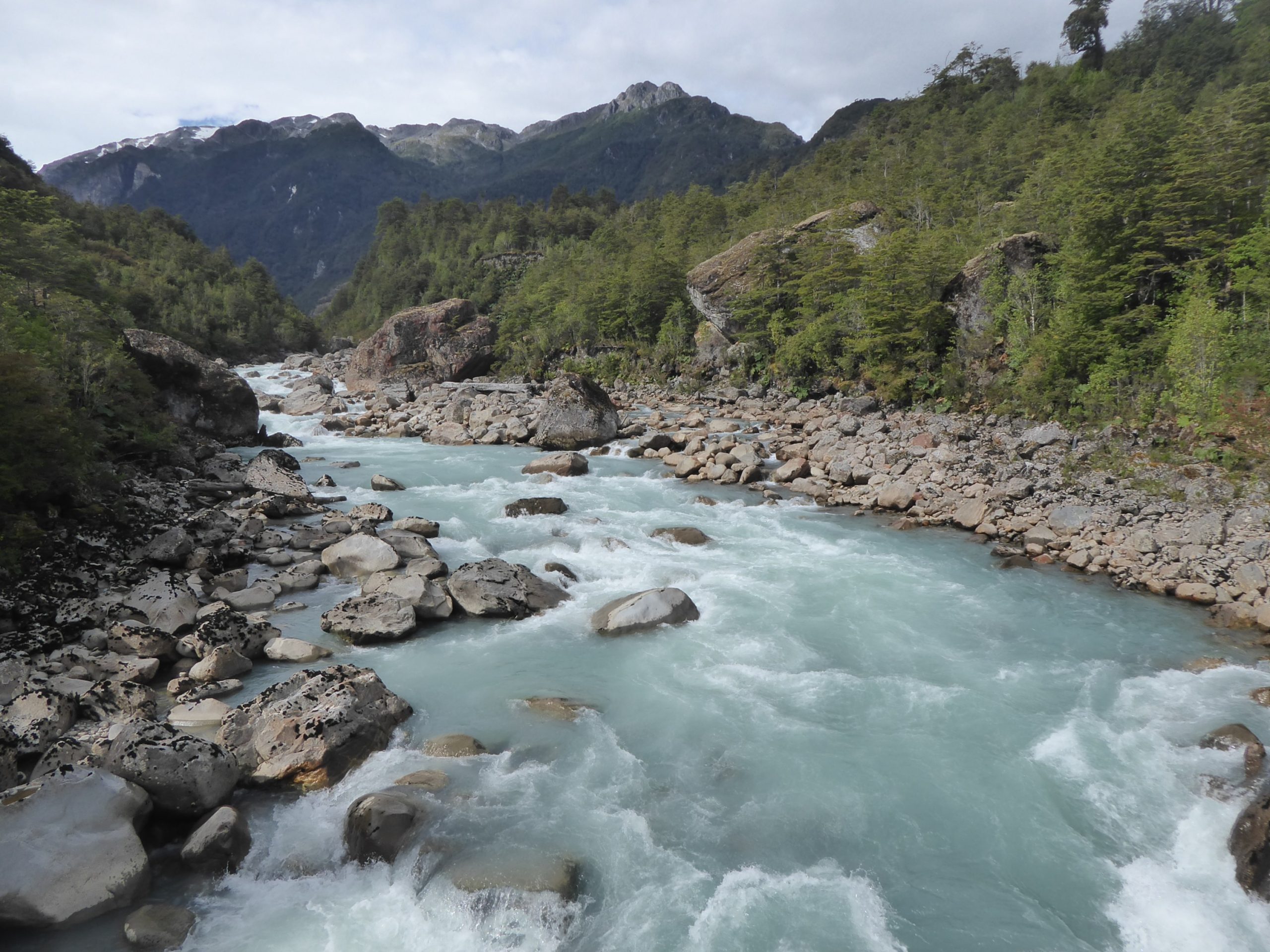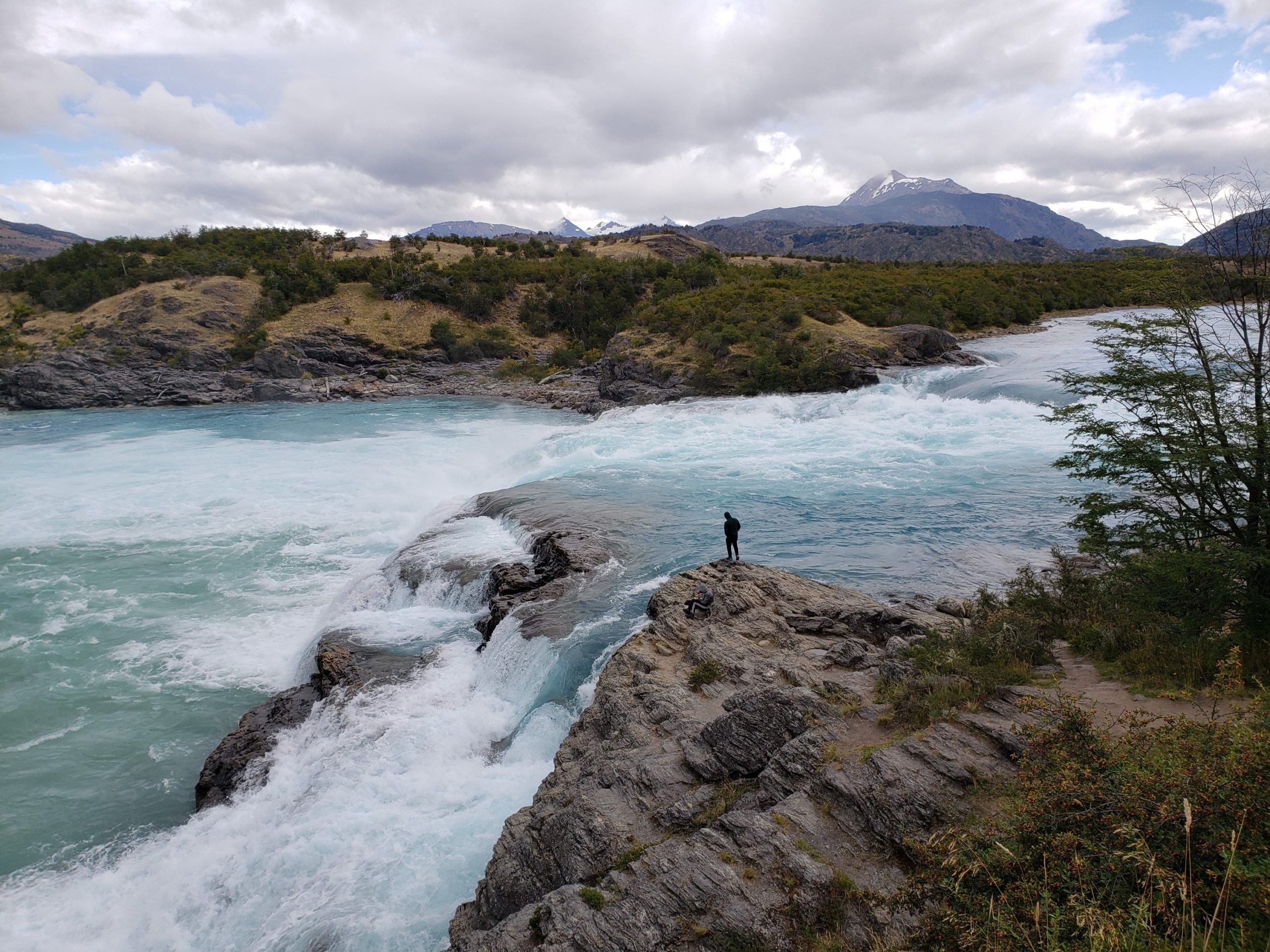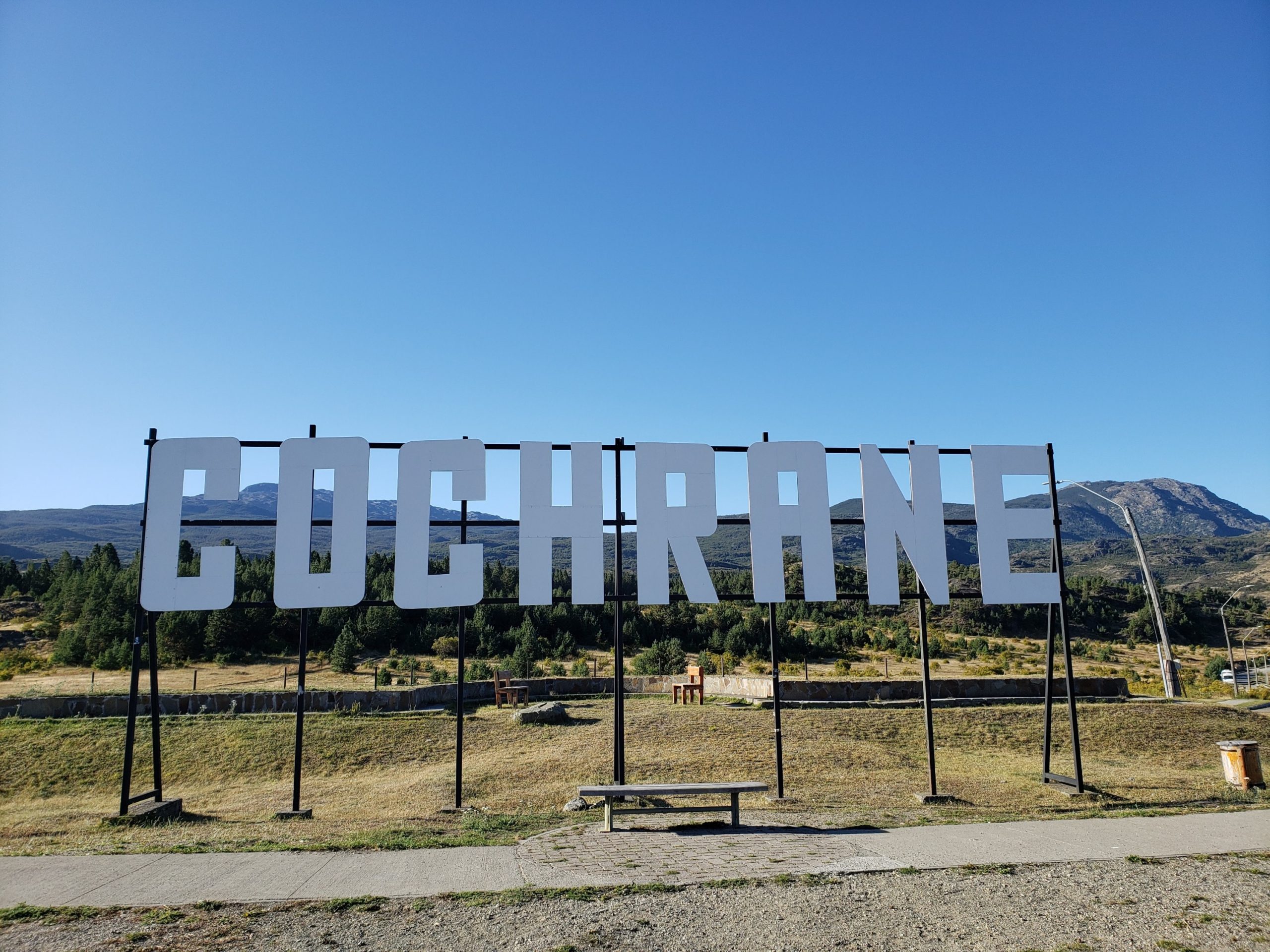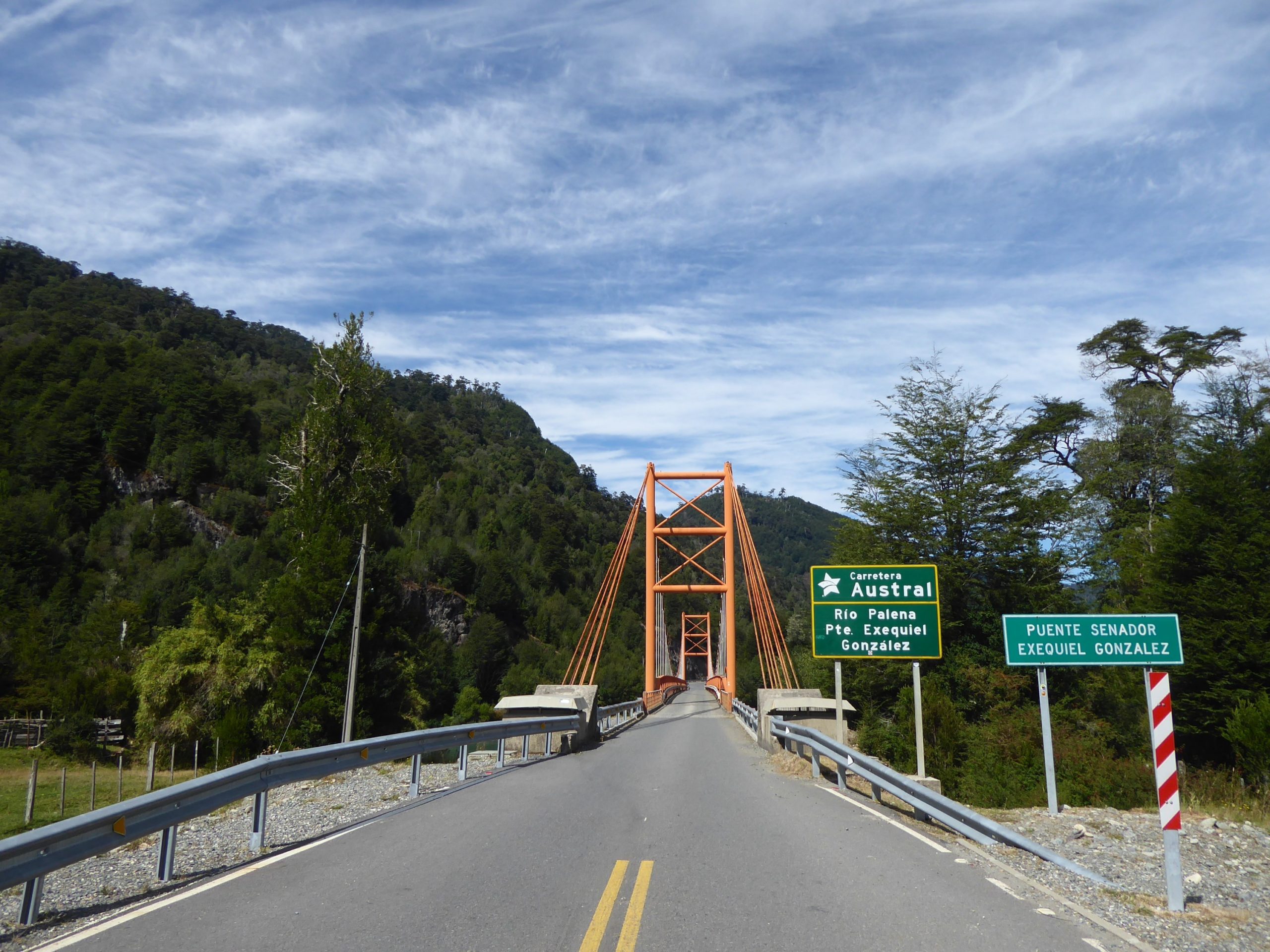
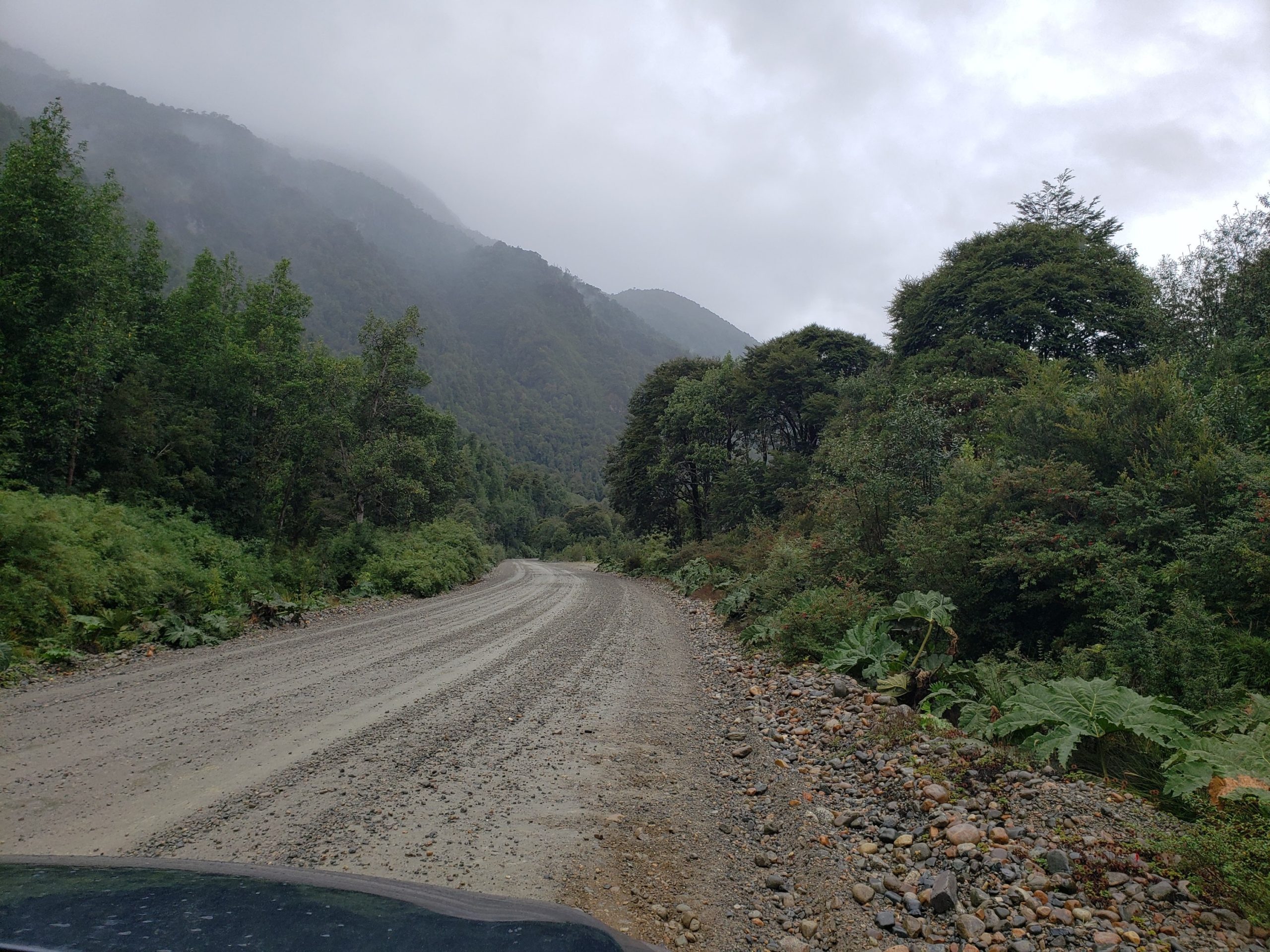
1 March to 22 March 2020
Traveling the length of the Carretera Austral had eluded me back in 2014 and I returned to Chile hoping to make that trip a reality.
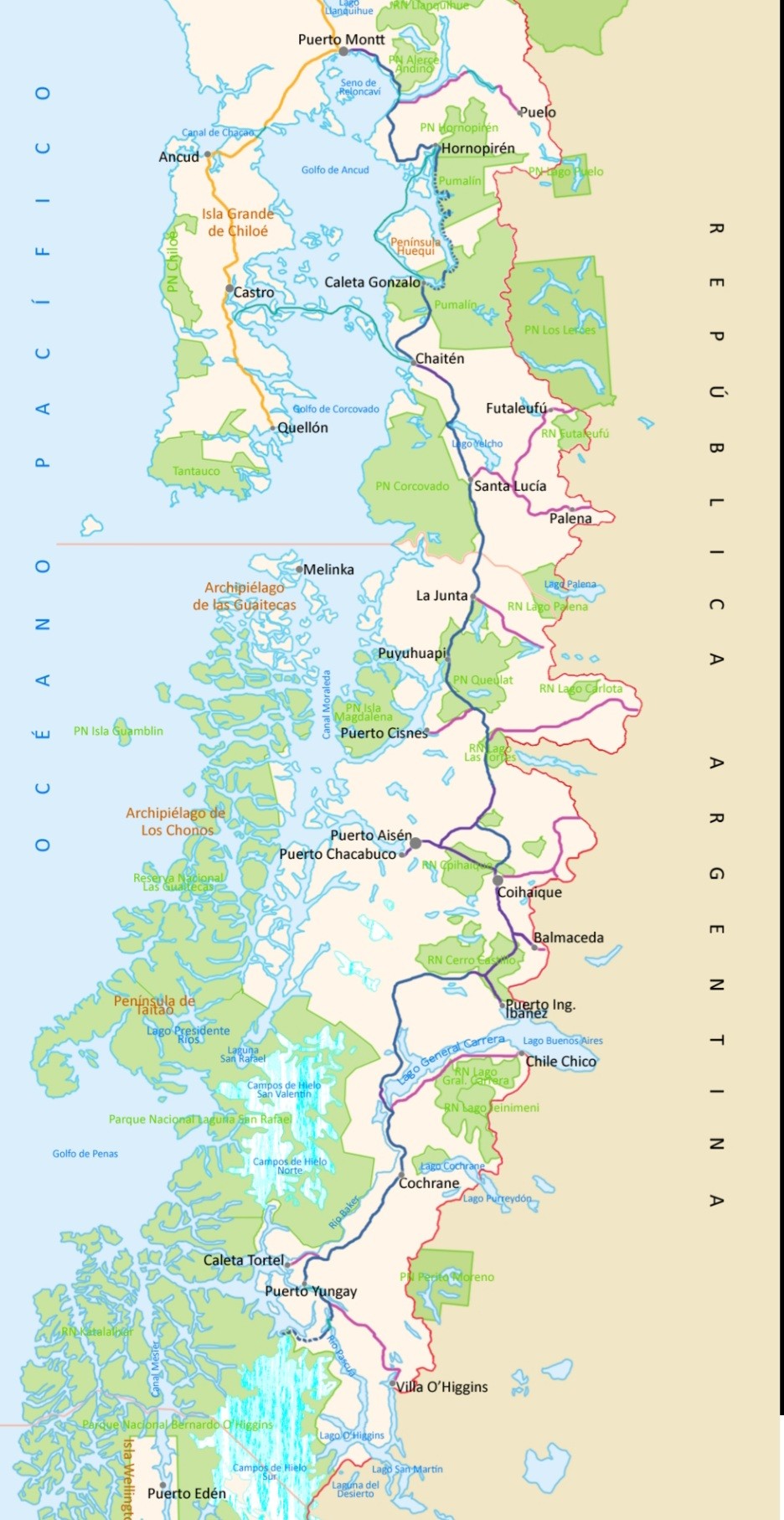
The Carretera Austral begins in Puerto Montt and ends in Villa O’Higgins 1,240 kms (770 miles) away. Its construction began in 1976, largely unpaved, under the leadership of Chile’s notorious dictator Augusto Pinochet, to connect the countryˋs remote communities.
It also, I suspect unintentionally, created greater access to Chileˋs lesser known regions’ extraordinary beauty.
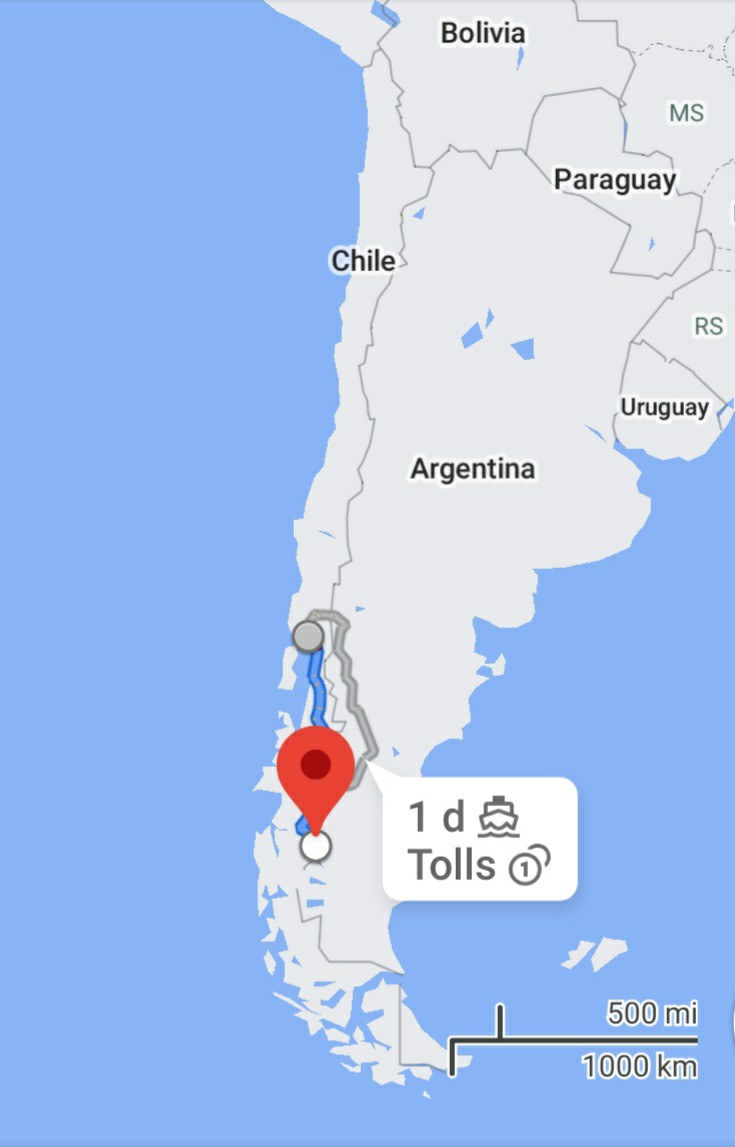
From Auckland my direct flight arrived in Santiago, Chile. I chose to spend a few nights there, adjust to the 16 hour time difference, and enjoy the city. From there I’d be taking another flight down to Puerto Montt where my road trip would begin.
However, when I arrived in Santiago I was shocked to return to a city I barely recognized.
Social protests had been going on for months resulting in mass demonstrations and violence. Buildings, including the magnificent Museo Nacional de Belles Artes, had graffiti spray painted on their walls. Shops were boarded up. I rethought my wanderings and restricted my strolls to the neighborhoods I knew. There was tension in the air.
On my first night a fire was set in the street below my apartment. A small group of protestors and onlookers cheered. Passing cars honked their horns.
Then a tank rolled up, put out the fire, and rolled on.
The following day I ventured over to the nearby GAM, another favorite museum of mine. The outer walls were covered with signs.
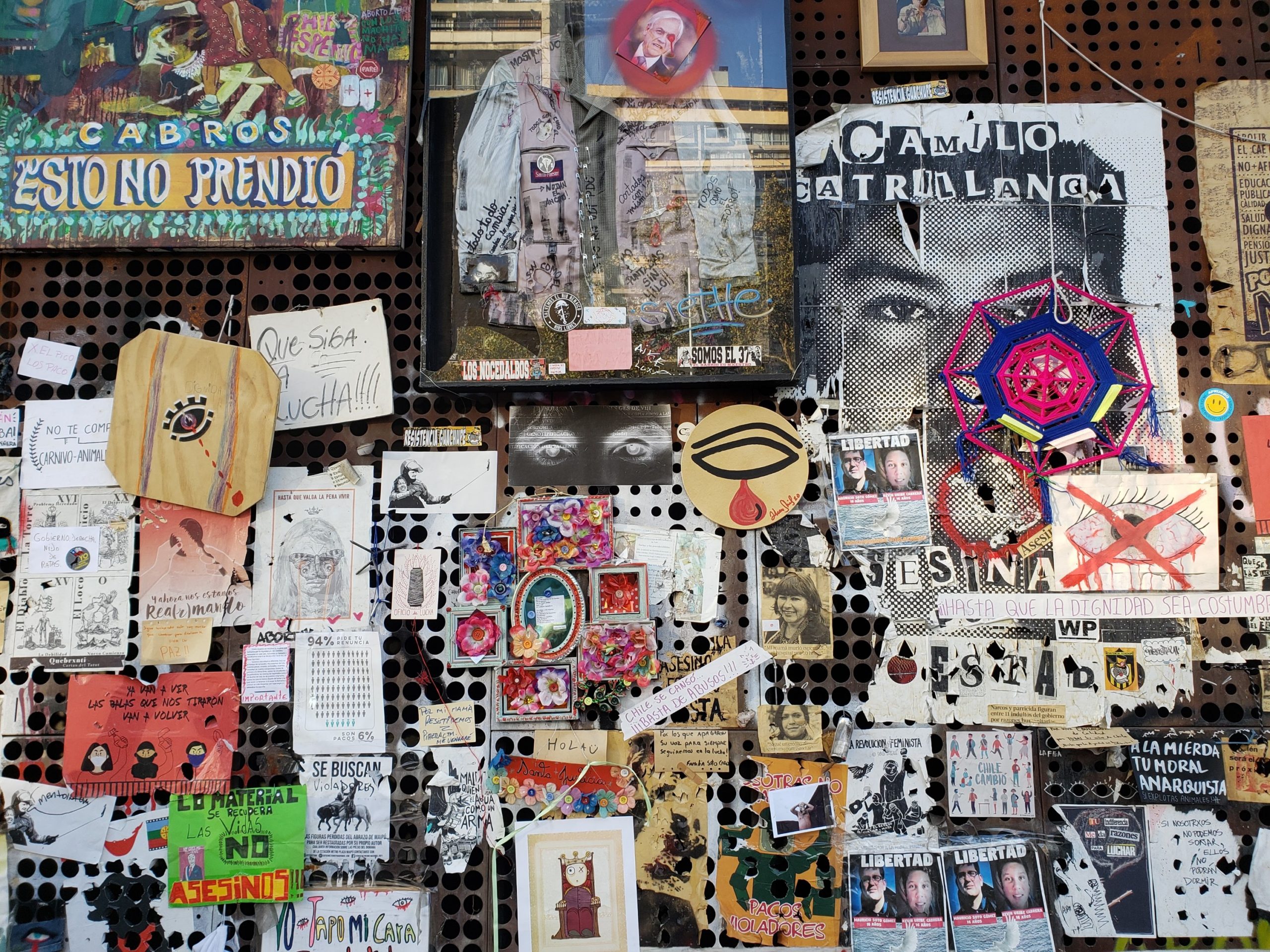
Student protests had broken out in October 2019, prompted by Santiago’s public transportation fare hikes. High costs of living, huge economic disparities, and other social concerns fueled the anger. Demonstrations, strikes, protests, conflicts, and violence continued for months.
As a result, a referendum was called, “Should Chile replace the 1980 constitution enacted under Pinochet? 78% voted YES. It was a major victory, but frustration with the system remained, as did the protests.
———
I’d met Yara back in 2016 during her stay in New York. We’d hit it off and been keeping in touch after her return to Chile. We arranged to travel part of the Carretera together. She had two weeks free. I’d pick her up in Chaiten.
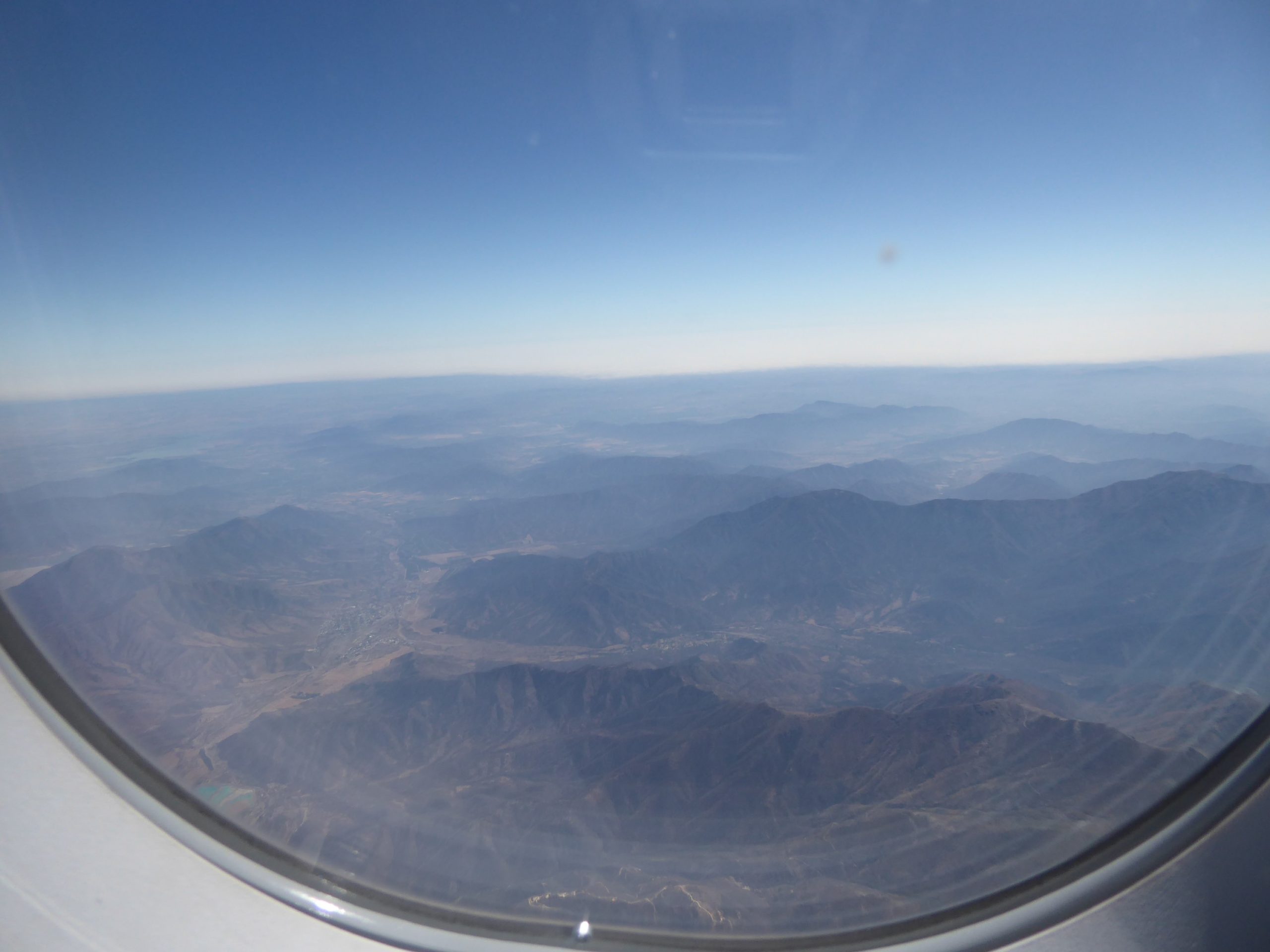
I set off from the Puerto Montt airport in a rented SUV. After months of driving in Japan, Australia, and New Zealand, I had to remember to stay on the right side of the road.
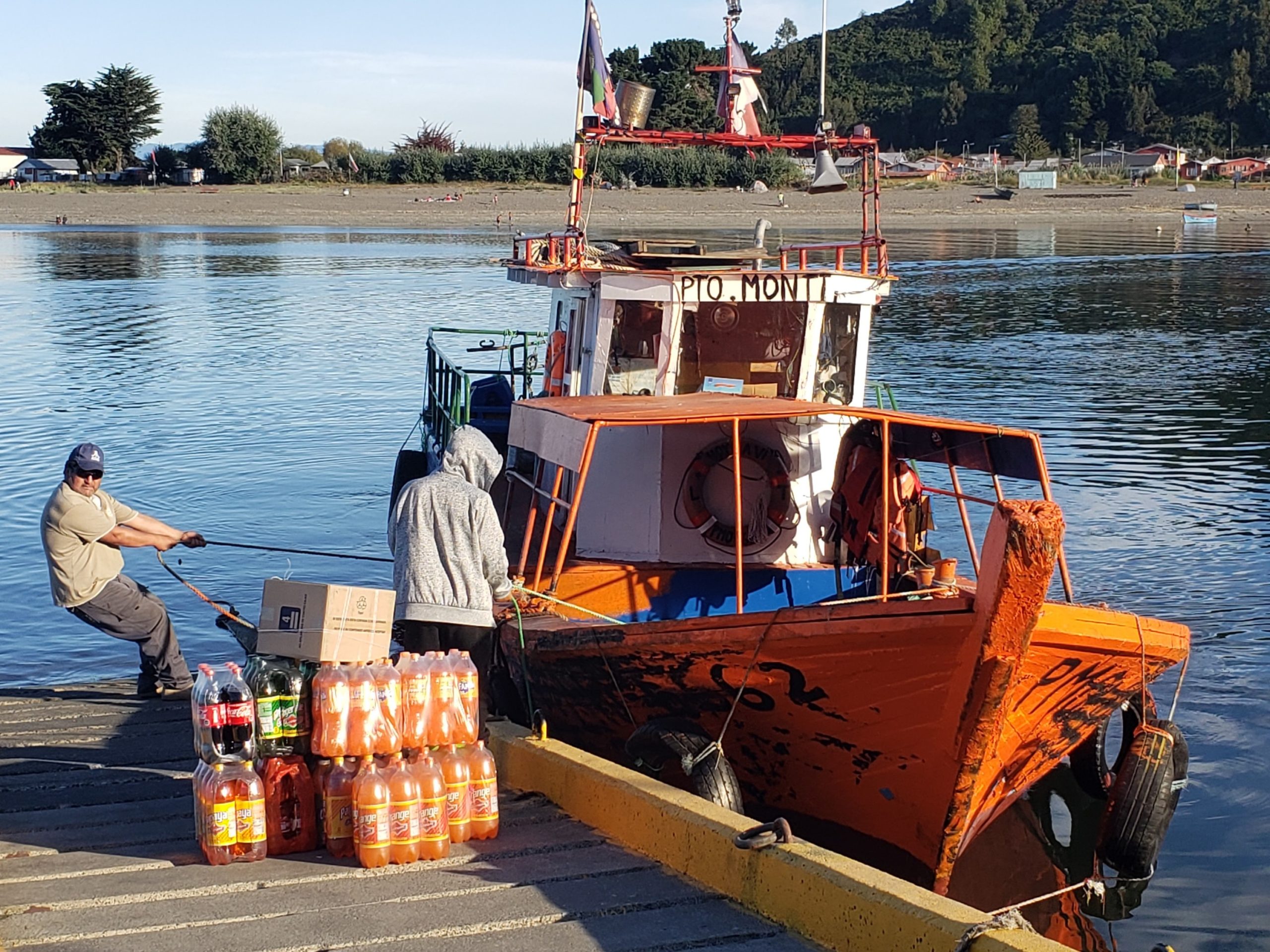
Puerto Montt seemed even grittier than I remembered it, but still retained its charm. I particularly enjoyed revisiting the small shops selling only one kind of cheese or hand crafted items.
The route from Puerto Montt to Chaiten meant taking some ferries and I was delighted. Ever since taking the Staten Island Ferry as a kid I was hooked.
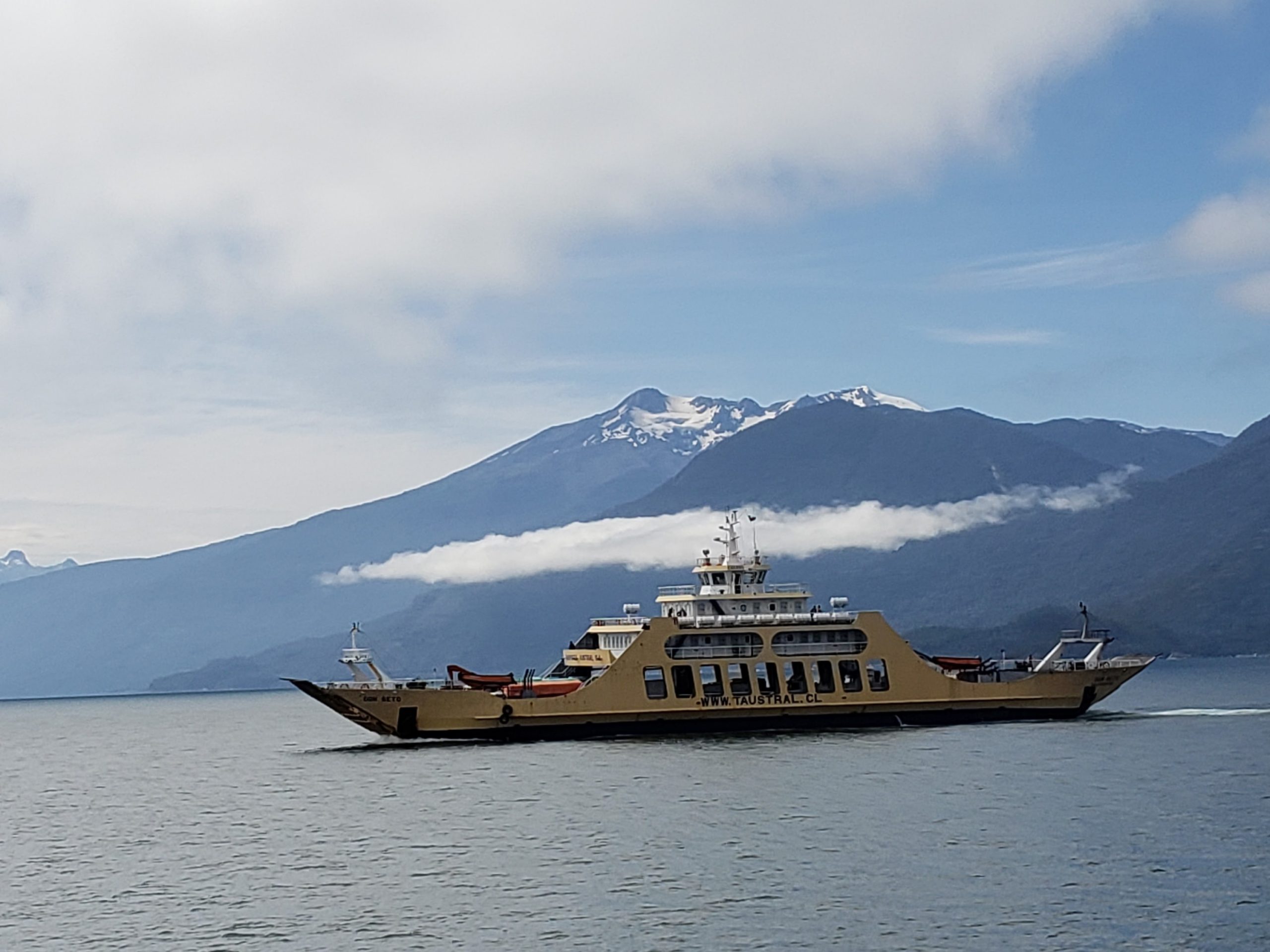
Hiking in the Pumalin National Park was another early highlight. I was grateful to Douglas Tomkins, founder of The North Face and Esprit, for establishing several national parks, including Pumalin, in Patagonia. Patagonia remains one of the most beautiful places I’ve ever seen.

It felt great to be back in Chile with its welcoming people and the chance to speak Spanish.
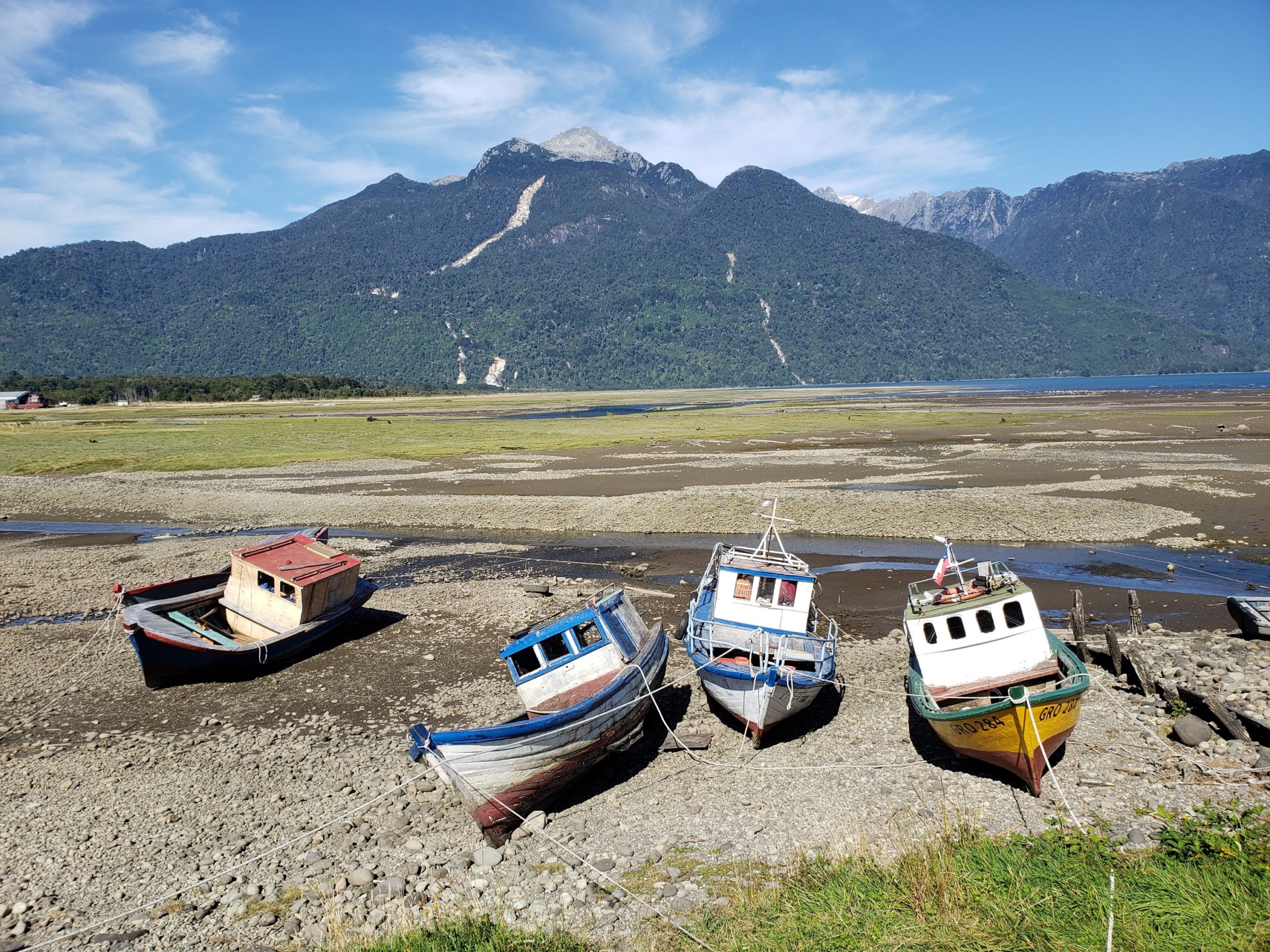
As planned, I met Yara in Chaiten. We immediately fell into an easy rhythm of shared moments.
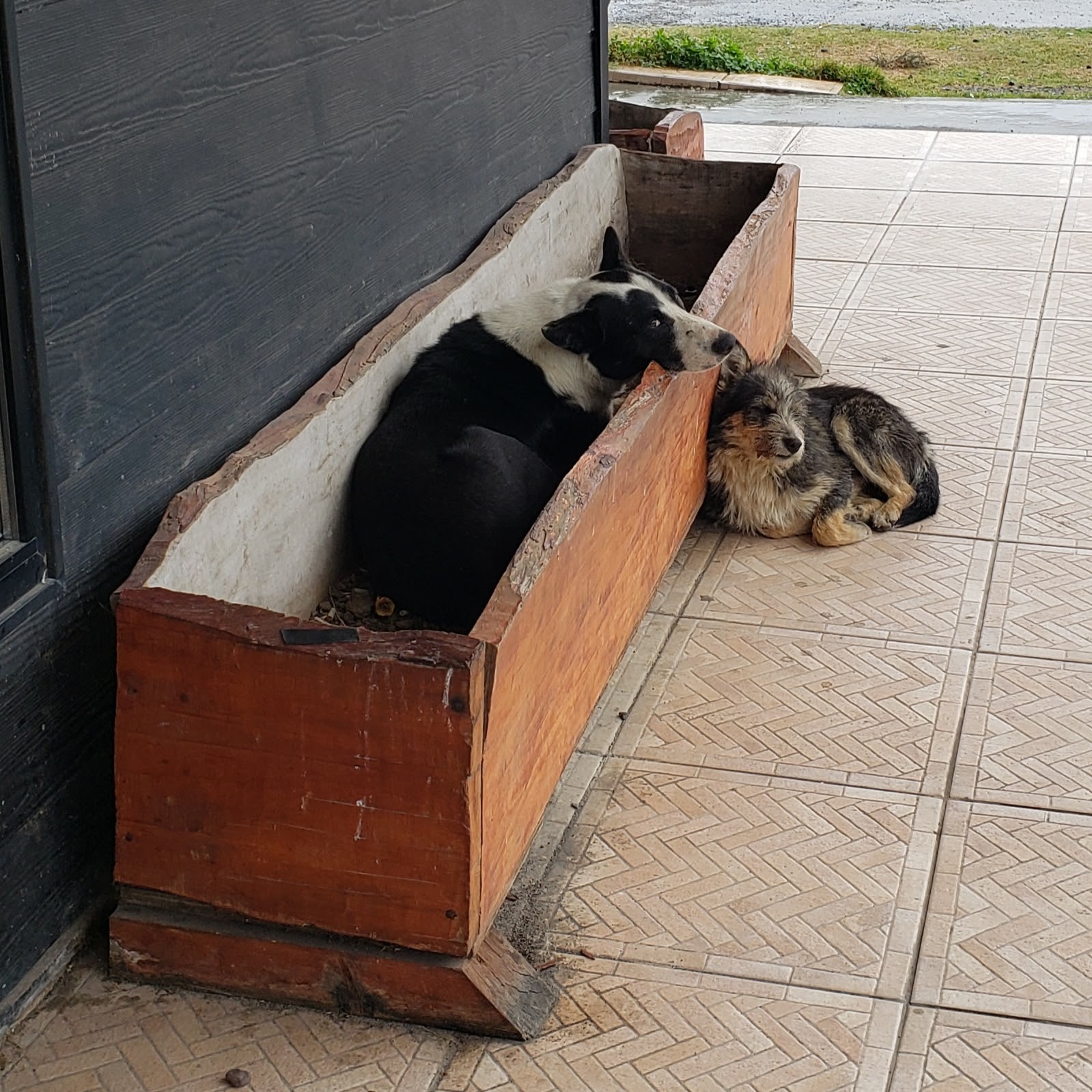
From Chaiten, we headed to Futaleufu, justly renown for its river.
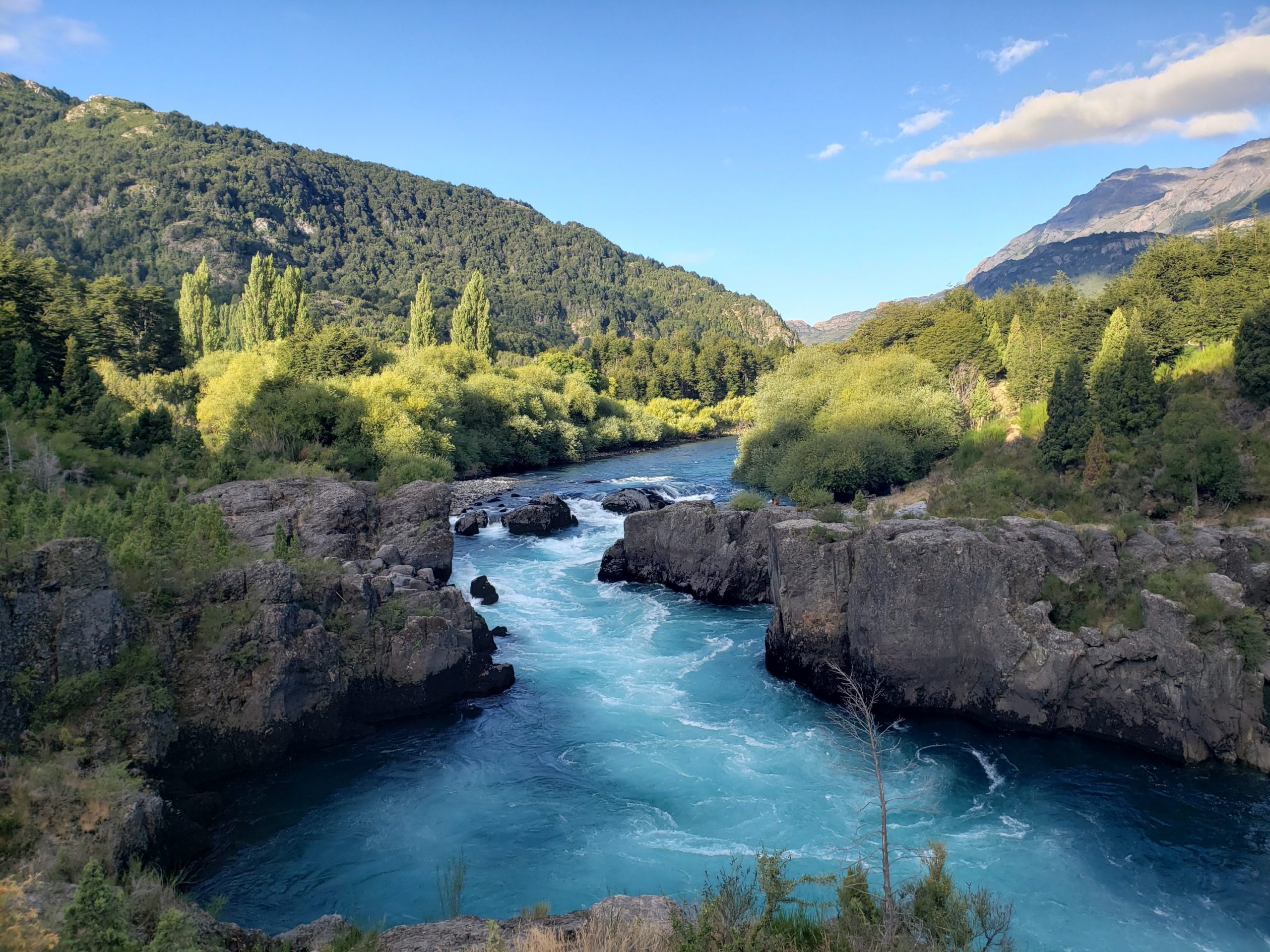
Road trips keep you in the moment. The only thing that matters is the here and now. And the here and now were splendid.
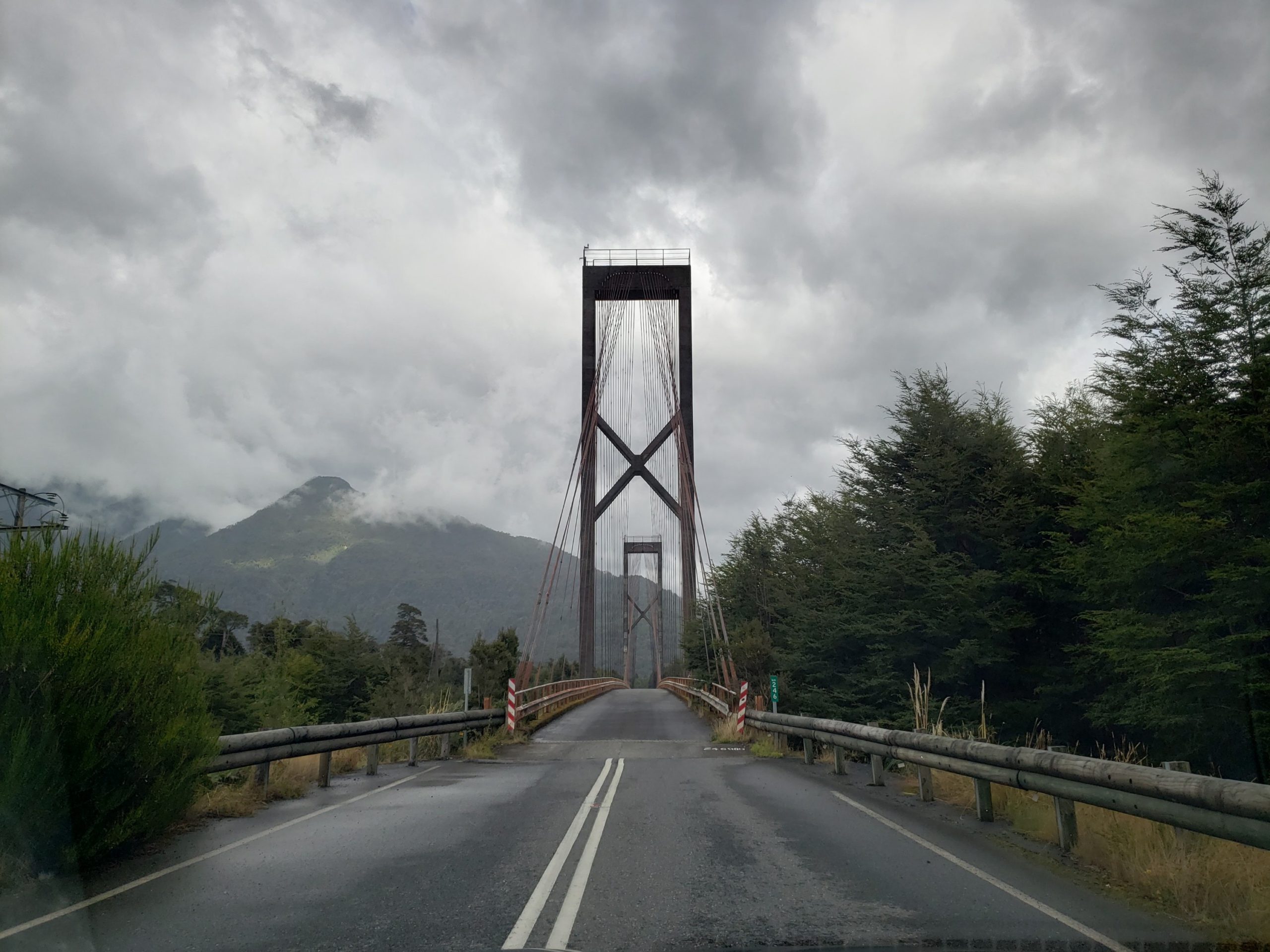
Hitchhikers were common and the car was often full with passengers and their bags. The travelers’ tales were as varied as the places they came from.
Others chose to travel the Carretera Austral on a different set of wheels.
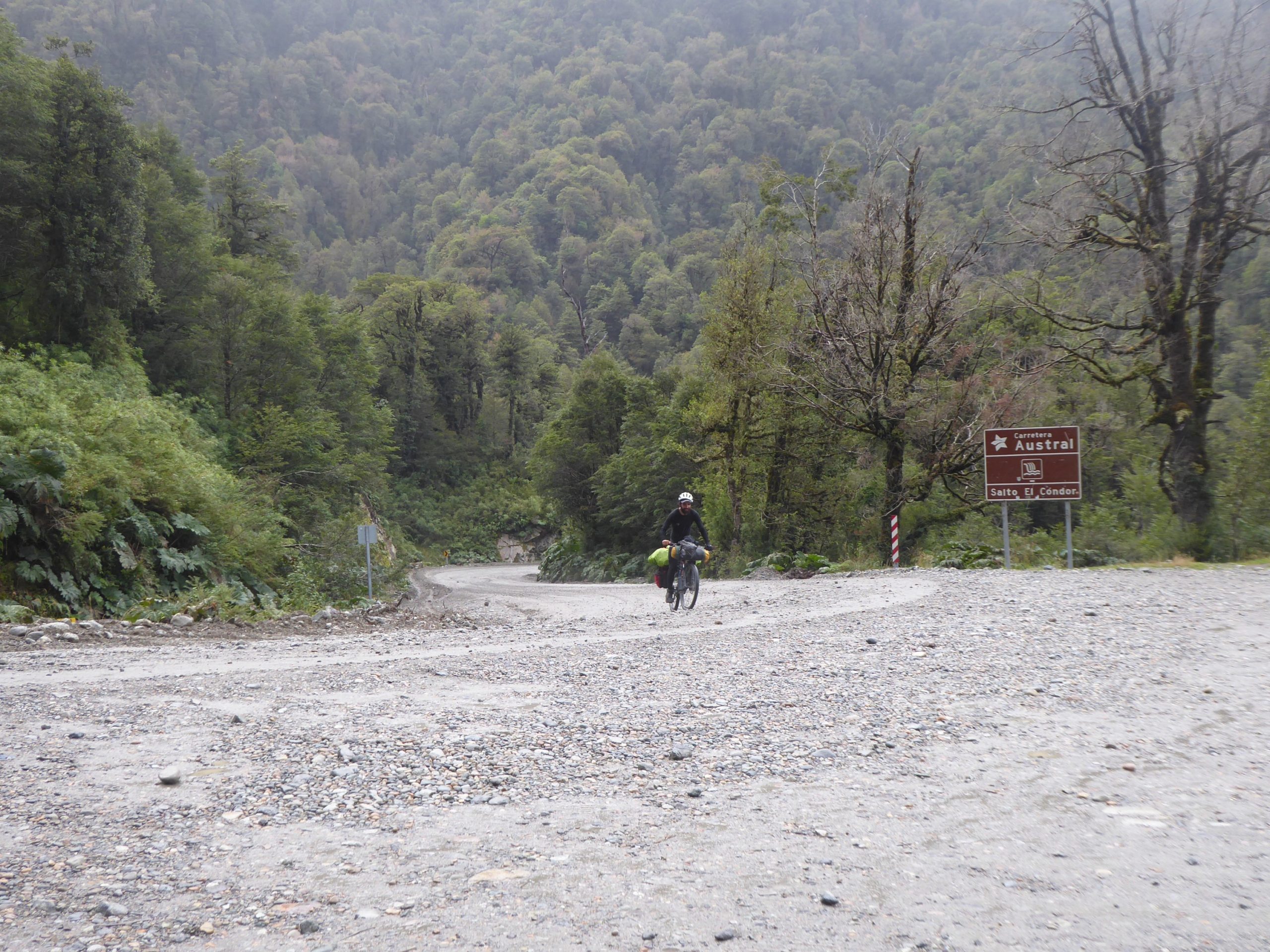
The number of enticing places seemed endless, but we managed to visit quite a few.
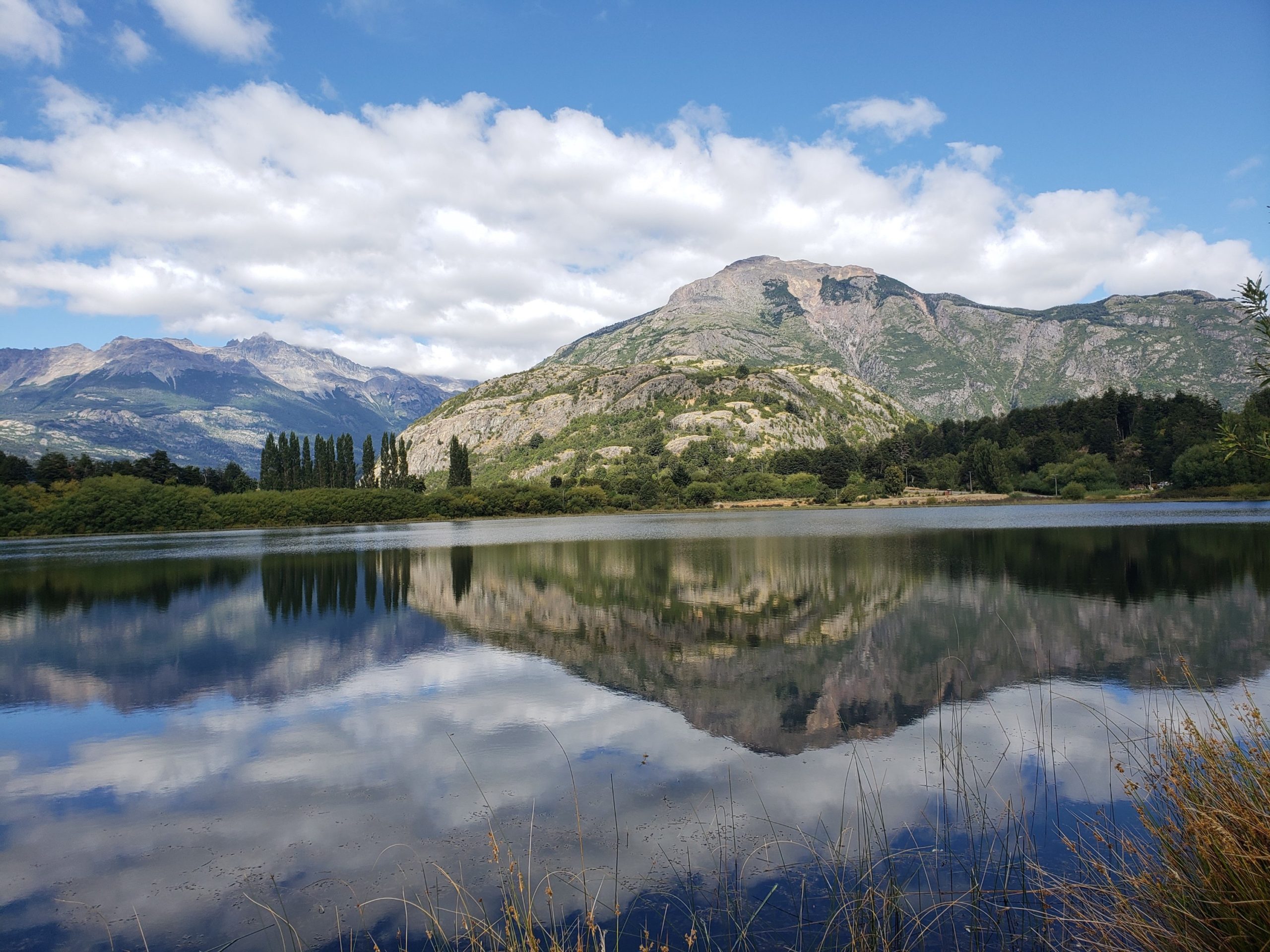
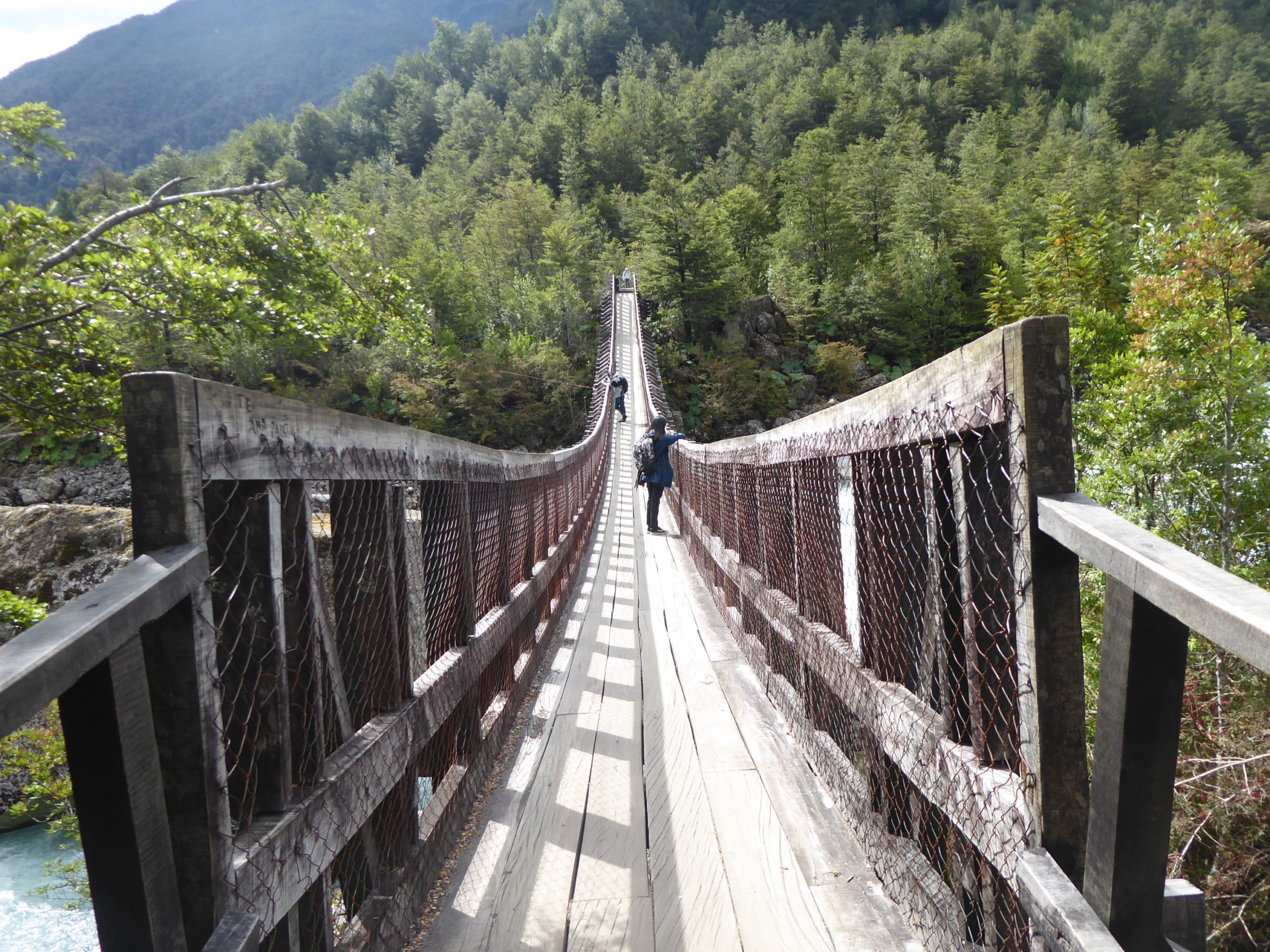
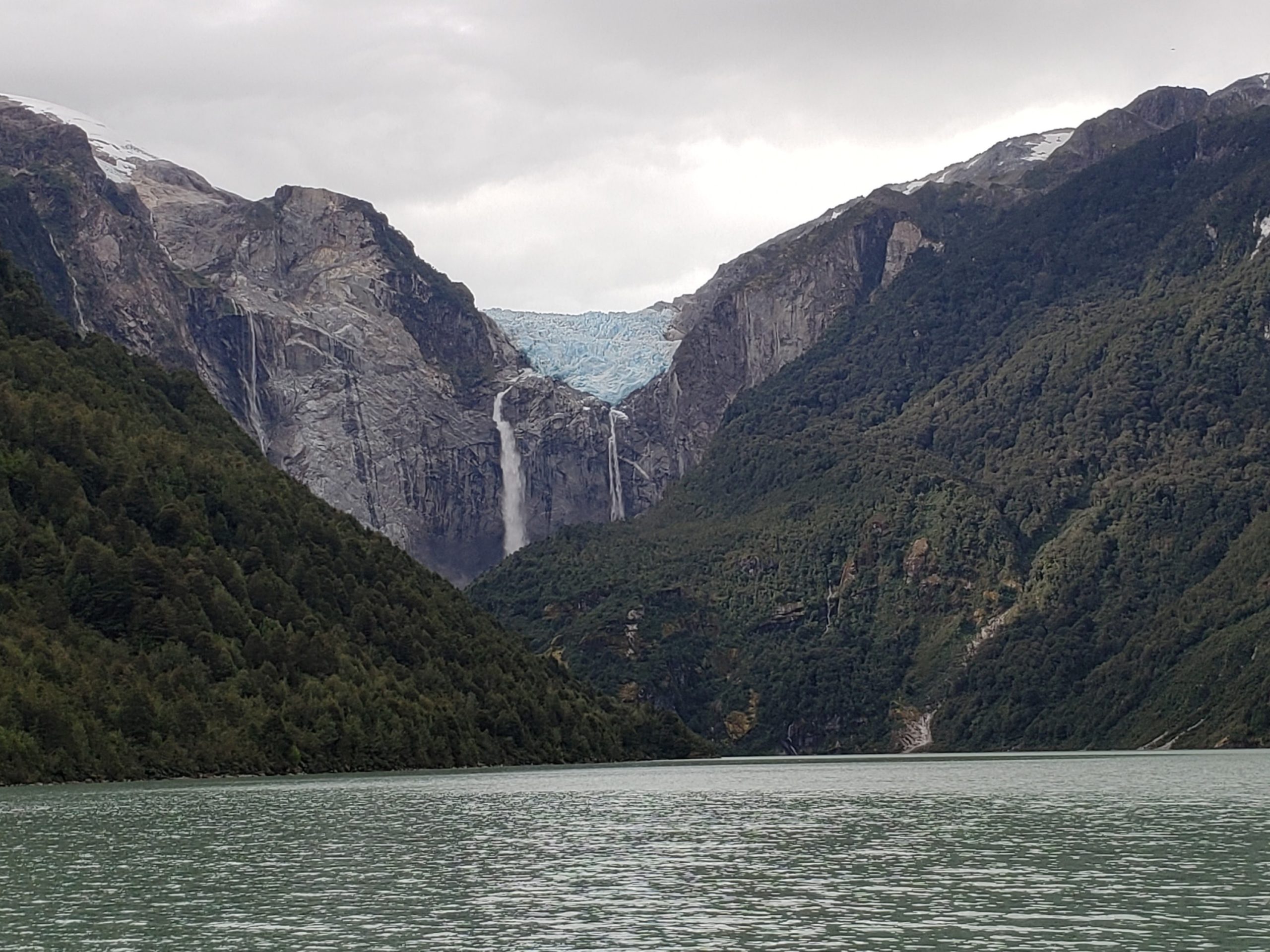
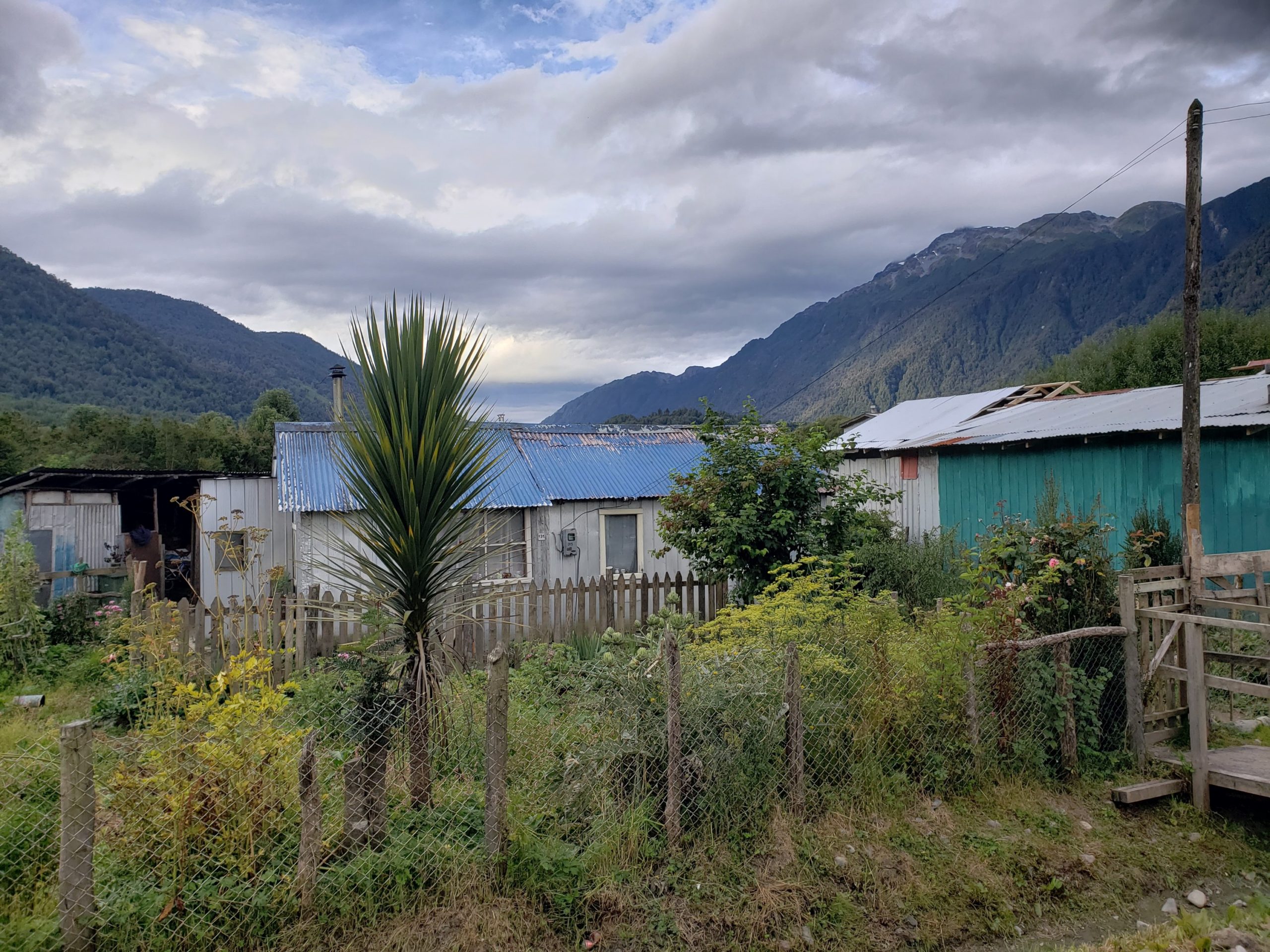

Finding lodgings was never a problem. Some of our choices were comfier than others, but the wood burning stoves, kitchen facilities, and beds were always adequate, and welcome after a long day.
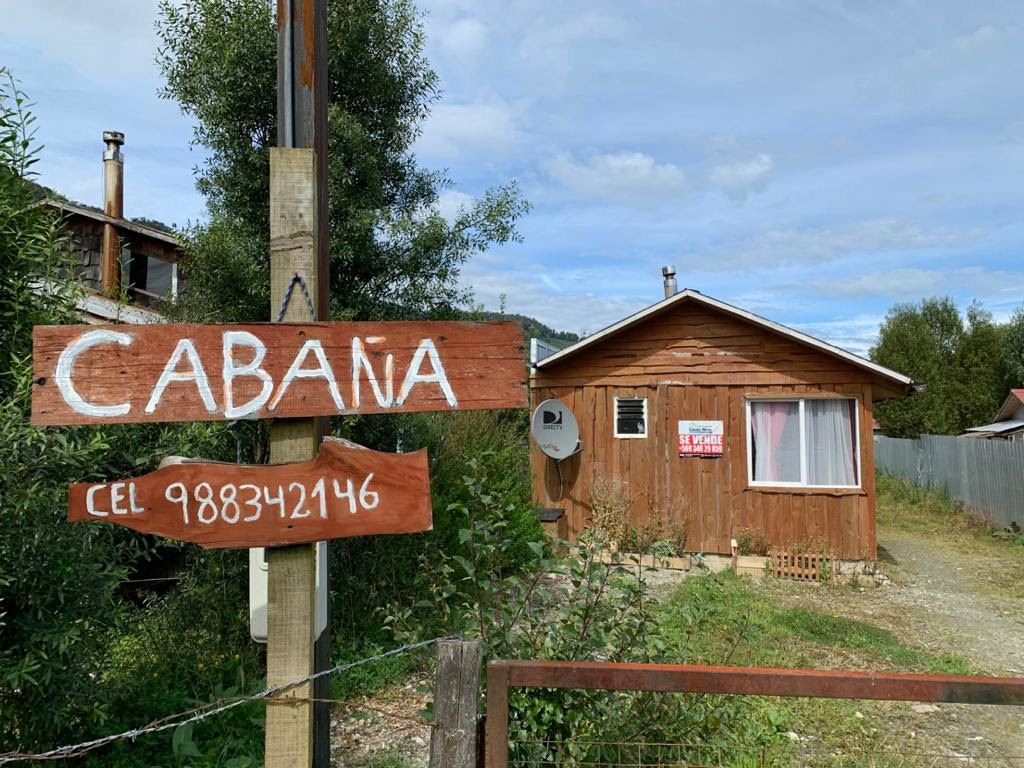
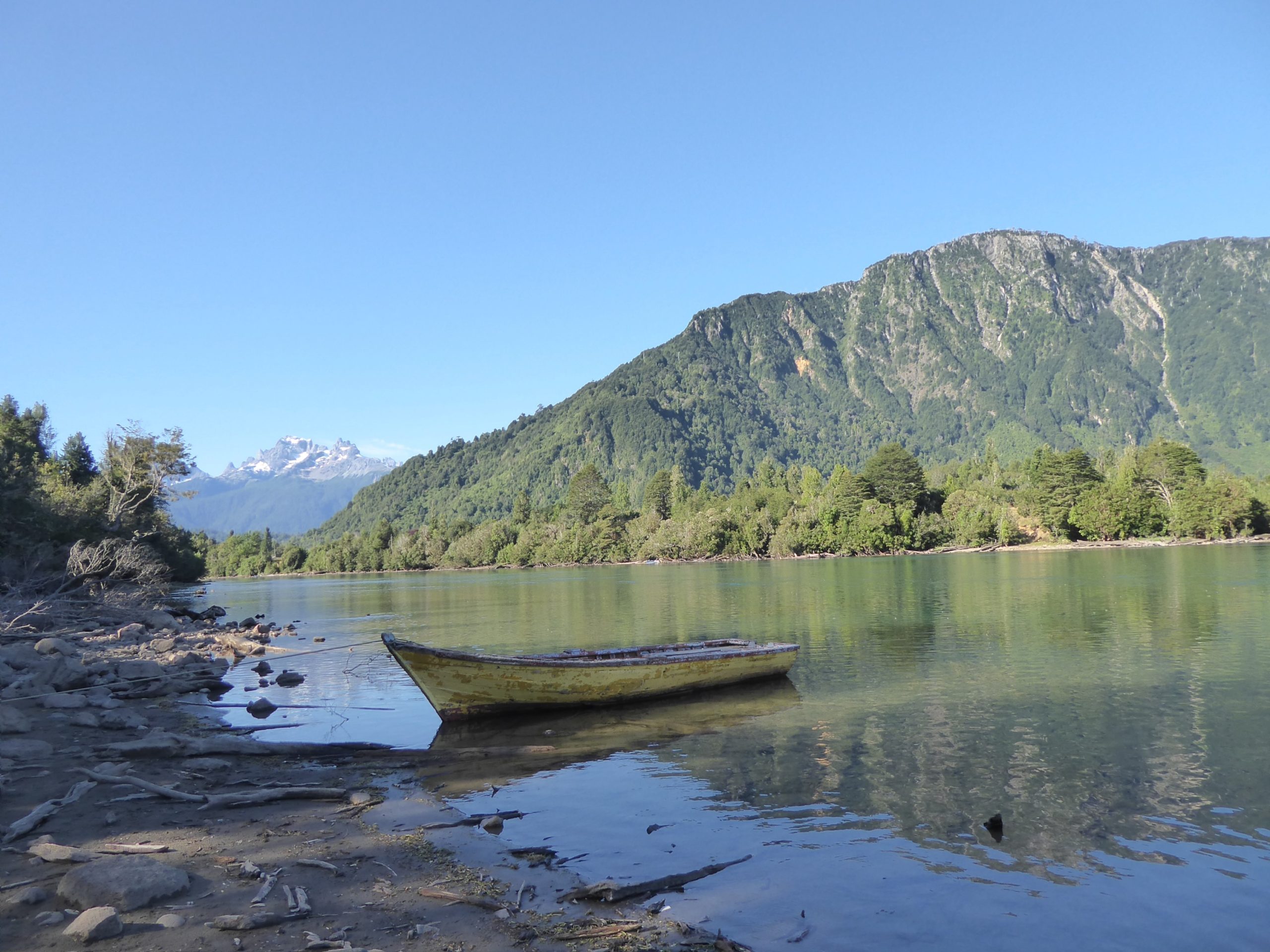
Despite the beauty, the region’s hazards could not be ignored. The threat of earthquakes, landslides, and volcanic eruptions is ongoing, but so is the resiliency of its people…
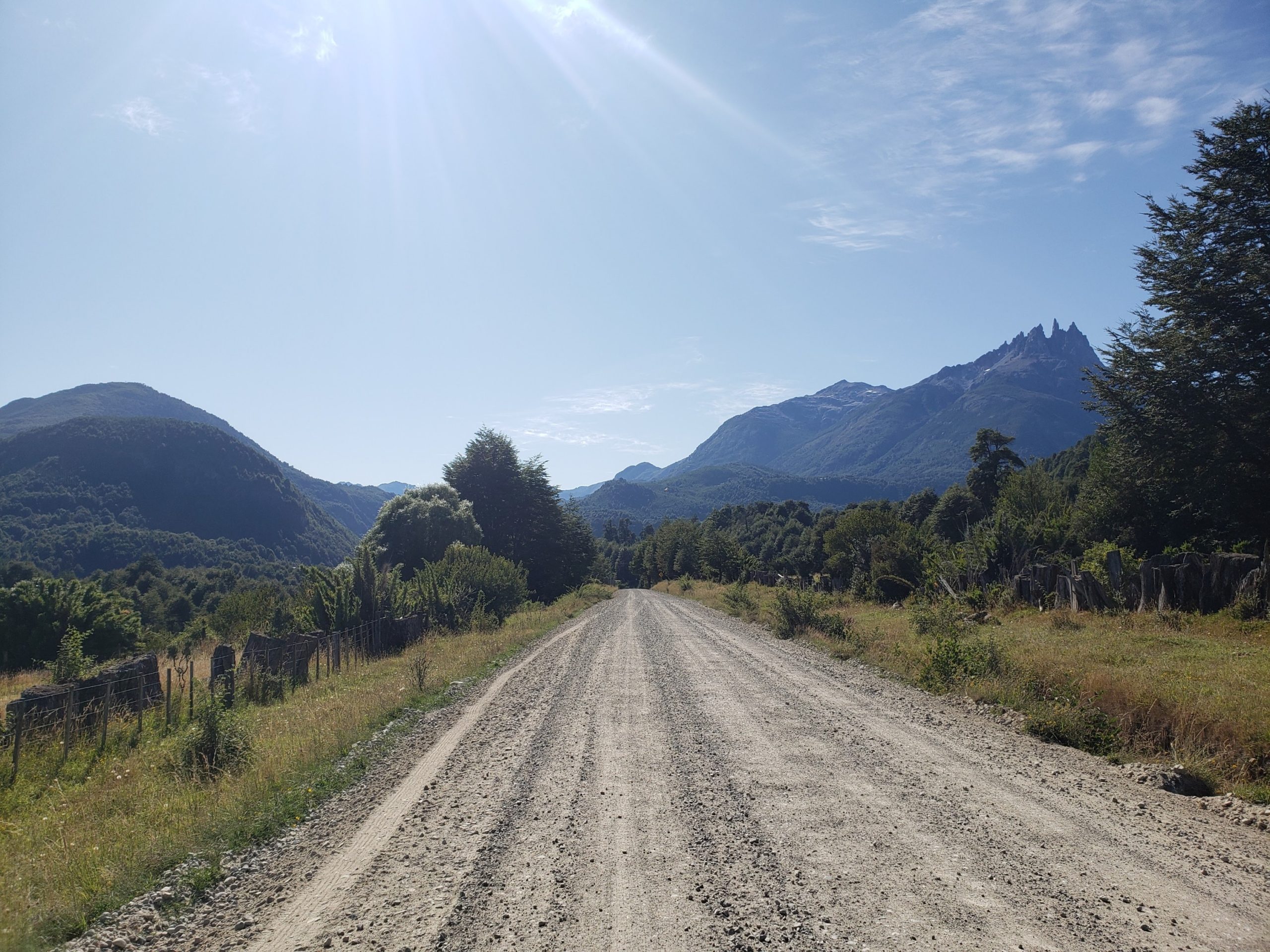
…and nature.
While traveling, it had been blissfully easy to escape world events.
Then came news that the NBA and Metropolitan Opera were cancelling their seasons. New York City was the epicenter of the coronavirus. I was stunned and shaken. I’d speak with loved ones. Knowing they were well was a huge relief.
For us, the coronavirus still seemed far away. We continued south as planned.
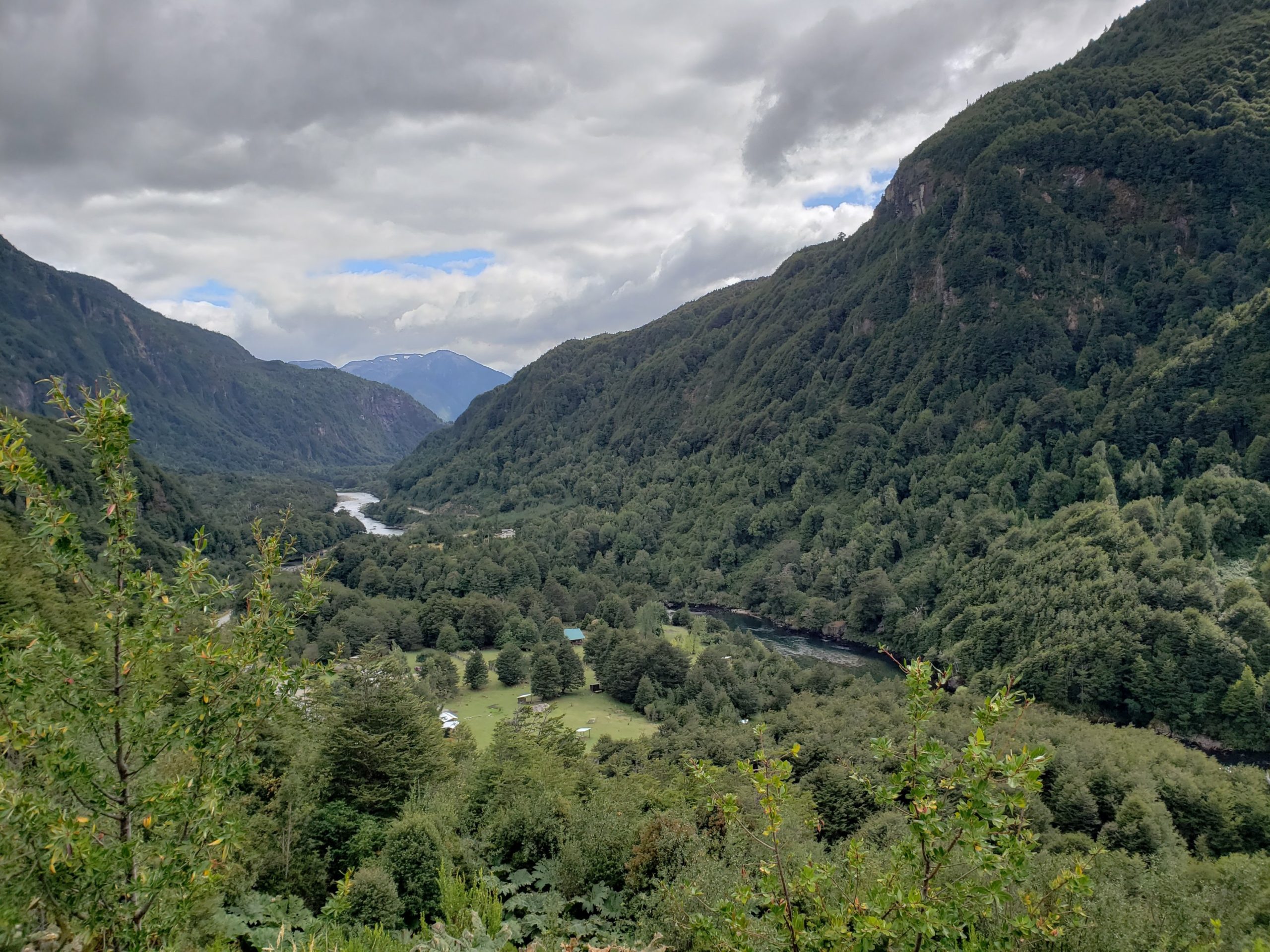
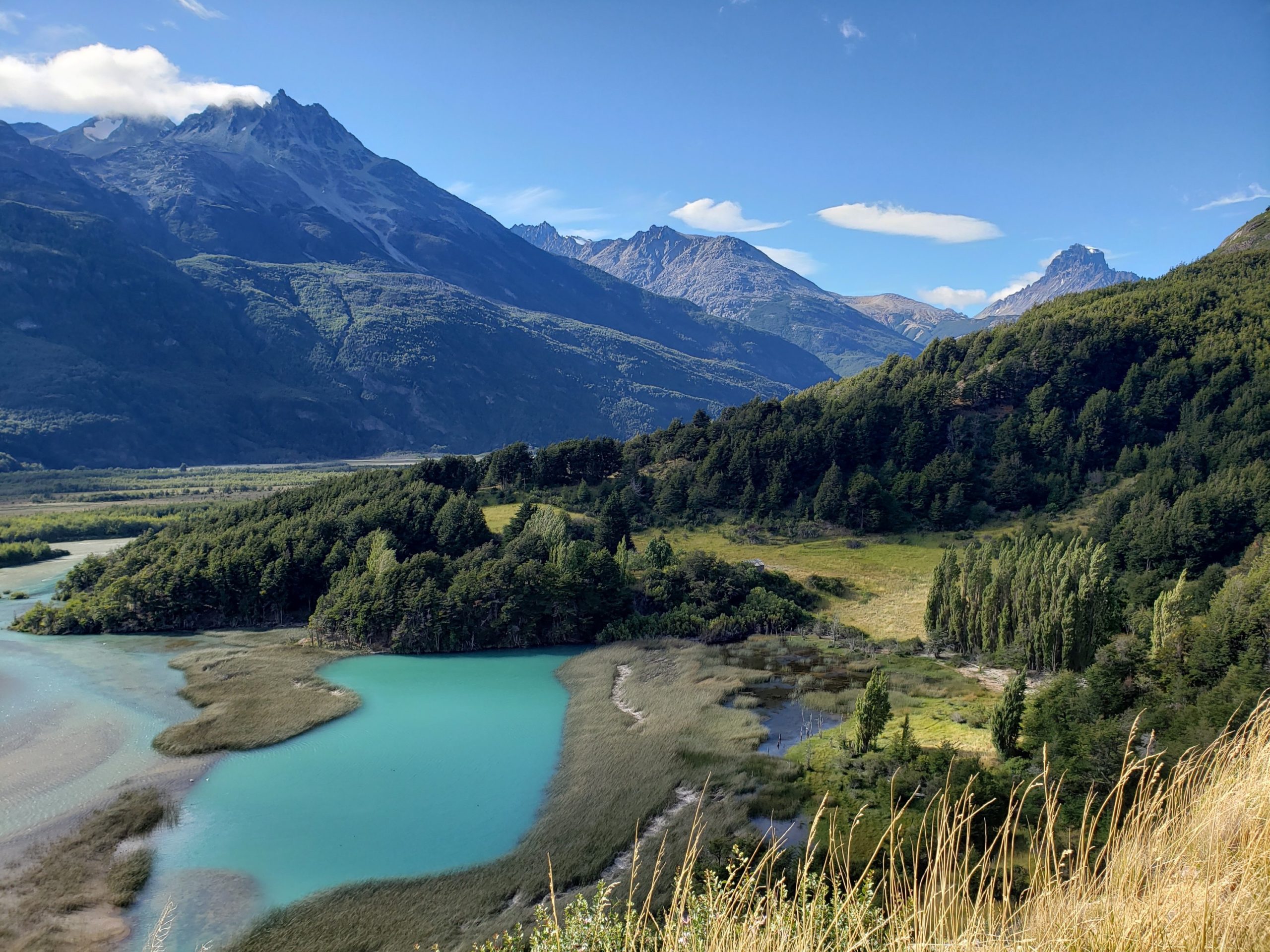
I’d read about a small fishing community, Puerto Gaviota, founded in the 1980’s during the codfish boom, on the Isla de Magdelena. It sounded extremely appealing, including the ferry ride we needed to get there.
While in Puerto Cisnes, Yara and I made arrangements, through a network of locals, to stay there with a local fisherman.
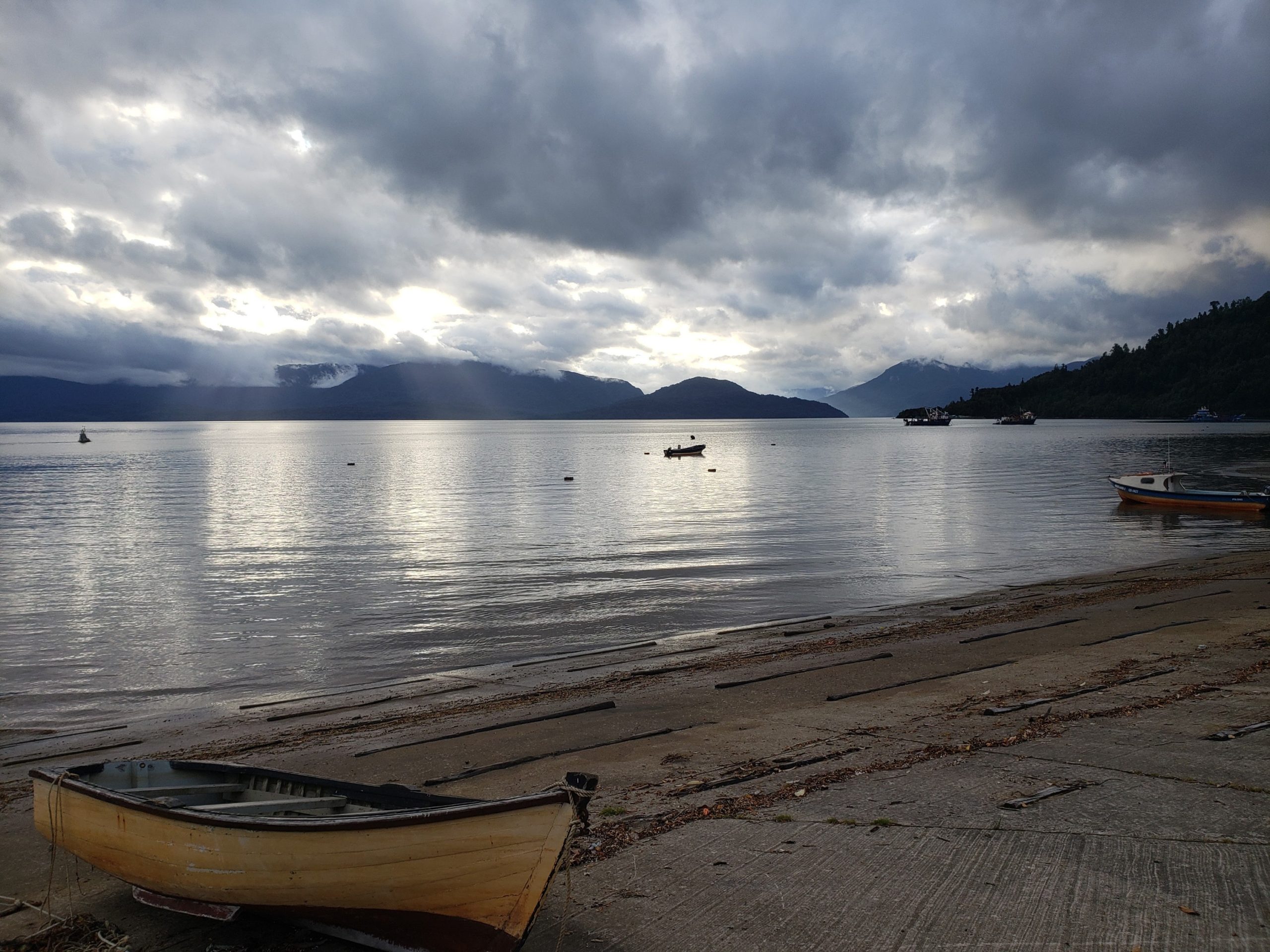
The ferry ride, did not dissapoint. We were treated to an entire rainbow after a short rain, a leaping orca (at least I think/hope so), and the changing hues of an expansive sky.
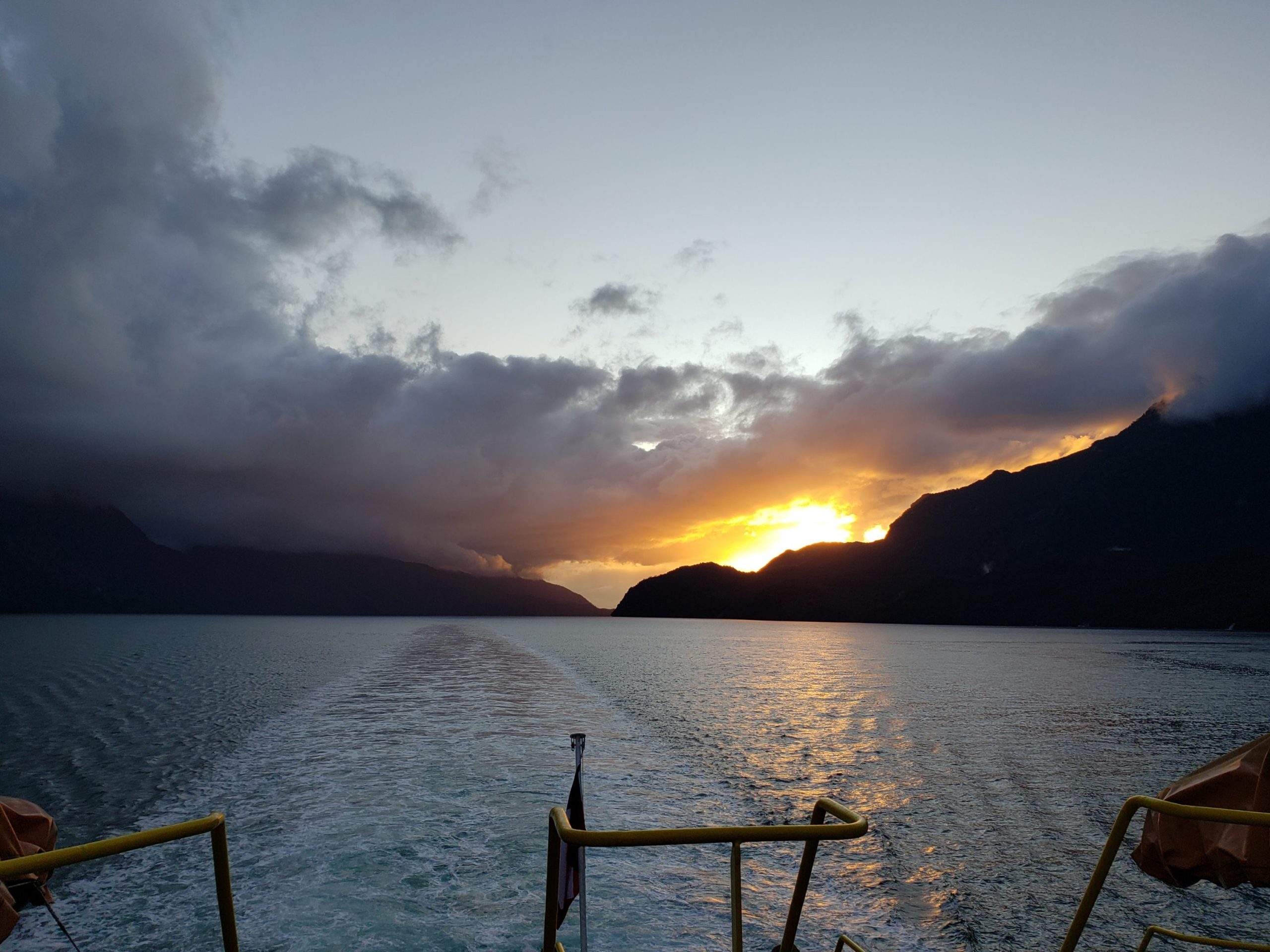
Puerto Gaviota seemed untouched by time. There was no cell phone service, perhaps no internet either.
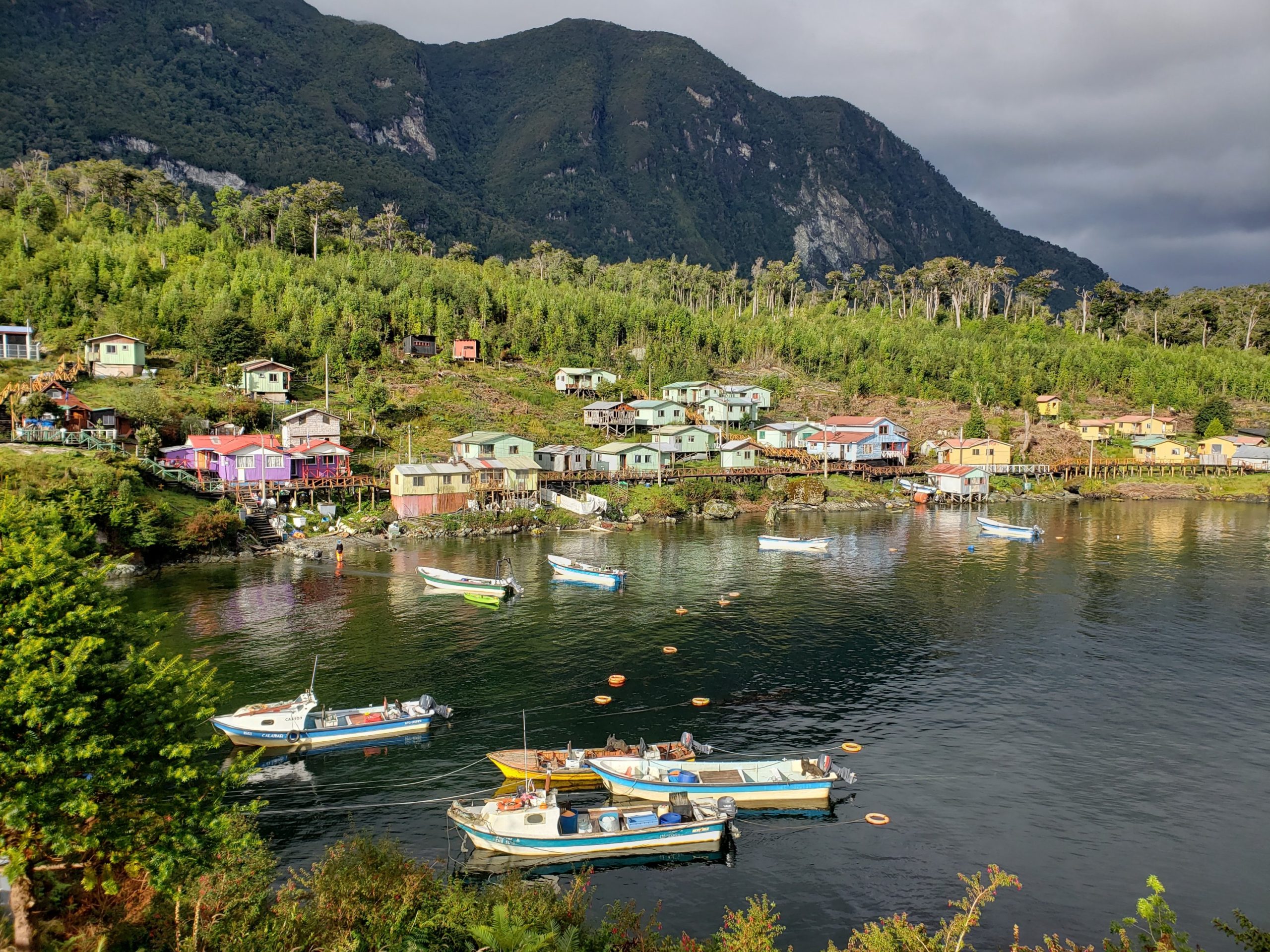
Yanko’s years of pulling up heavy fishing nets had left his arms incapable of continuing his trade. Fortunately for us he began renting rooms in his home and baking scrumptious breads and pies in his wood burning oven instead.
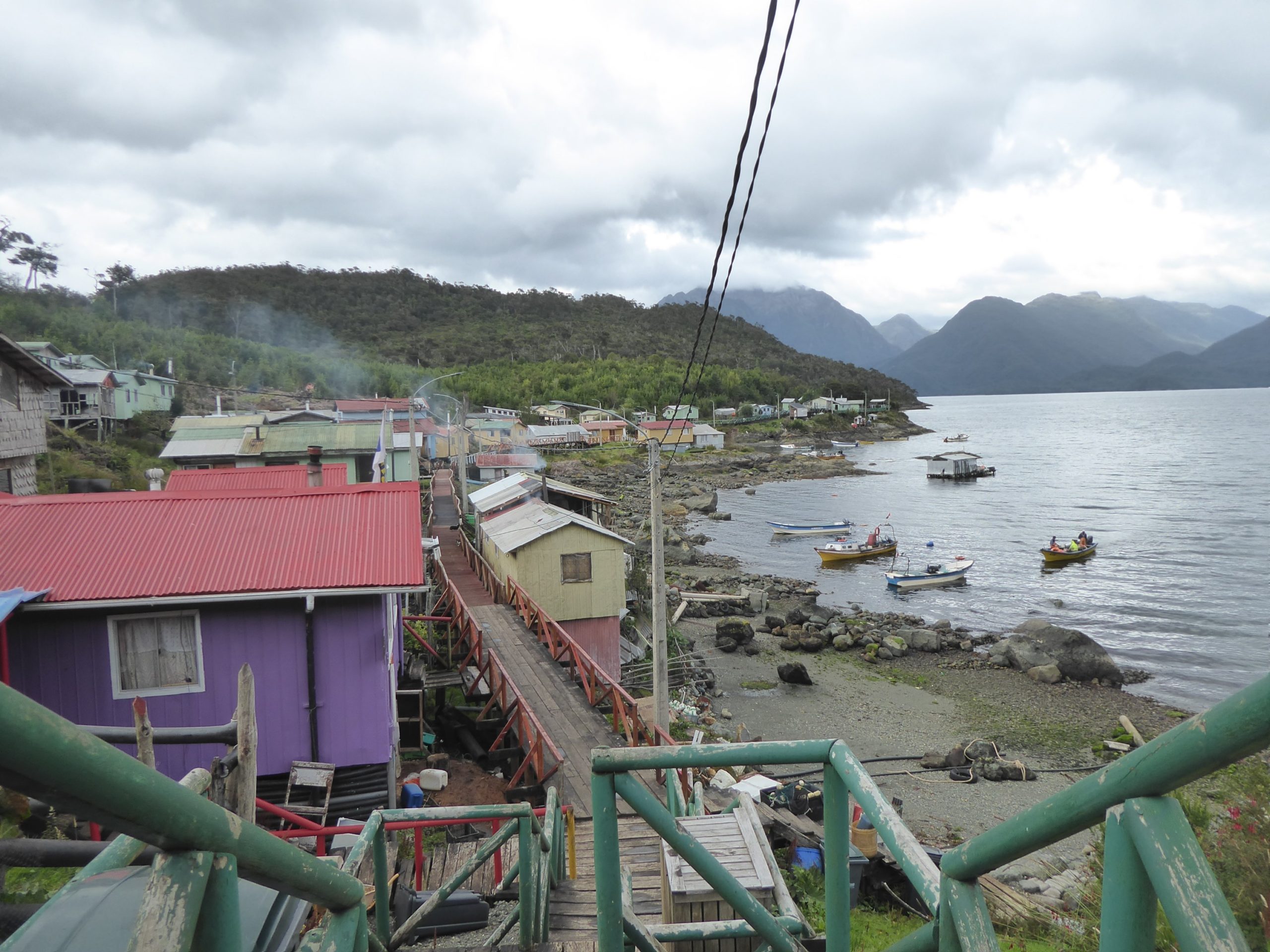
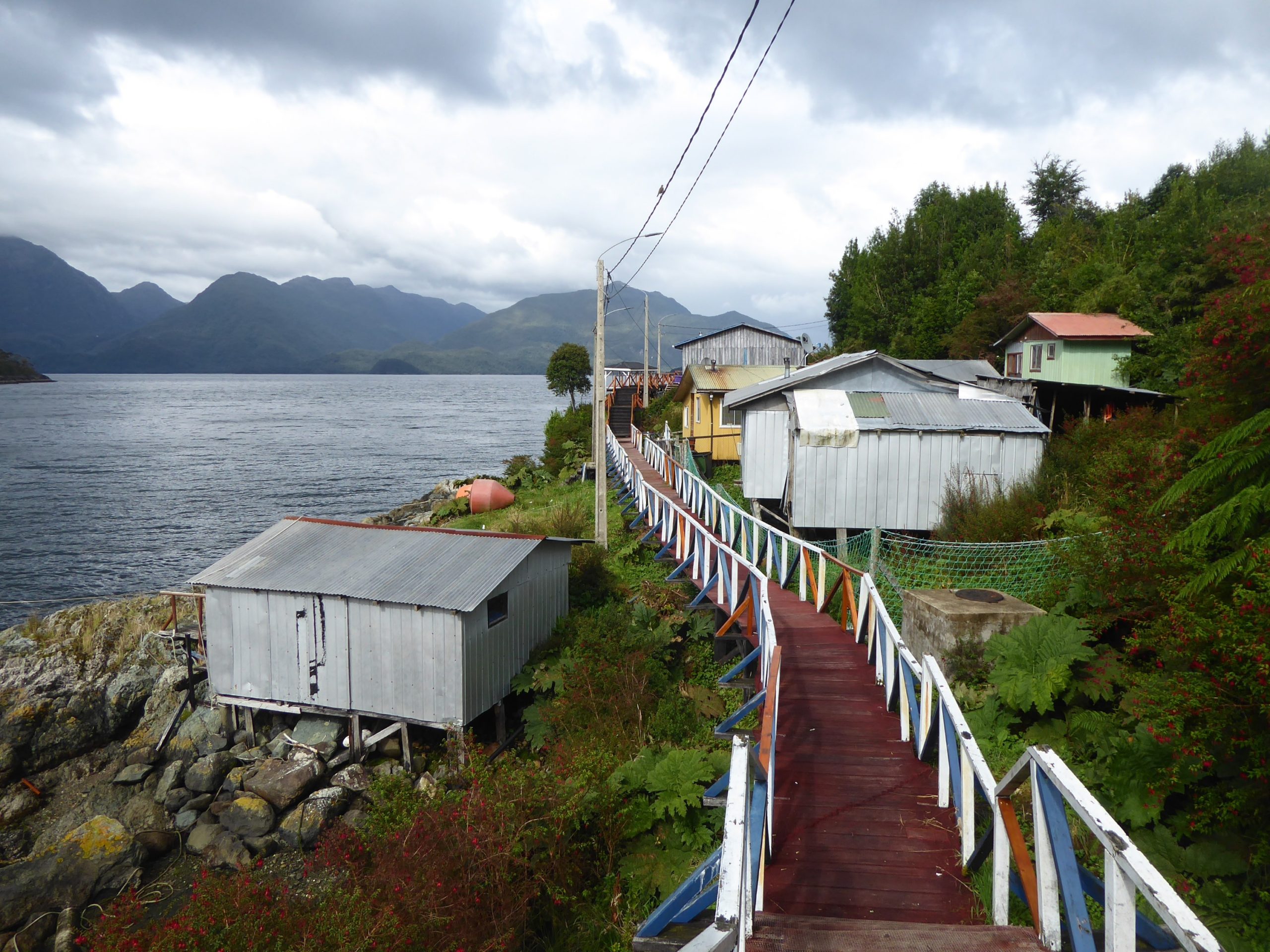
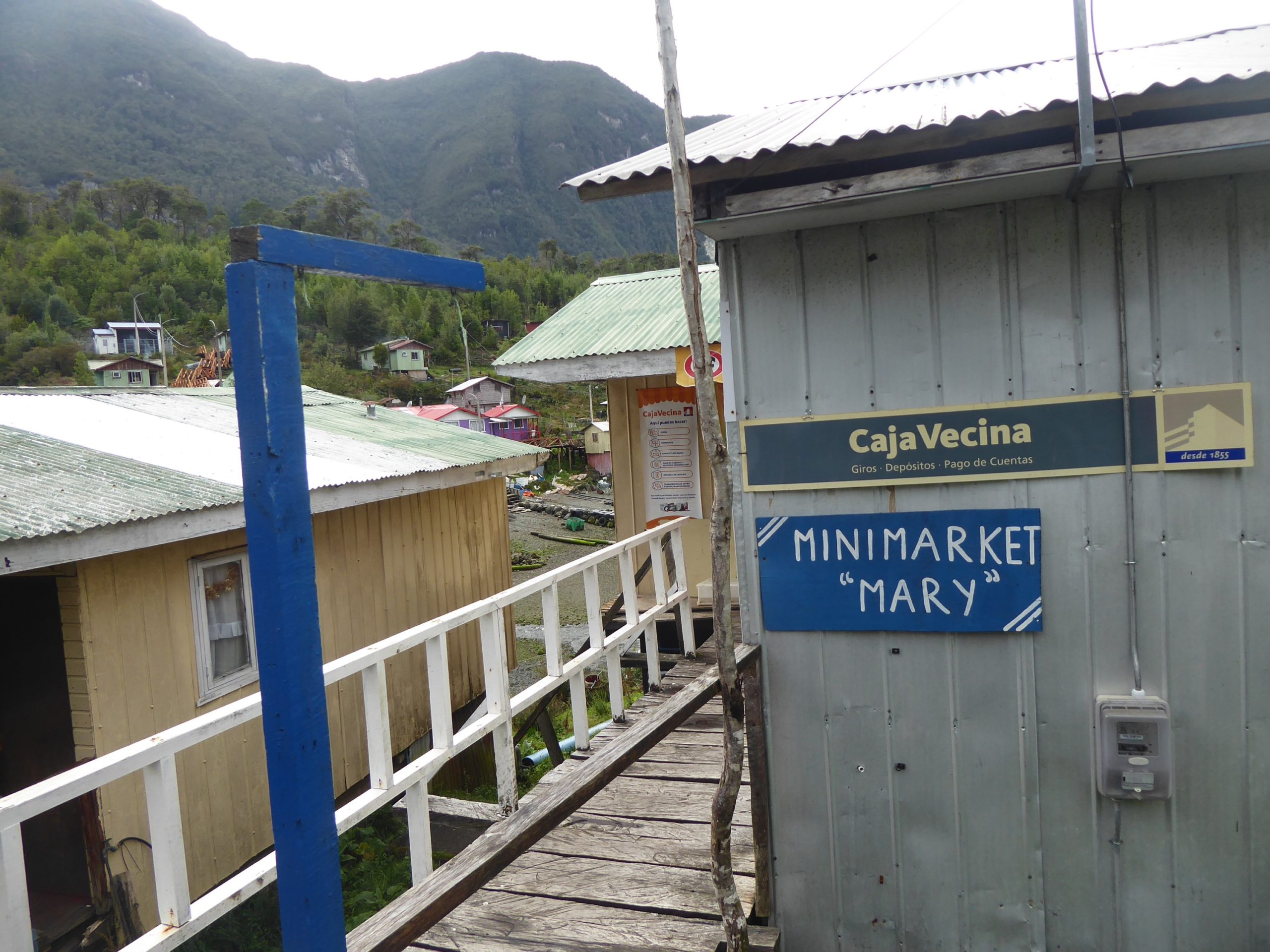
As we strolled through the village a stout woman, her face weathered from the elements and age, stepped out of her home to say hello, a few curious dogs and cats neared too, and some sheep wandered by. (I later asked if the sheep were used for meat or wool. “They’re just pets,” was the reply.) The only shop was closed. A bearded, grey haired man wearing well worn clothes and high rubber boots invited us into his home for a drink. We politely declined. Vultures perched on a rooftop with outstretched wings. A few fishermen got into a boat and head off to sea. All was calm. I had the sense no children lived here. The only sounds came from our steps upon the wooden walkway, the cry of gulls, and an occasional bleet from the sheep.

The sky had been threatening and the rain suddenly came pouring down. It was an excellent excuse to return to our lodging for more tea and pie. Yanko hung our wet jackets and shoes above the stove to dry.
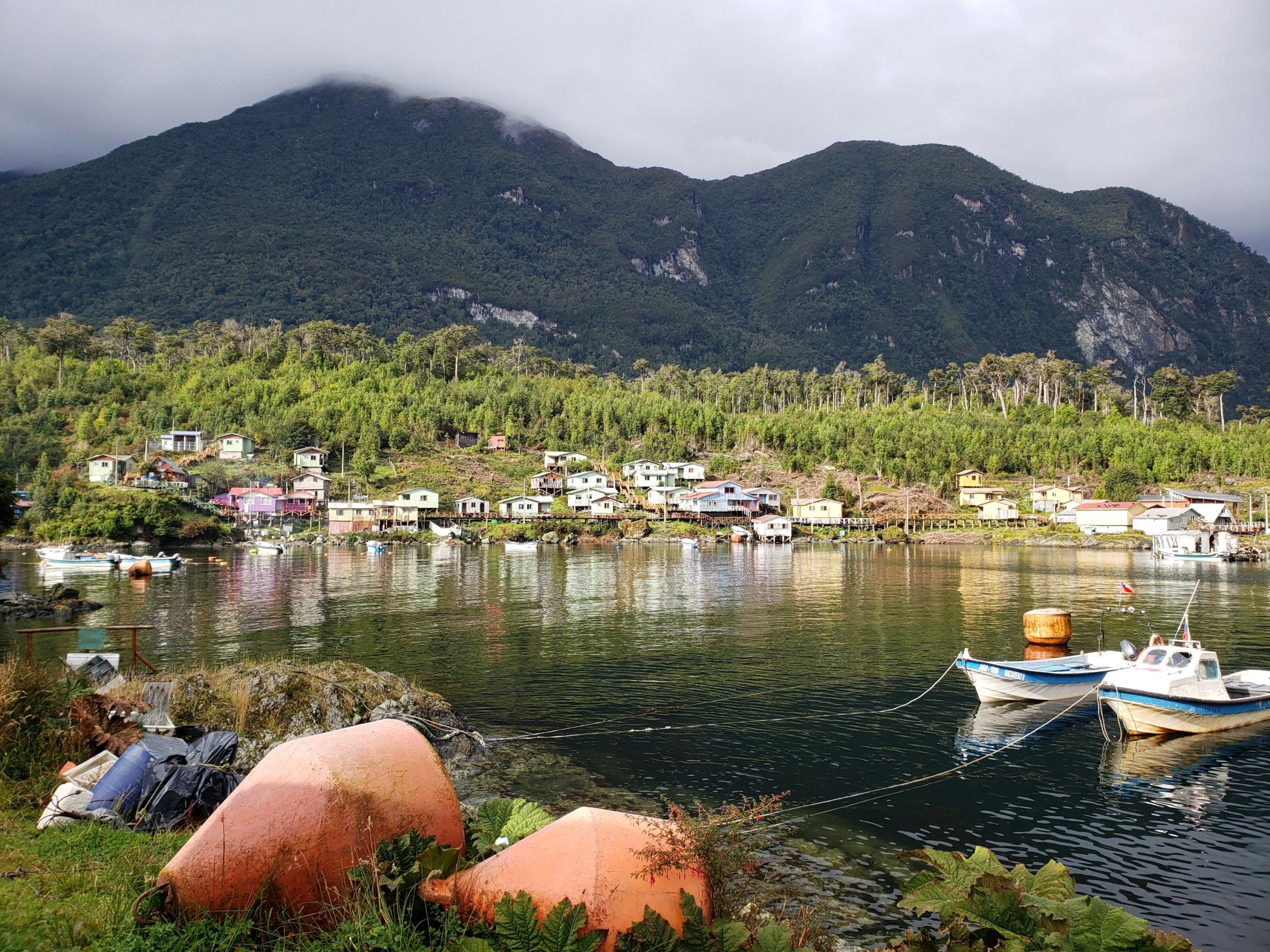
We spent one more night back in Puerto Cisnes. It’s a small, pleasant, sleepy town. The weather was damp and chilly. We sought a place warm, inviting, and open. Options were few. Our wanderings led us to a small cafe, Pimienta Canelo, serving, “The Best Chocolate Cake in the World.” Yanko’s pies had stimulated my sweet tooth, but I was skeptical. Rarely are such claims warranted. The rich, dense, layered, not too sweet, moist cake made with various kinds of dark chocolate was divine. It seemed to have been made by the gods, or Yanko.
We walked in the pouring rain to the Mirador of Two Lagoons. It left us soaked to the skin, but happy, and there was a warming fire to return to.
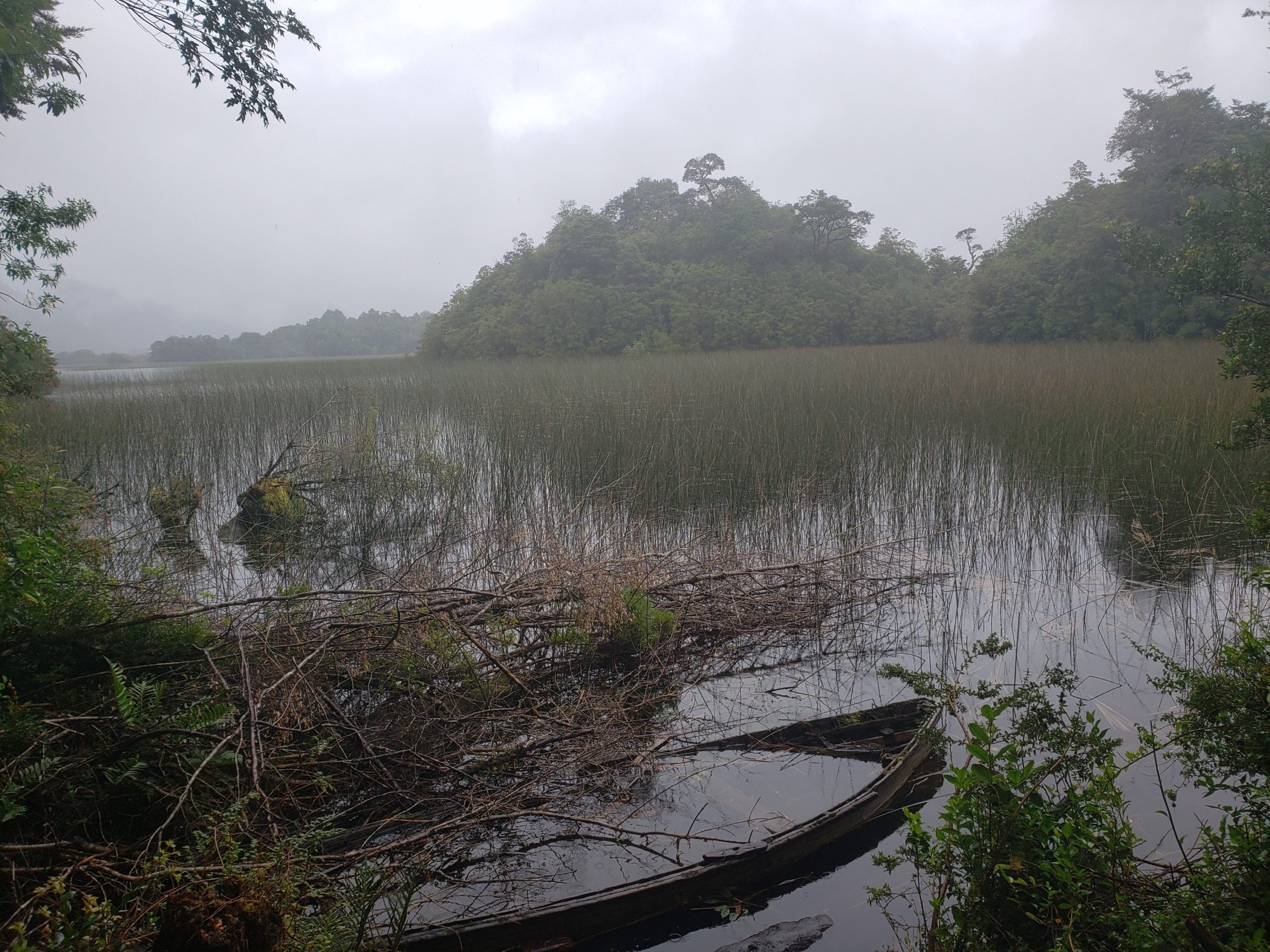
Days had passed quickly.
We drove on toward Coyhaique where Yara would catch a flight back home. We made a few stops along the way, cherishing the moments before saying goodbye.
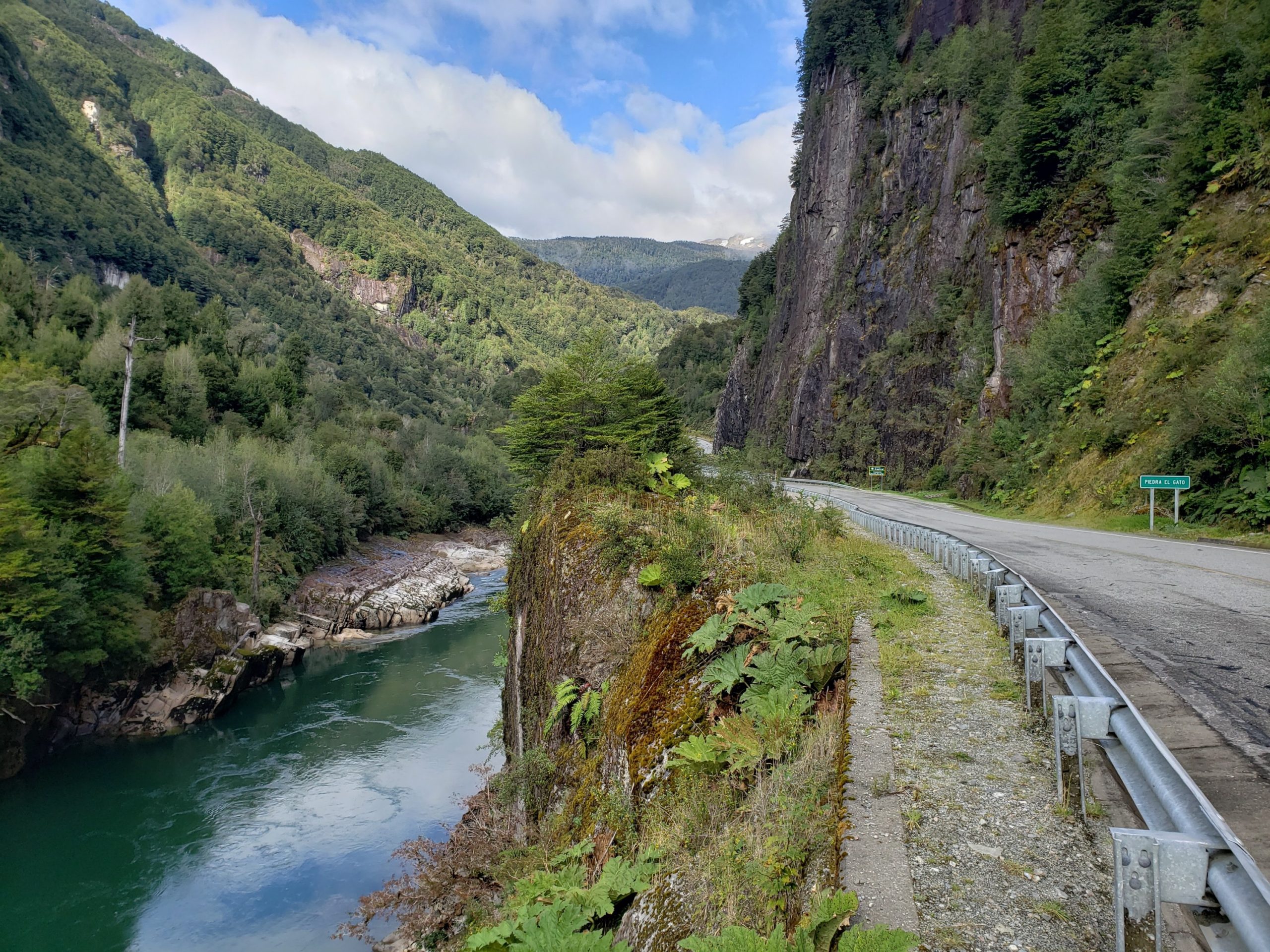
———
I found lodging that night nearby, at Carpe Diem Patagonia, just outside Coyhaique.
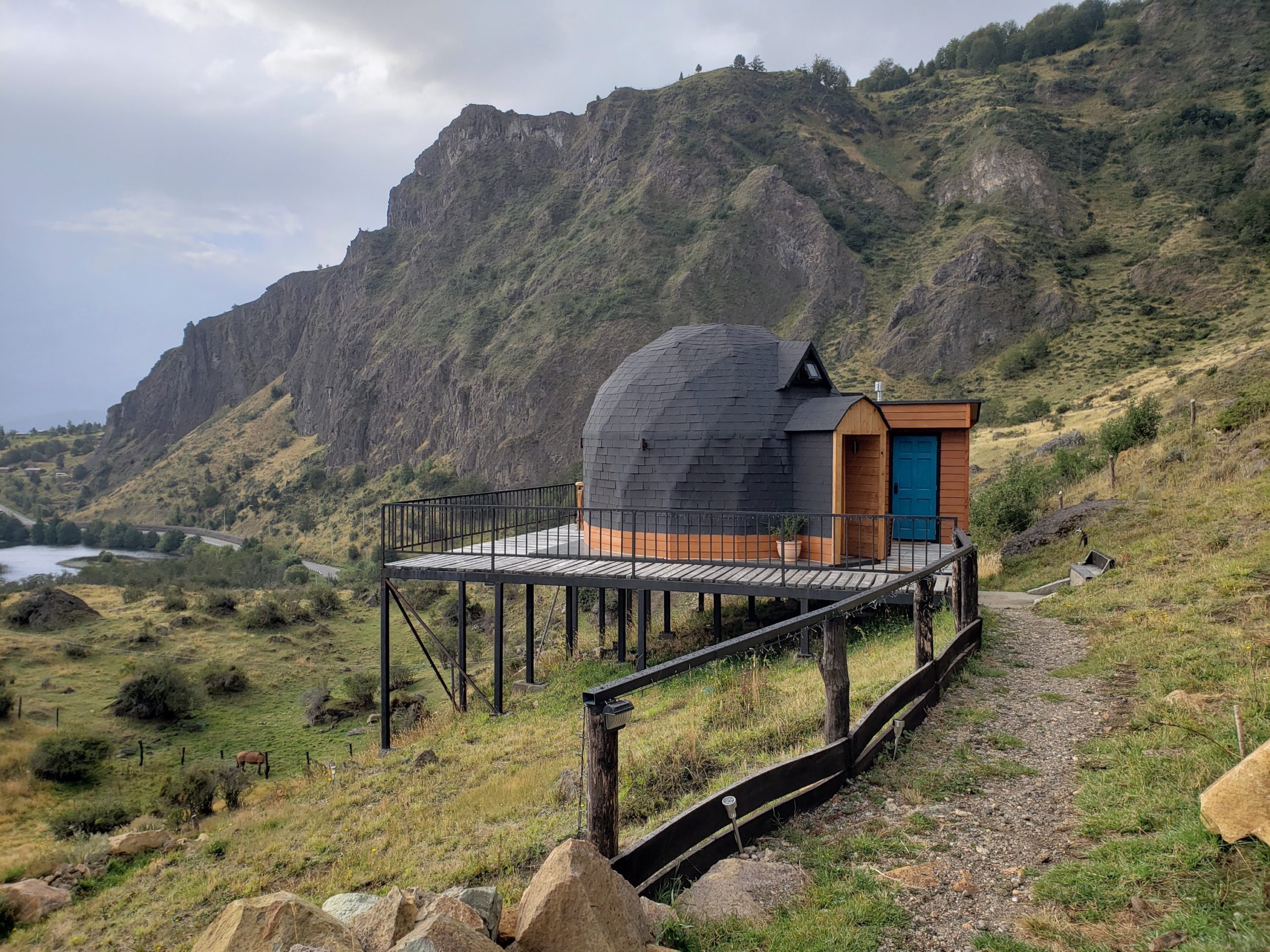
The owners, Roxana and Cesar, gave me a very warm welcome and their place was magical. I was already thinking to return prior to my own flight, from nearby Balmeceda Airport, back to New York.
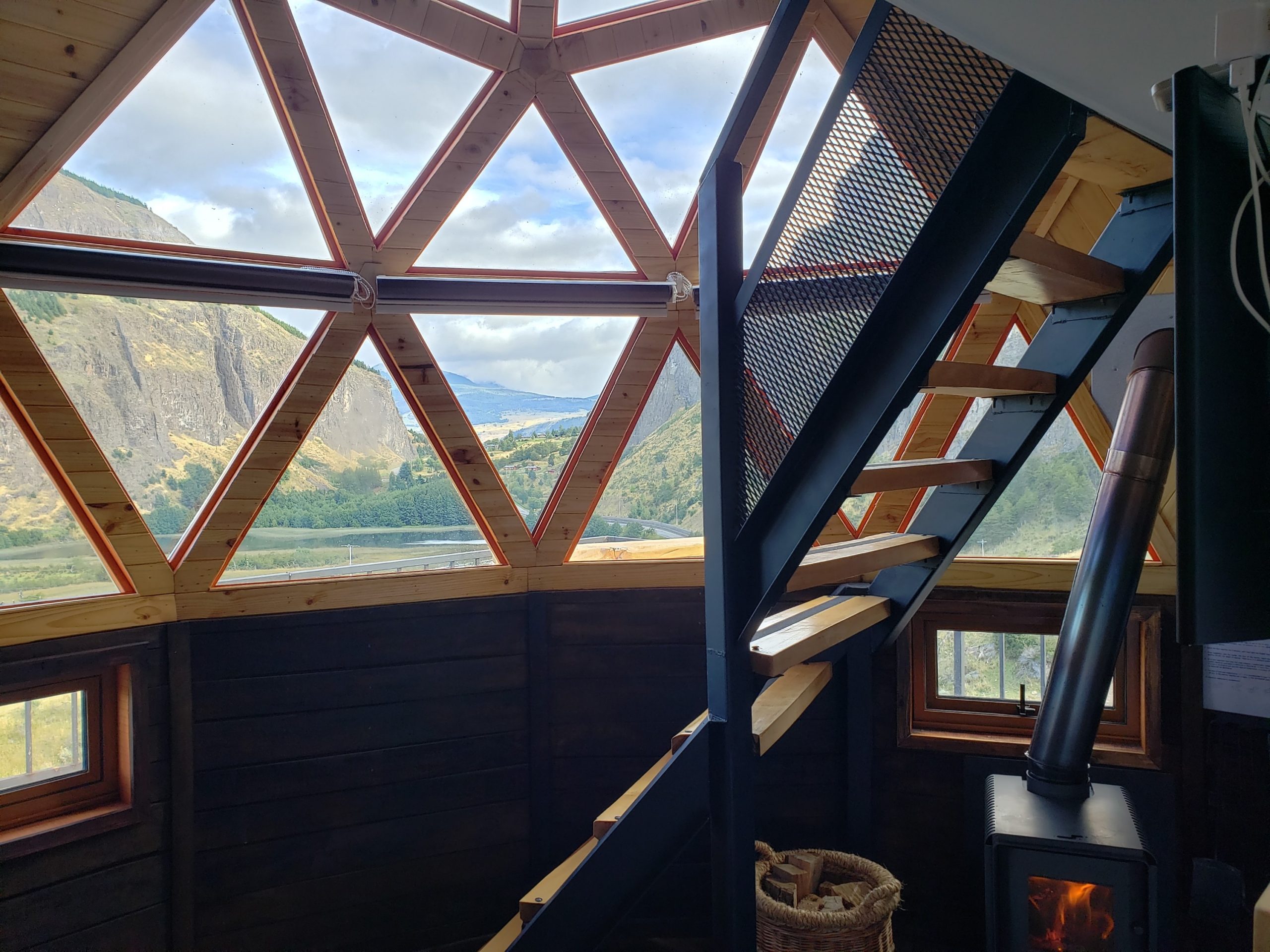
I fell asleep gazing at the stars and woke to a lifting fog revealing distant mountains and the valley below.

The following day, we discussed my onward route and Cesar drew me a wonderful map.
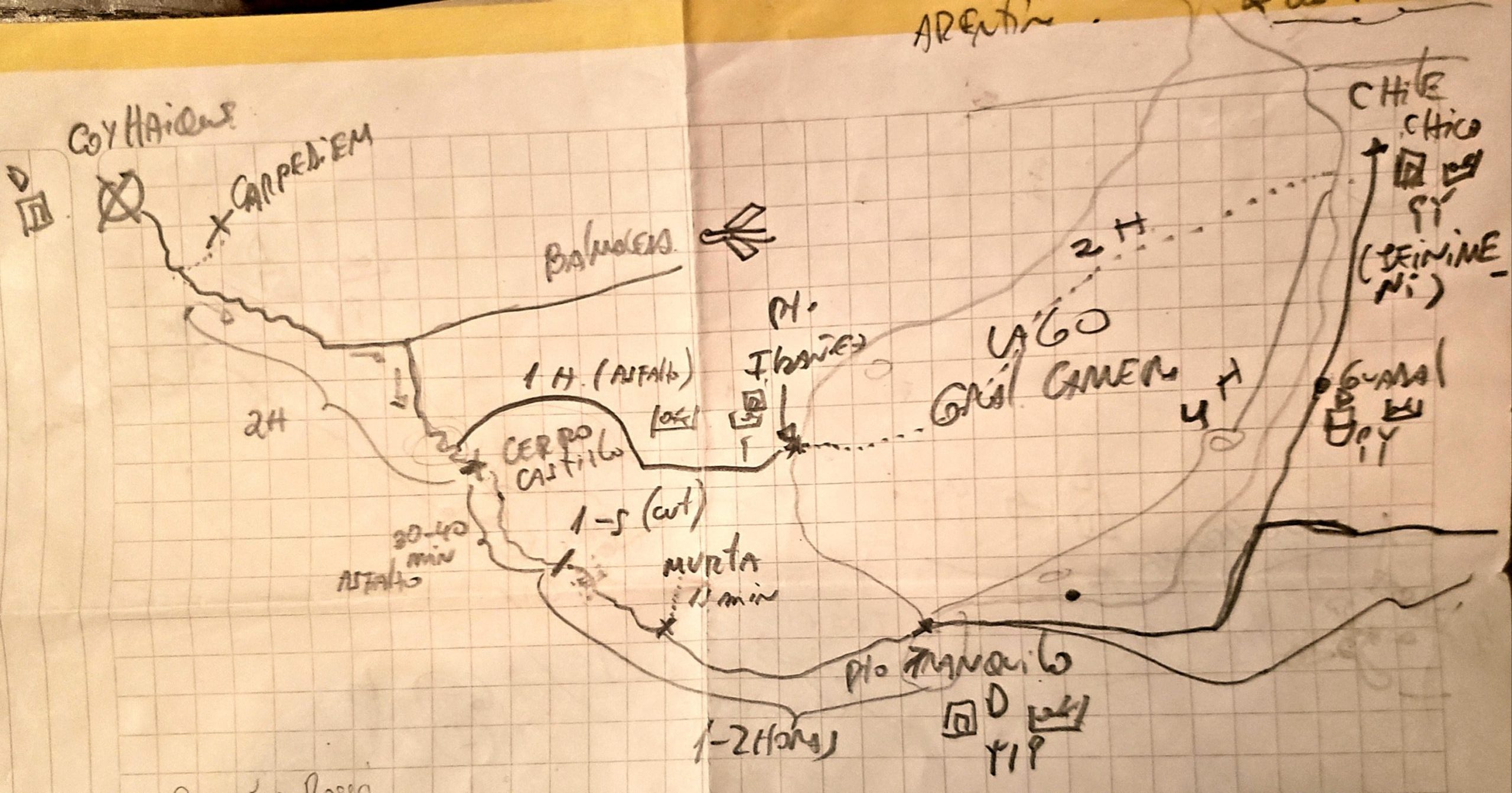
Communication was breezy between the three of us, despite my far from perfect Spanish.
I had no idea then that this encounter would have such an important impact on my life.
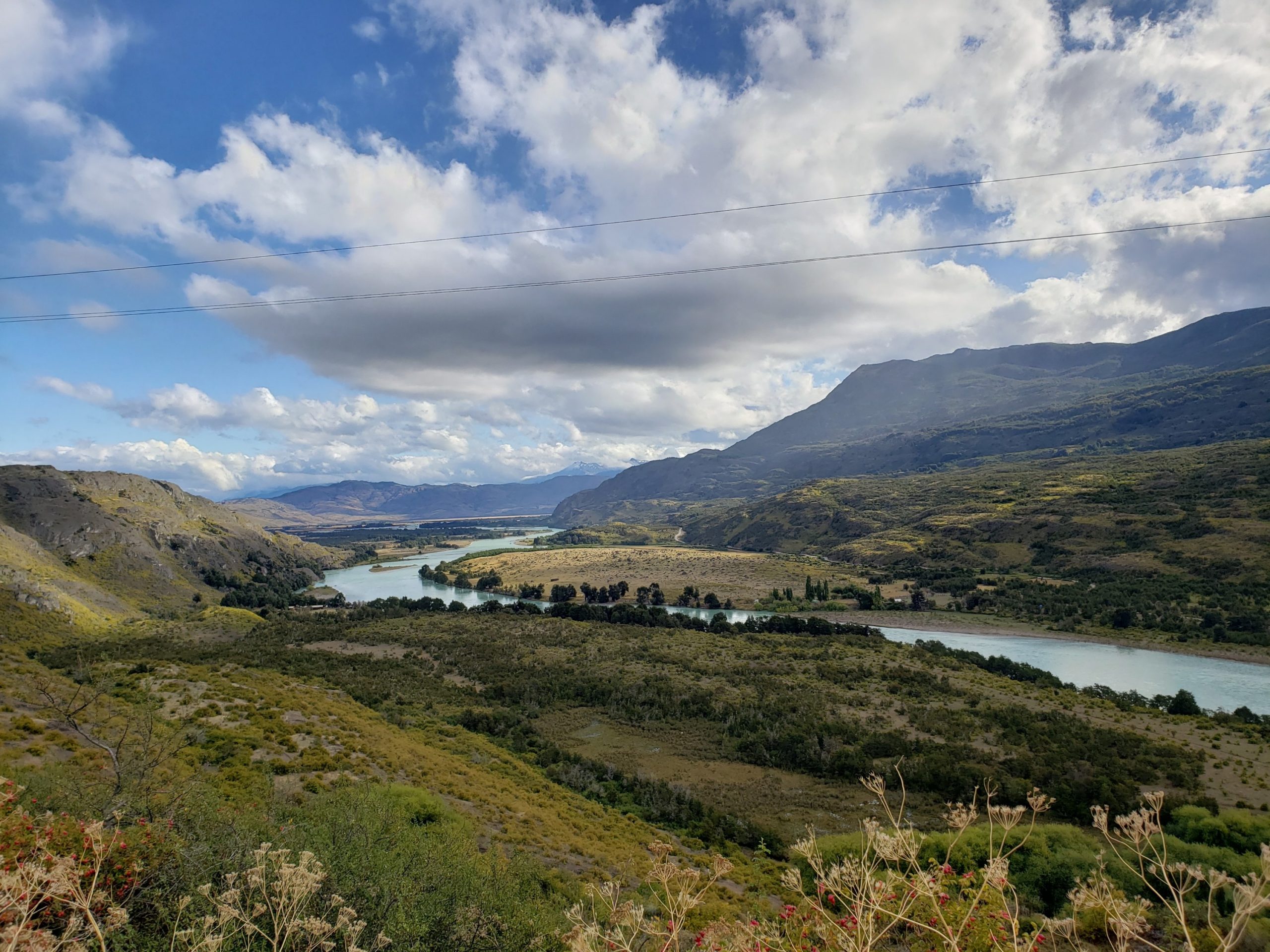
I continued south along the Carretera Austral to Puerto Rio Tranquillo admiring, en route, the beauty of the Rio Baker in its many guises.
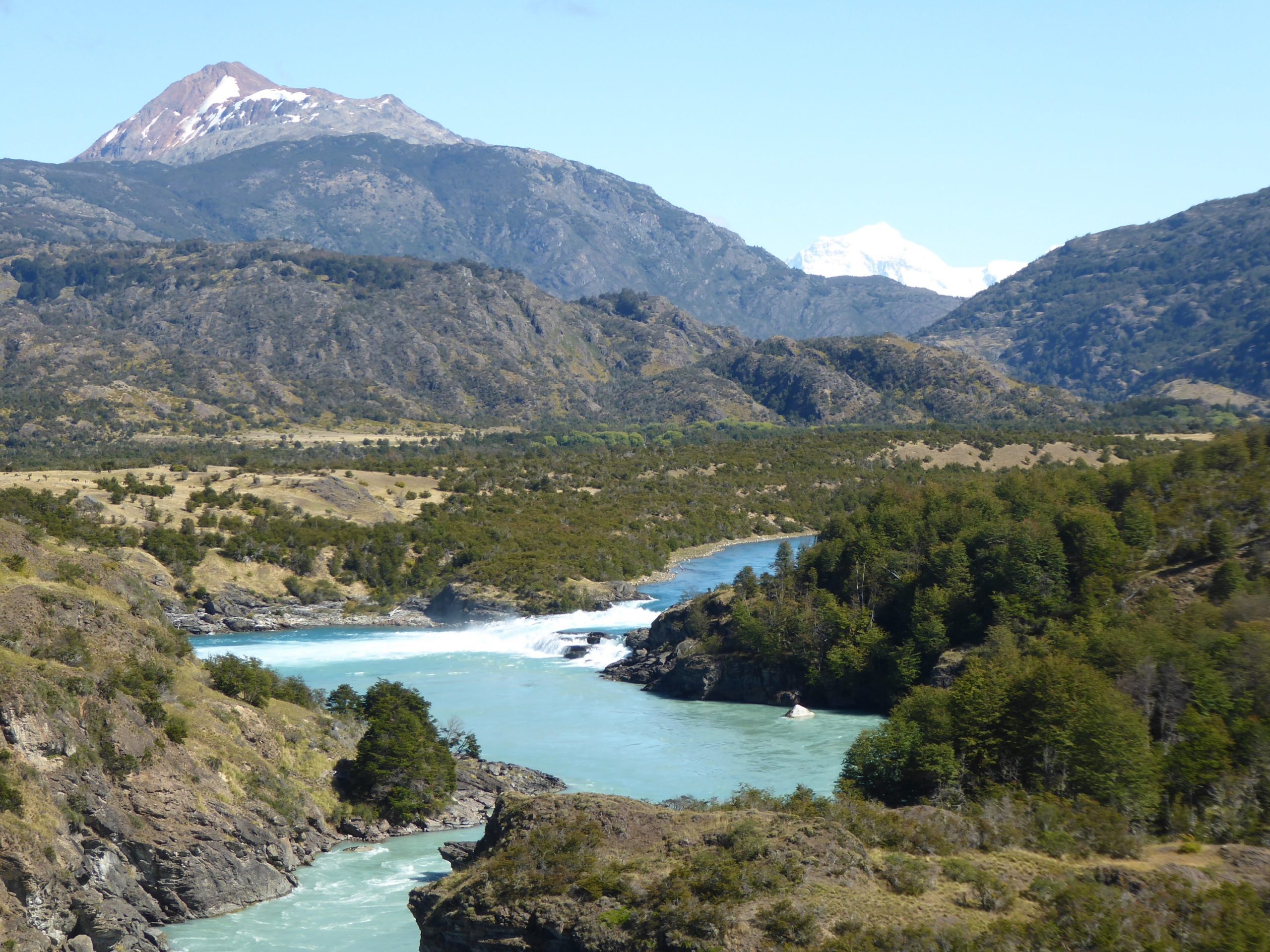
A young Chilean couple were standing by the road. Lucas and Vanessa had been hitchhiking from Valparaiso, a city over 2000 kms away, and camping along the way. We stowed their bags and camping equipment in the trunk. Lucas tucked his clarinet up front by his feet. They were heading to Puerto Rio Tranquillo too.
We spent the next seven hours discussing jazz, travel, relationships, politics, and art, stopping for photos, and cooking a lunch of pasta and vegetables, thanks to their camping gear, in a town square. It was empty except for us, and a few hopeful dogs.
Lucas asked if I thought the Chilean government was spreading the coronavirus to end the protests. Large gatherings in the major cities had since been banned, demonstrations ceased, restaurants and bars were closed, and curfews had been put in place. I told him I didn’t think so, but I’m not sure he agreed.
The virus was spreading, but my concern receded quickly with the next vista…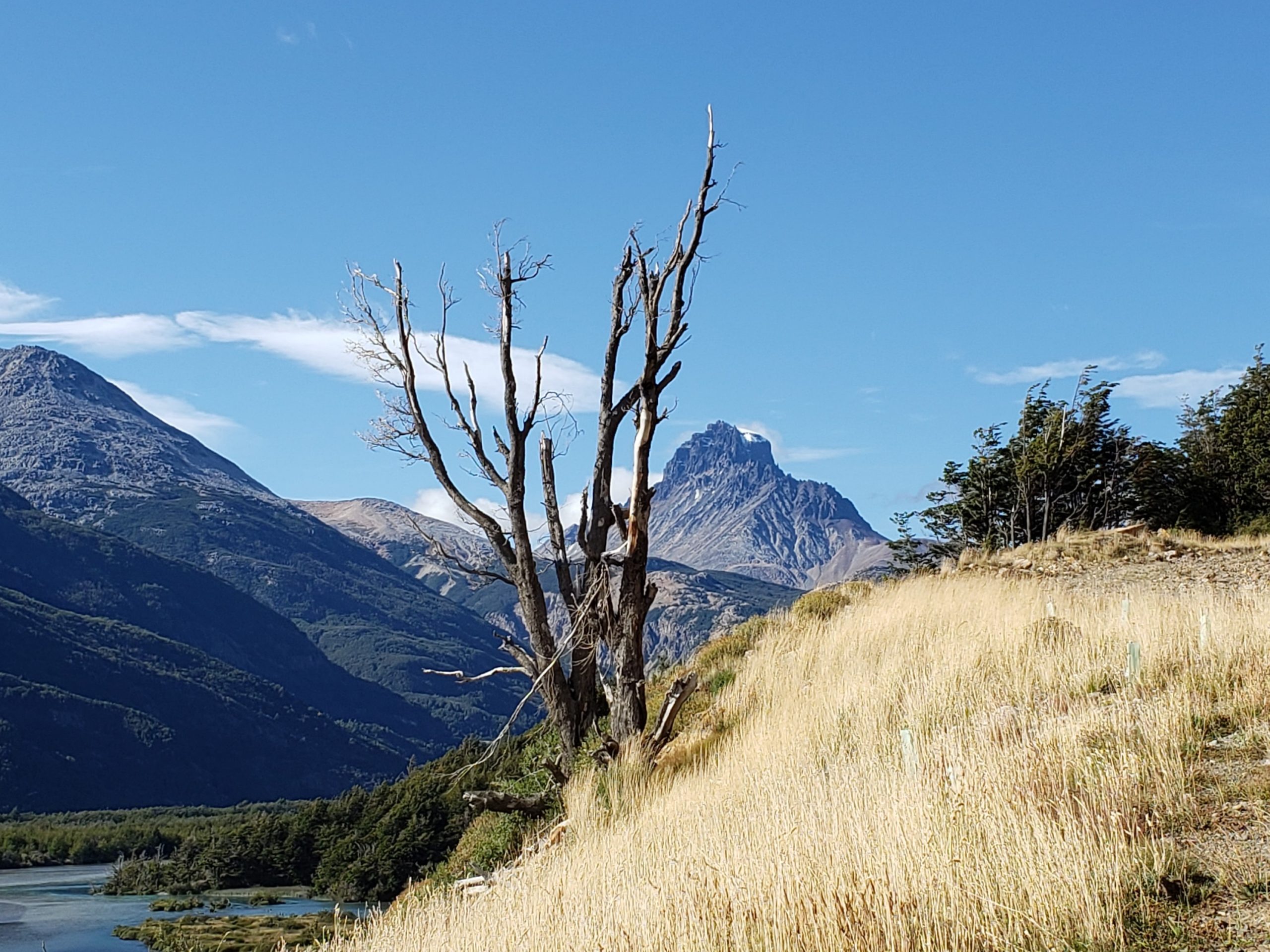
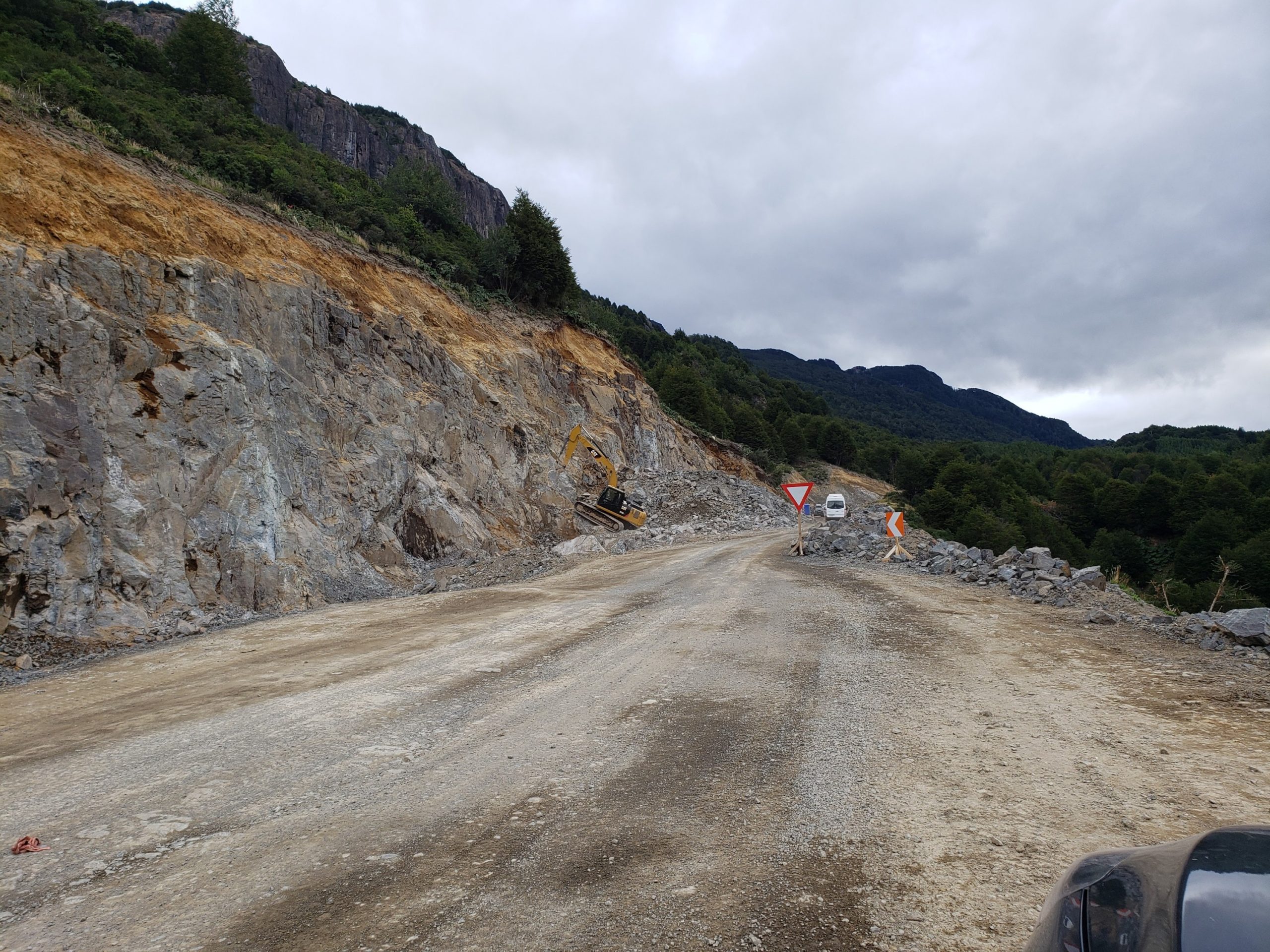
Puerto Rio Tranquillo, known for the Capilla de Marmol (Marble Cathedral) and marble caves, is a popular tourist destination. Unless I’d been free camping like Vanessa and Lucas, finding a place to stay was not easy,
Every lodging I saw was booked. After driving around the town several times and making many inquiries, I stepped into one of the shops to try my luck. The young woman standing behind a wooden counter of dry goods said she knew someone, who knew someone, who had a place. I soon discovered why it was still available. The small apartment was pretty shabby, and extremely overpriced, but it was already late and I was ready to settle in for the night. I was asked to pay in advance and did.
I slept well and prepared a breakfast of coffee, bread, fruit, and cheese, in the small kitchen. The apartment looked better in the morning light, but it was still extremely overpriced. I was not tempted to stay another night. I packed up and drove over to the lake for the requisite boat tour of the caves.
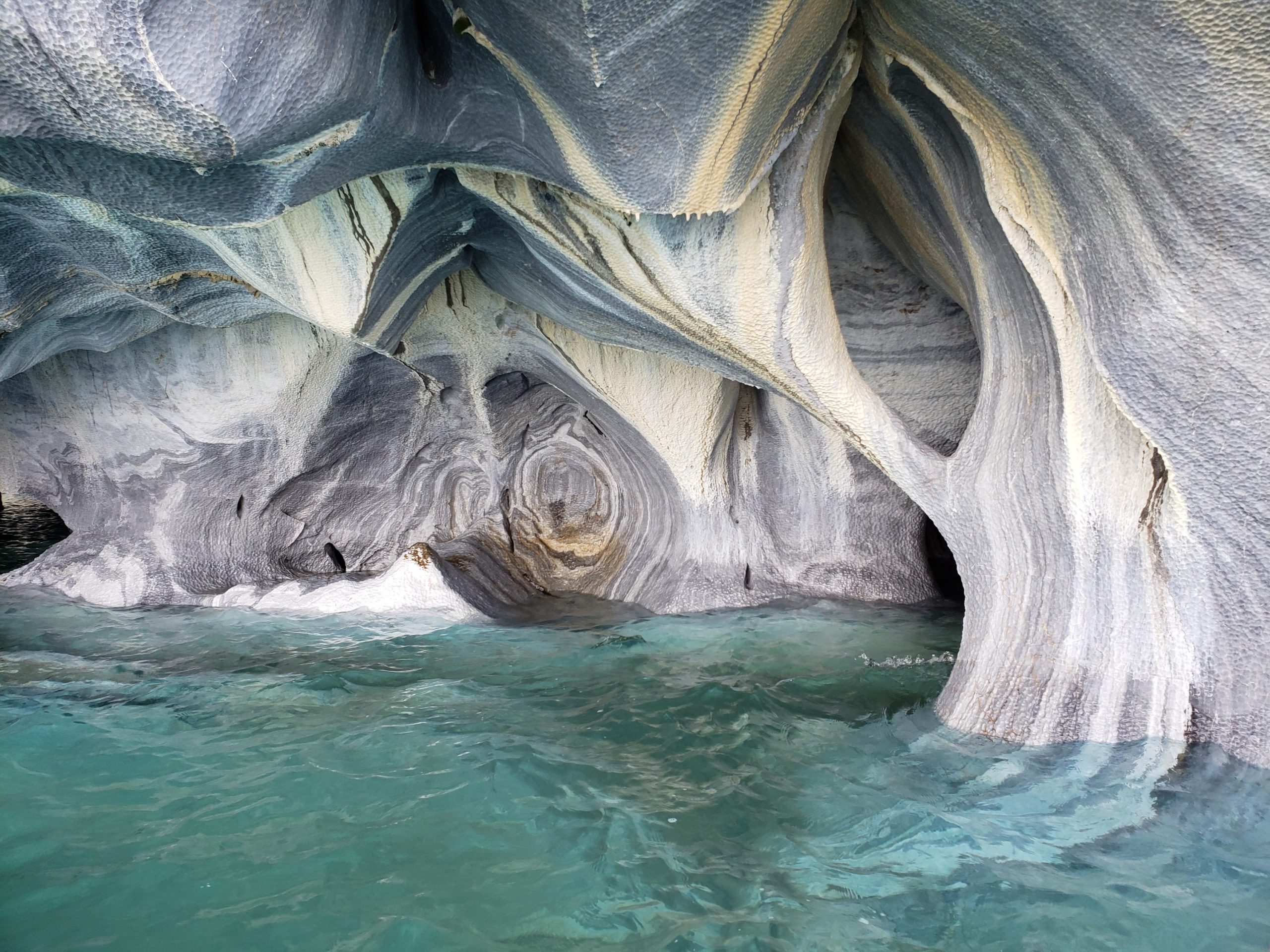
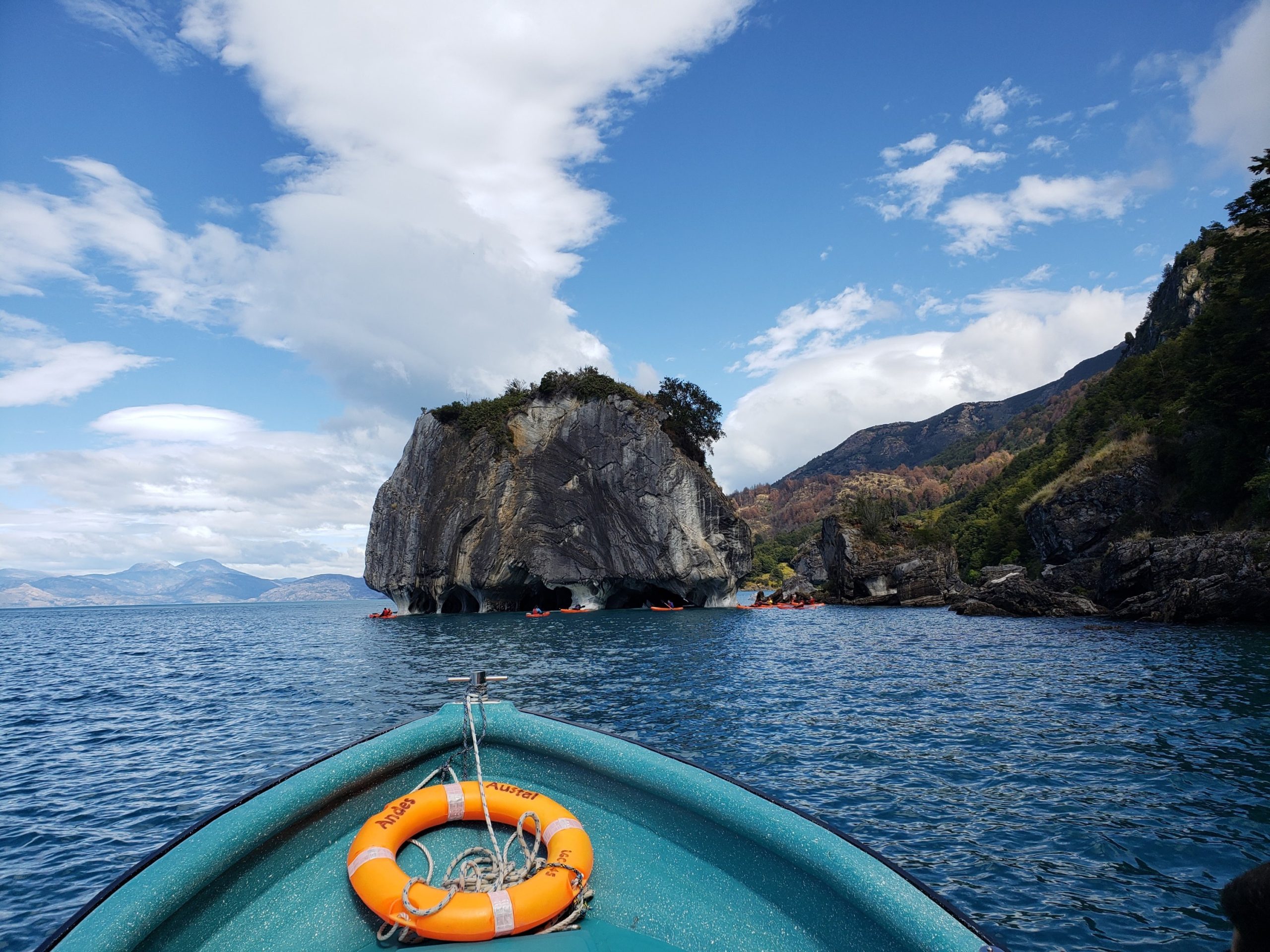
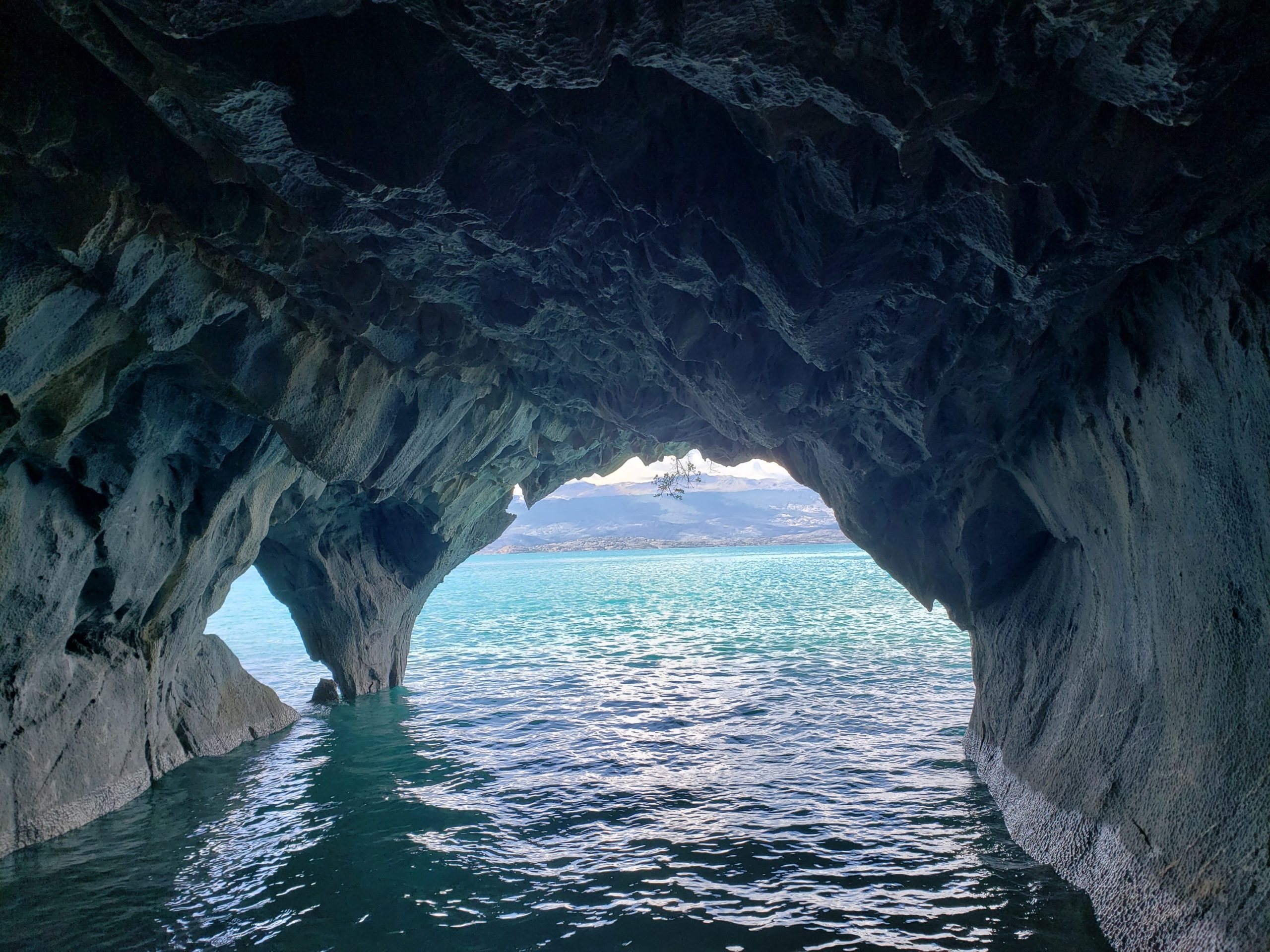
Afterwards, I found Vanessa and Lucas, who’d set up camp near the lake, to say goodbye. I set off for Cochrane. It was only a 120 kms (75 miles) away. Google maps indicated around two hours to get there. Road work, bad roads, photo stops, and breaks were not taken into account. Over six hours later I arrived.
Cochrane, despite being the largest town in Southern Chile, was quiet and peaceful.
Dogs slept in the streets unfazed by the few passing vehicles. A neat grid of roads lined with shops and homes led to the central square. I looked for lodging.

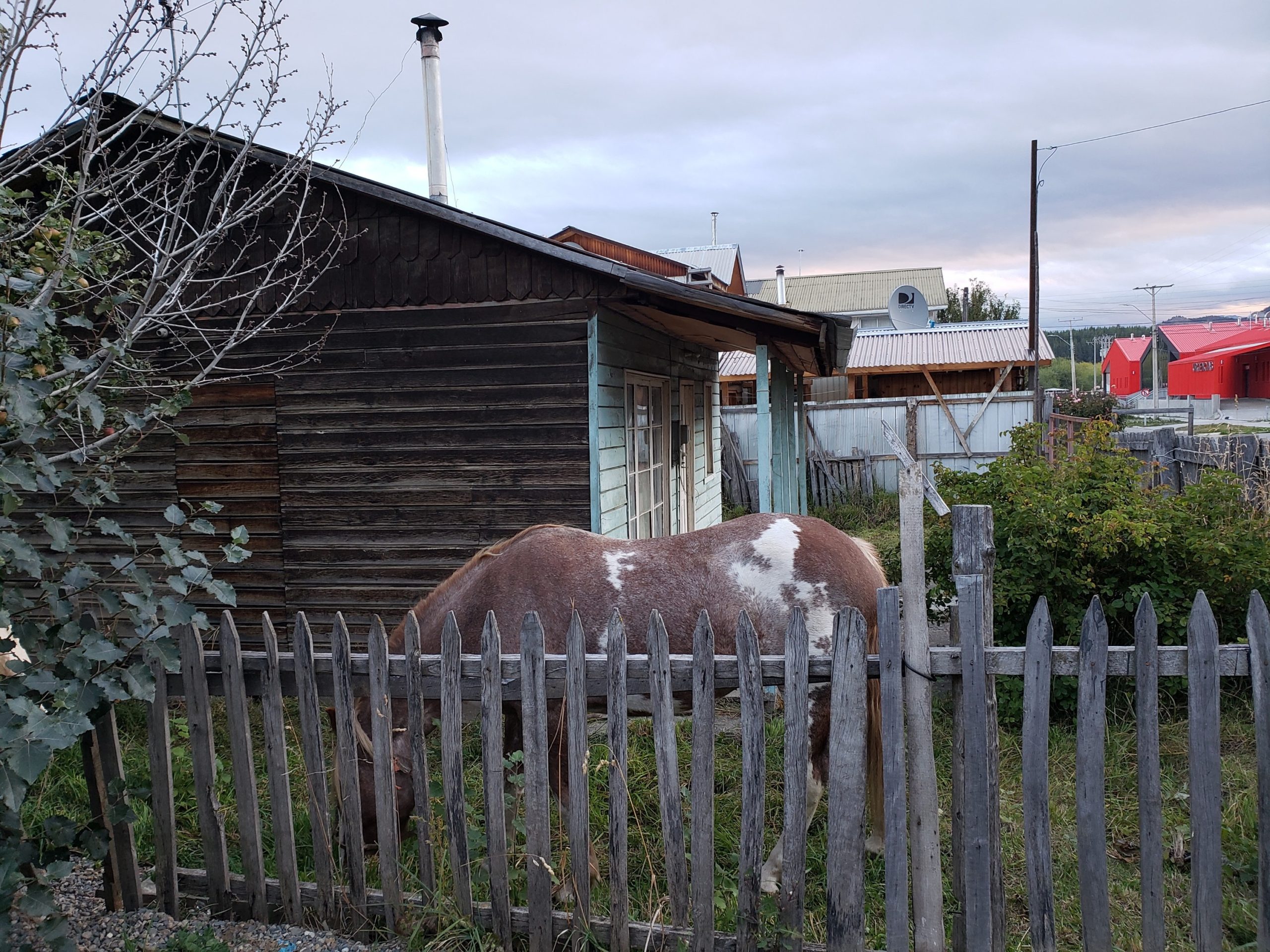
I easily found a family-run set of cabins just across the street from a supermarket. The wife showed me a clean, spacious, and charming cabin. Perfect.
A bit later I walked over to the supermarket to buy some items. The cashier was wearing a face mask. It was the first time I’d seen anyone wearing one. A rope had been set up to keep the customers in single file and the use of hand sanitizer was mandatory.
It was jarring, but I remained strangely unconcerned.
I wasn’t the only one who’d needed time for the risk to sink in. The following day I returned to the supermarket. A different woman was at the cashier, she was mask free, and everyone else was too. Had it been a false alarm?
I arranged a private boat trip for that afternoon.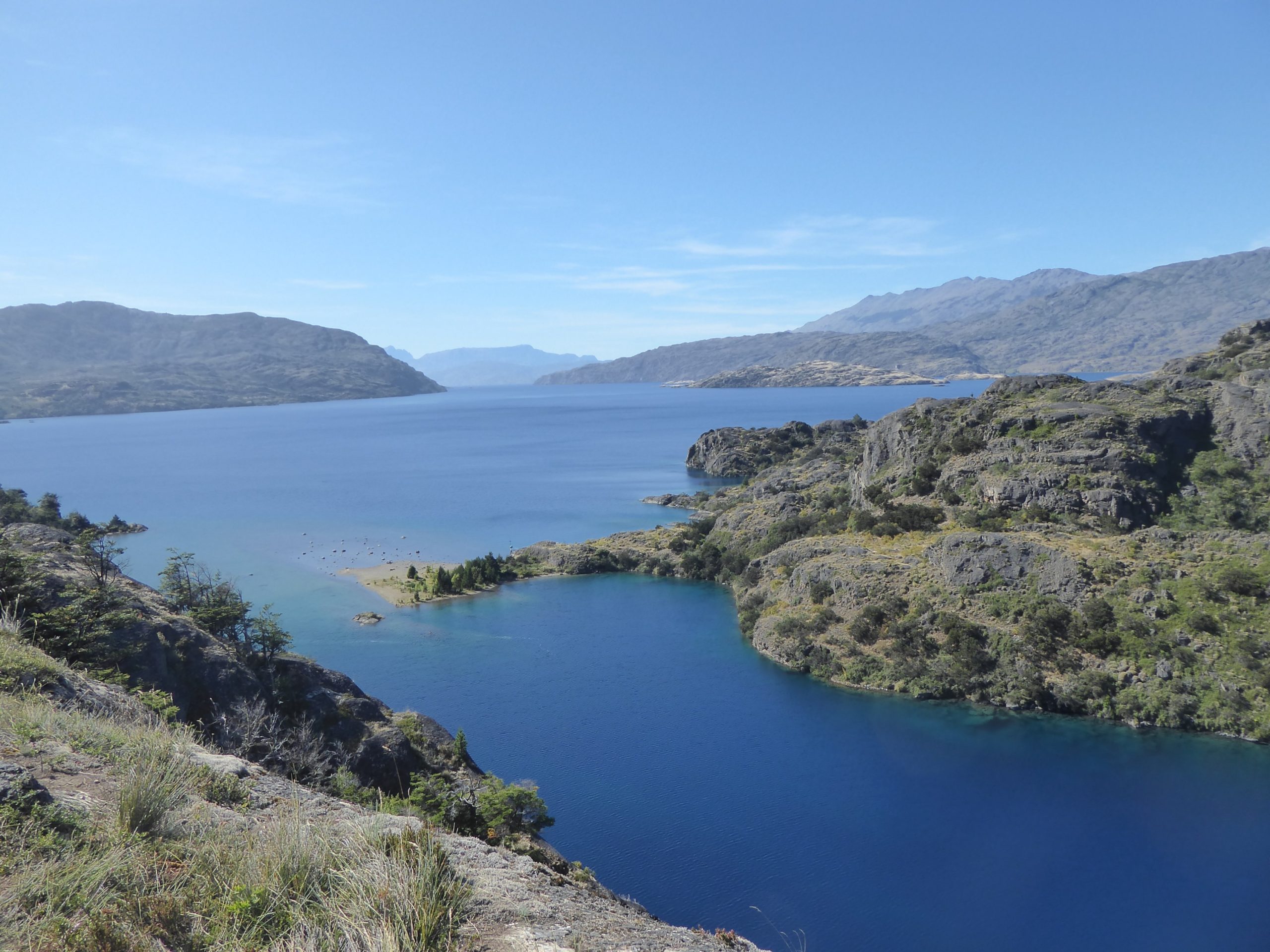
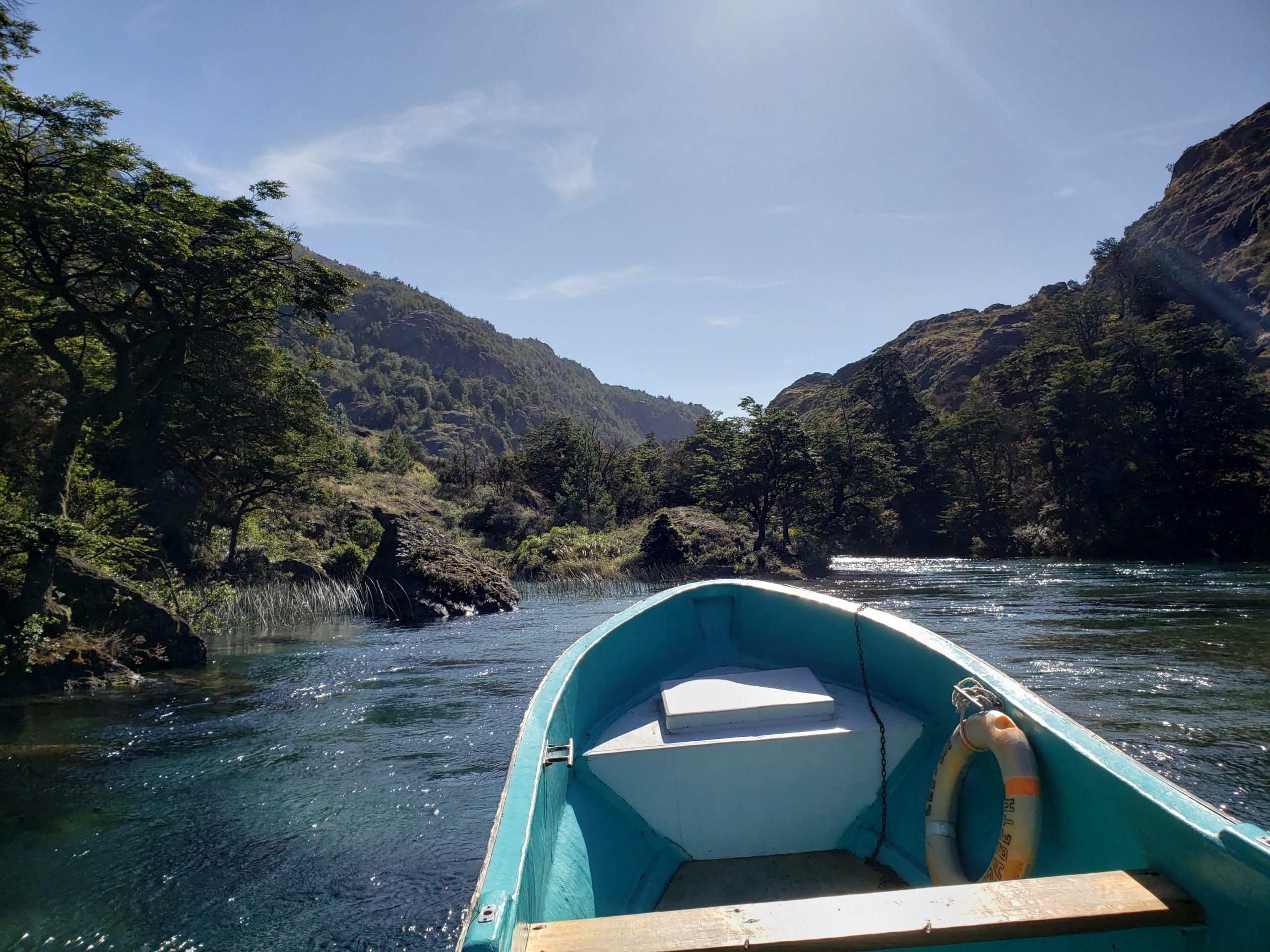
That evening, I met a young petite Dutch woman, Hester, back in the supermarket. She’d been camping and hiking her way through Patagonia on her own. Her pack was nearly as big as she. I was impressed. We connected quickly. And we were both buying things to cook that night.
I invited her to prepare dinner together in my cabin. Our conversation easily flowed from one topic to the next. We laughed often.
She pulled out a huge bag of mushrooms that she’d gathered herself. They looked nothing like the mushrooms I’d eaten in the past and having seen the film Beguiled as an impressionable kid put me on high alert. I suggested she bring them over to the supermarket figuring someone might know if they were good or not (I’d already decided I wouldn’t be eating them regardless.). She came back a short time later empty-handed and said, “They didn’t like the looks of them either.”
For a woman who had a degree in physics, worked in the world of economy for several years, and was well versed in film and literature, she displayed more of her intellect than common sense. But she’d managed to get that far, so she’d clearly been doing something right. And she was a lot of fun.
———-
I’d enjoyed my time in Cochrane and hoped to spend another night or two before continuing south to Villa O’Higgins. But a tourist had tested positive with the coronavirus in Caleta Tortel. A two week quarantine was ordered. No one could leave or enter. It had been my next planned stop.
The risk of the virus, road and border closings continued to increase. I had a flight scheduled from Chile to New York in just over one week.
The virus could no longer be ignored.
I walked to the river watching its steady flow. Water, whether a stream or ocean, brings me comfort and calm. I sat on the riverbank and assessed the growing alarm and risks, including getting stuck somewhere in quarantine.
The decision was a difficult one. I decided to turn back. Villa O’Higgins would remain an elusive goal.
As a consolation of sorts, I’d drive back to Coyhaique along a different route and stay in Puerto Bertrand, a picturesque hamlet that lies along the Rio Cochrane, known for its rafting. I set out the following morning.
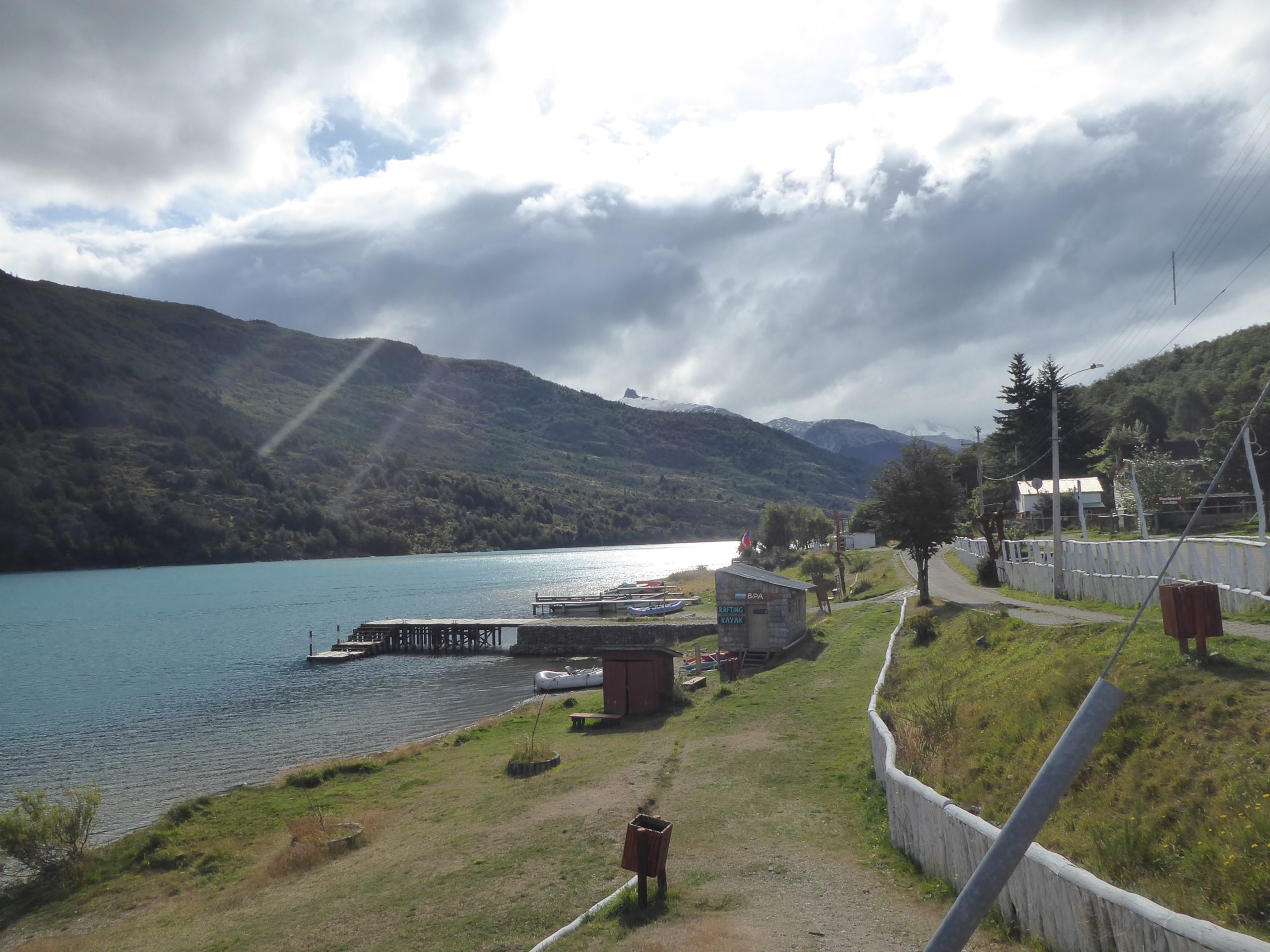
When I got there I was greeted with signs saying “CERRADO”. The only shop and restaurant in town were closed. There was barely anyone around.
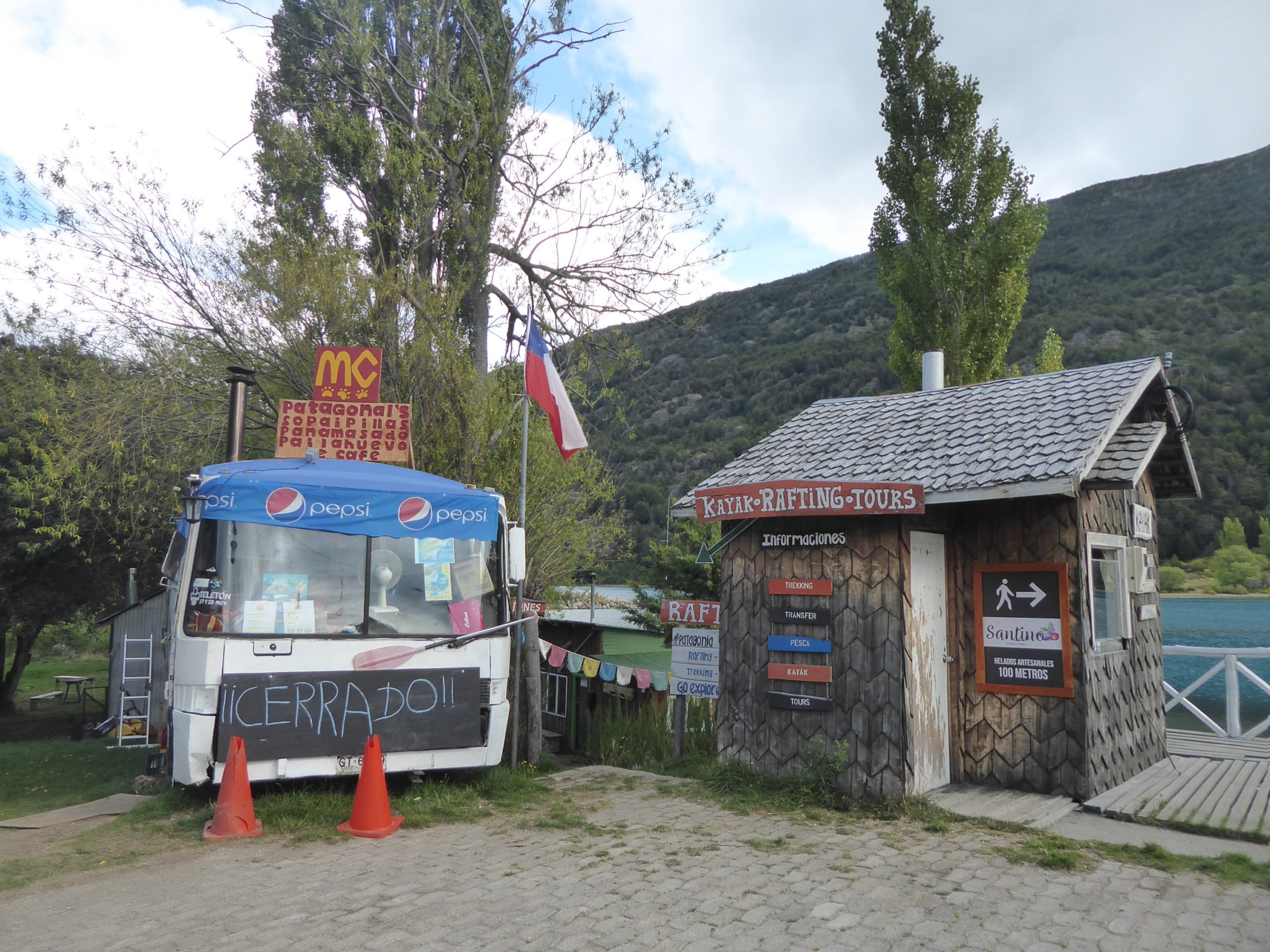
I drove up to a home offering rooms to rent. A man peered out from behind a curtain, unwilling to step outside. His message was clear.
I walked over to the Cafe Bertrand Lodge, which was closed too, but a man passing by suggested I call out to the women who lived upstairs.
A woman seemed to take pity on me and bravely came downstairs. Keeping our distance, she gave me the keys to a cabin up on the hill, but said the cafe would remain closed. I went back to the shop and gave a tentative knock. It was the only place for miles selling food. A man walked up, opened the door, and welcomed me in. I gratefully bought eggs, bread, cheese, milk, yogurt, and tomatoes. Fortunately, the power of commerce and/or kindness, exceeded that of fear.
While looking for a place to stay, I’d asked three people sitting in a car if they knew of anything. They didn’t.
By chance, I saw them again waiting by the river hoping to go white water rafting. The owner had agreed to take them, if they could find a fourth customer…
I was soon dressed head to toe in rafting gear. (Fear of the virus had still not sunk in. I was more nervous about the rafting.)
We had a blast. It was a perfect balance of fun and excitement without risking our lives. My new found friends, Maritza, Jesus, and Danilo insisted on navigating me through, with extraordinary kindness, the next days, often stressful, back to Coyhaique. They too had cut their travel plans short and were heading back up north as well.
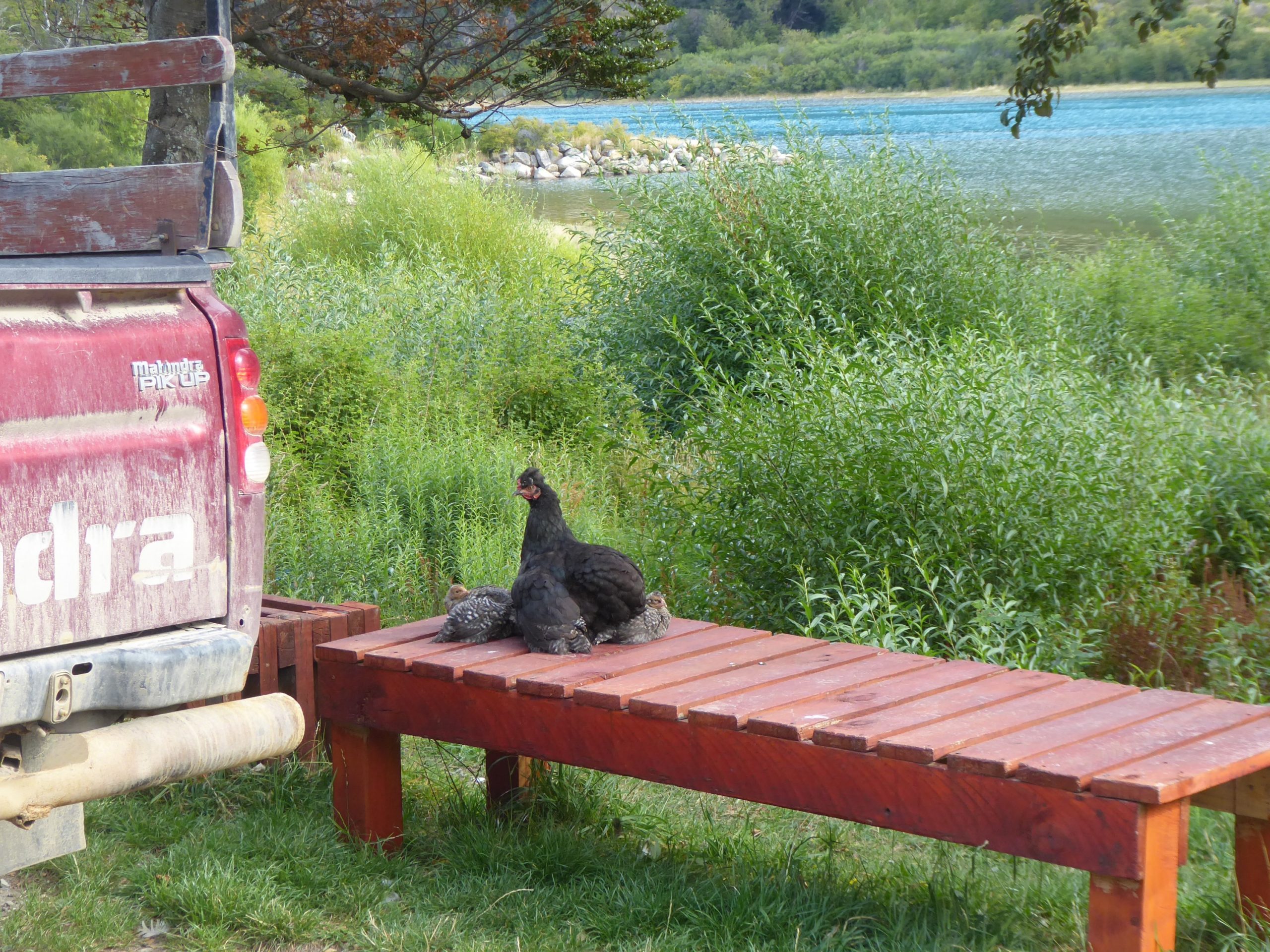
My friends decided to move on, but with enough food and a view of the lake from my cabin, I decided to stay in Puerto Bertrand another night. News was becoming increasingly worrisome and the hamlet was an oasis. We’d meet up in Chile Chico.
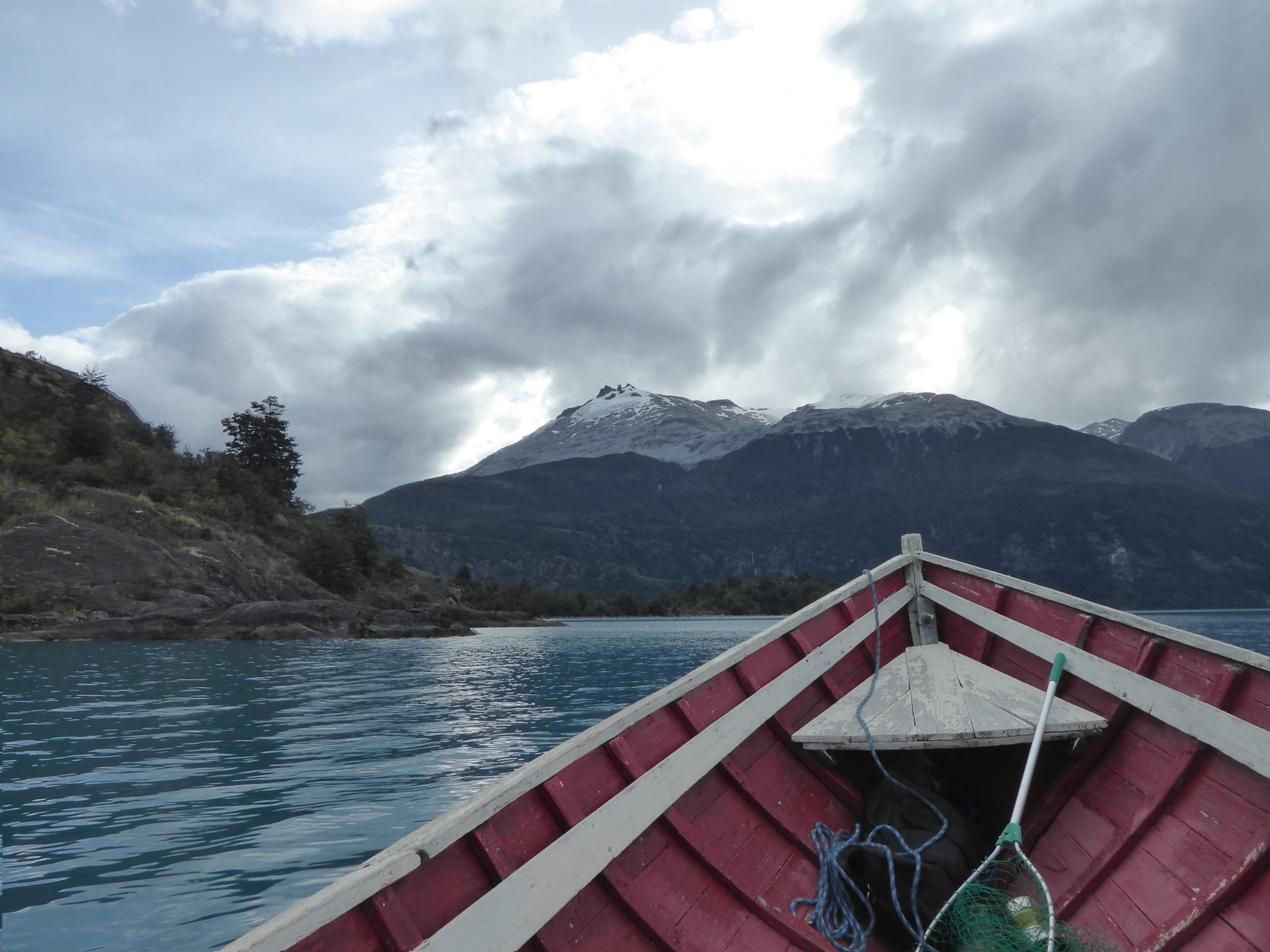
The drive from Puerto Bertrand to Chile Chico had a reputation for being dangerous: there were blind curves, steep drops, rising dust limiting visibility, and less than cautious drivers.
I started my journey with a healthy dose of trepidation.
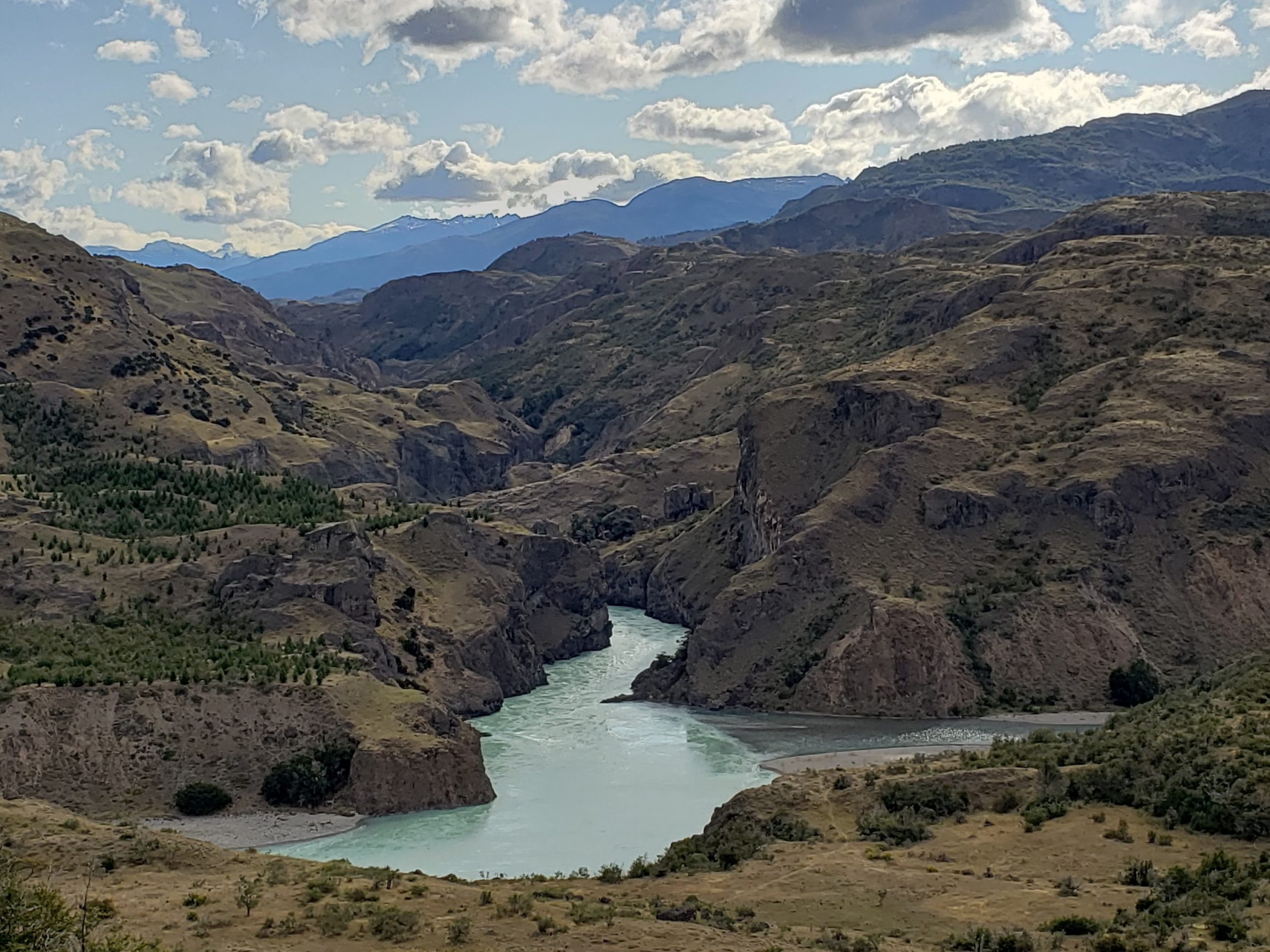
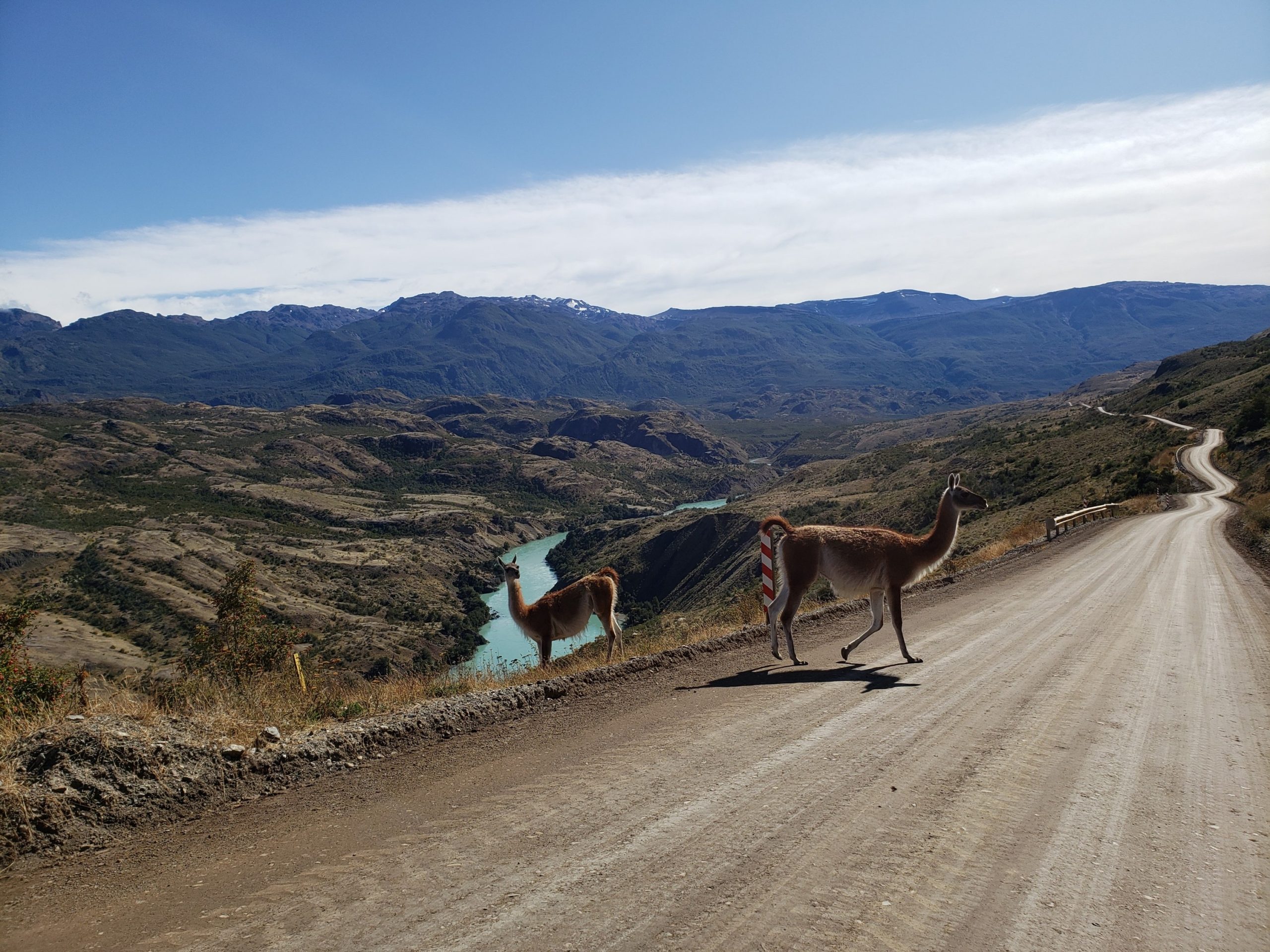
A rain in the morning had settled the dust, and the traffic, it was Saturday, was extremely light. The occasional steep drops were along empty stretches, and no oncoming vehicles rounded the blind curves. Speaking to my friends the following day about their harrowing journey, I knew I’d been lucky.
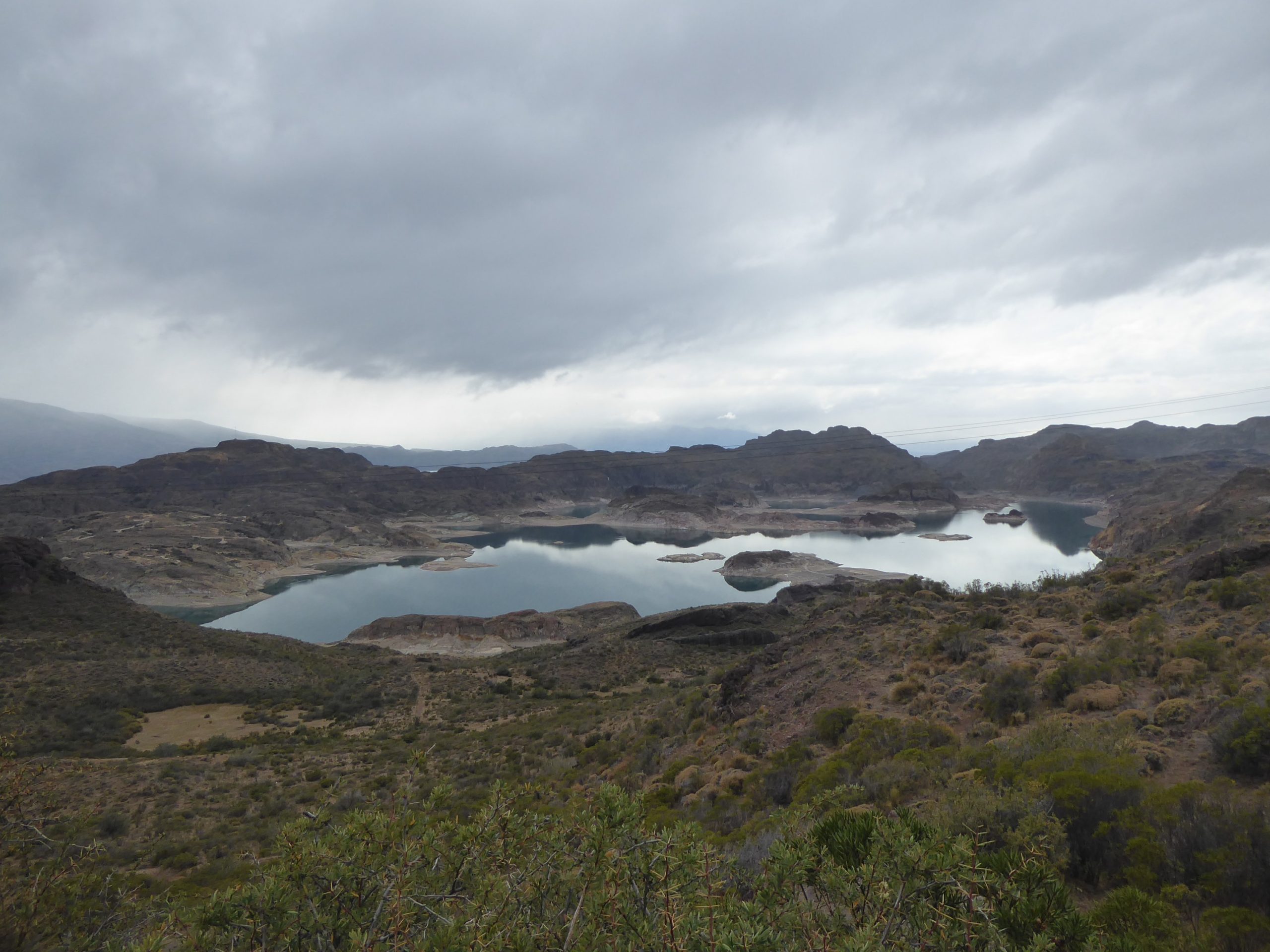
My friends arranged a stay at their lodging, just next door, and continued to ensure my well-being and safety. Their kindness had no limit, and they were great company.
That day I learned my flight back to NY was cancelled. I thought it best to get back to Coyhaique as soon as possible and make new travel arrangements.
Getting up-to-date news was a challenge. Everything was changing so fast, and not for the better. I dared not make any plans more than a day in advance.
I contacted Roxana and Cesar. They were well. As a precaution they’d already quarantined with their daughter. I asked if staying at their place the following night was still possible. Despite a risk to themselves, they warmly accepted me back. I was extremely grateful.
Chile Chico was eerily quiet. Most of the places in town were closed.
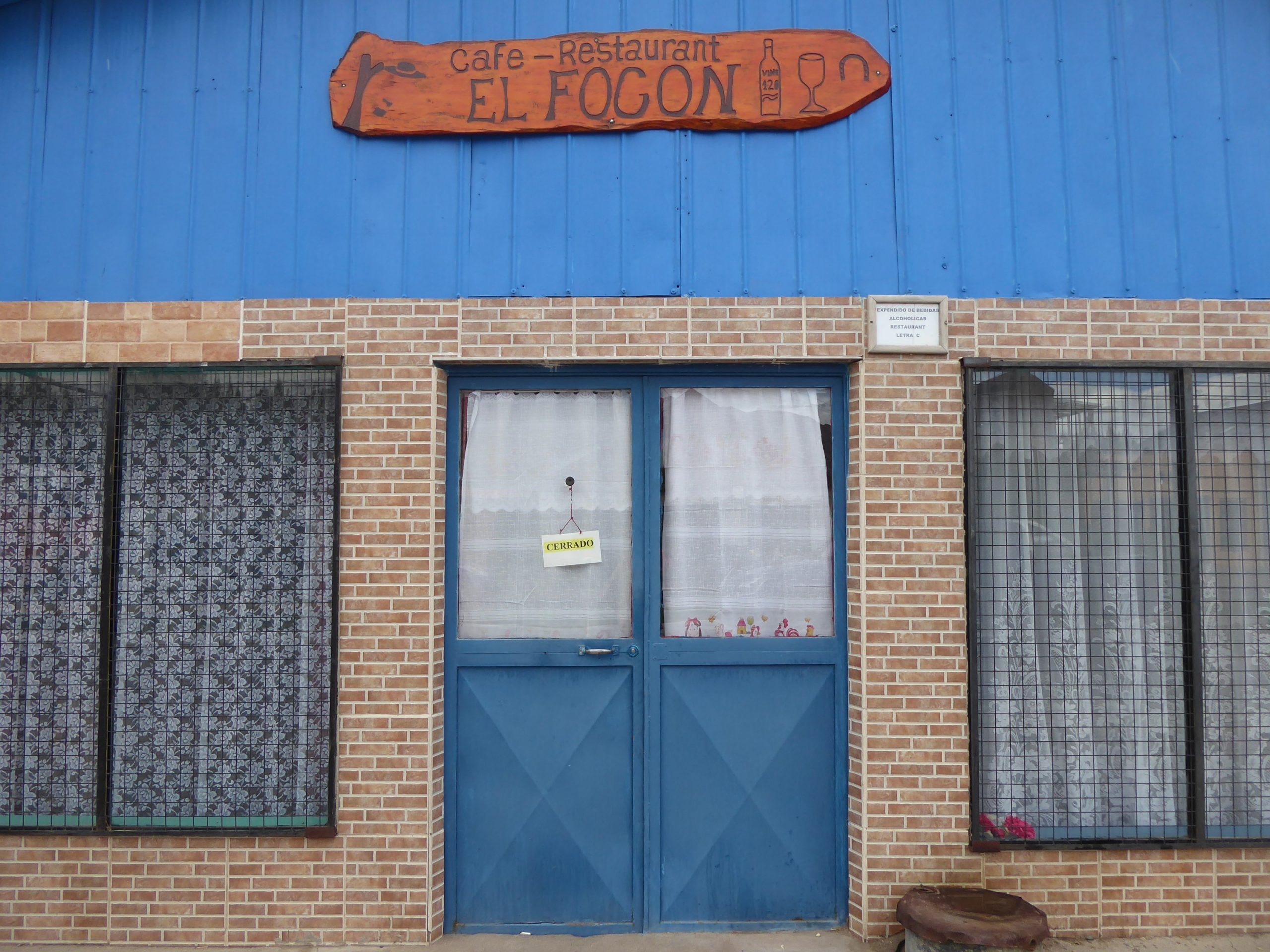
Or restricted to window service.
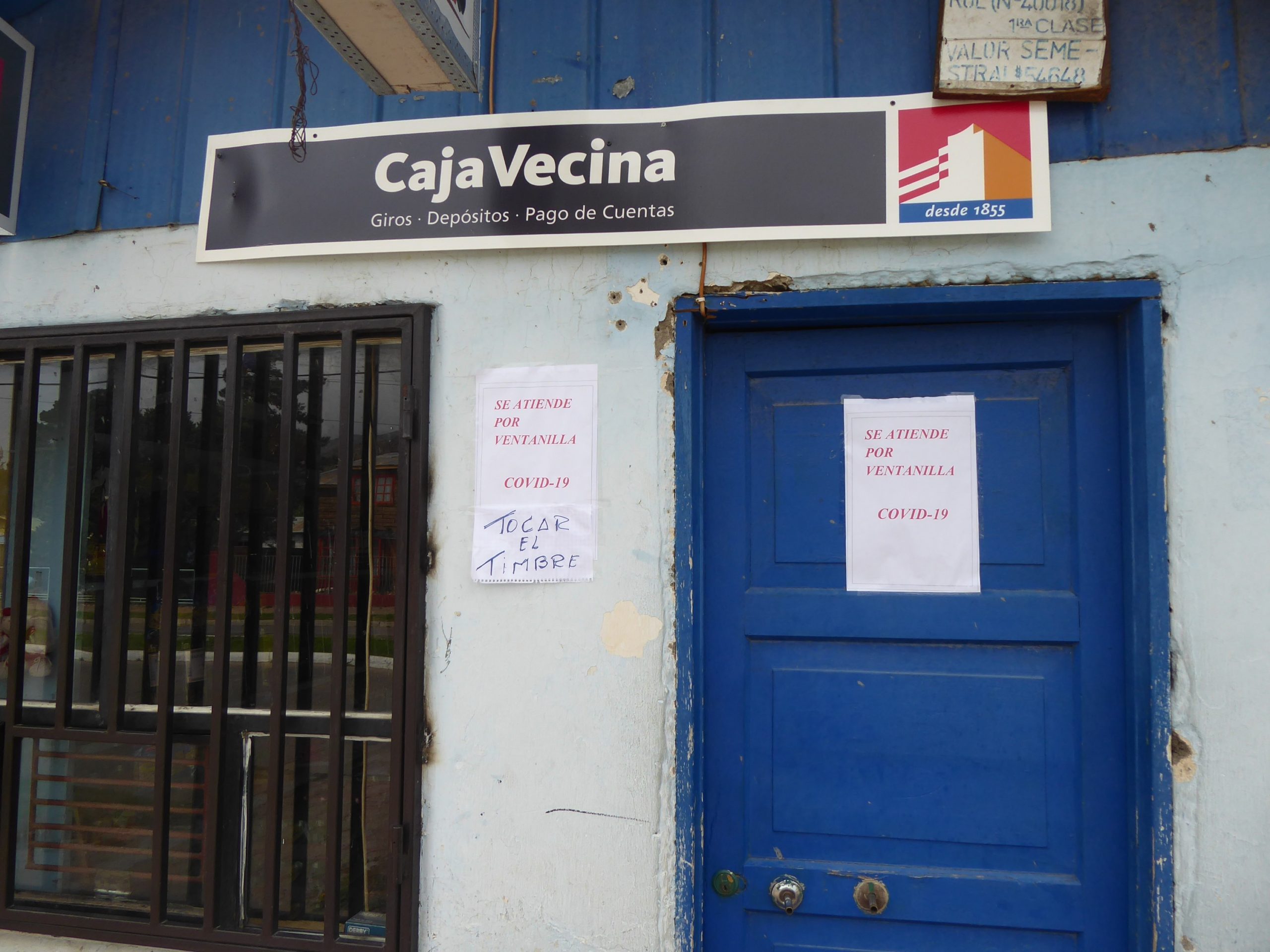
My friends helped me book the ferry, taking us across General Carrera Lake to Puerto Ingeniero Ibanez. They were constantly checking in to see if I had everything I needed. Their extraordinary caring touched me deeply.
After disembarking the ferry, we encountered a check point. Cars were stopped, information of our destination, and temperatures were taken. Although the uniformed men were very young and friendly, the military presence was unnerving.
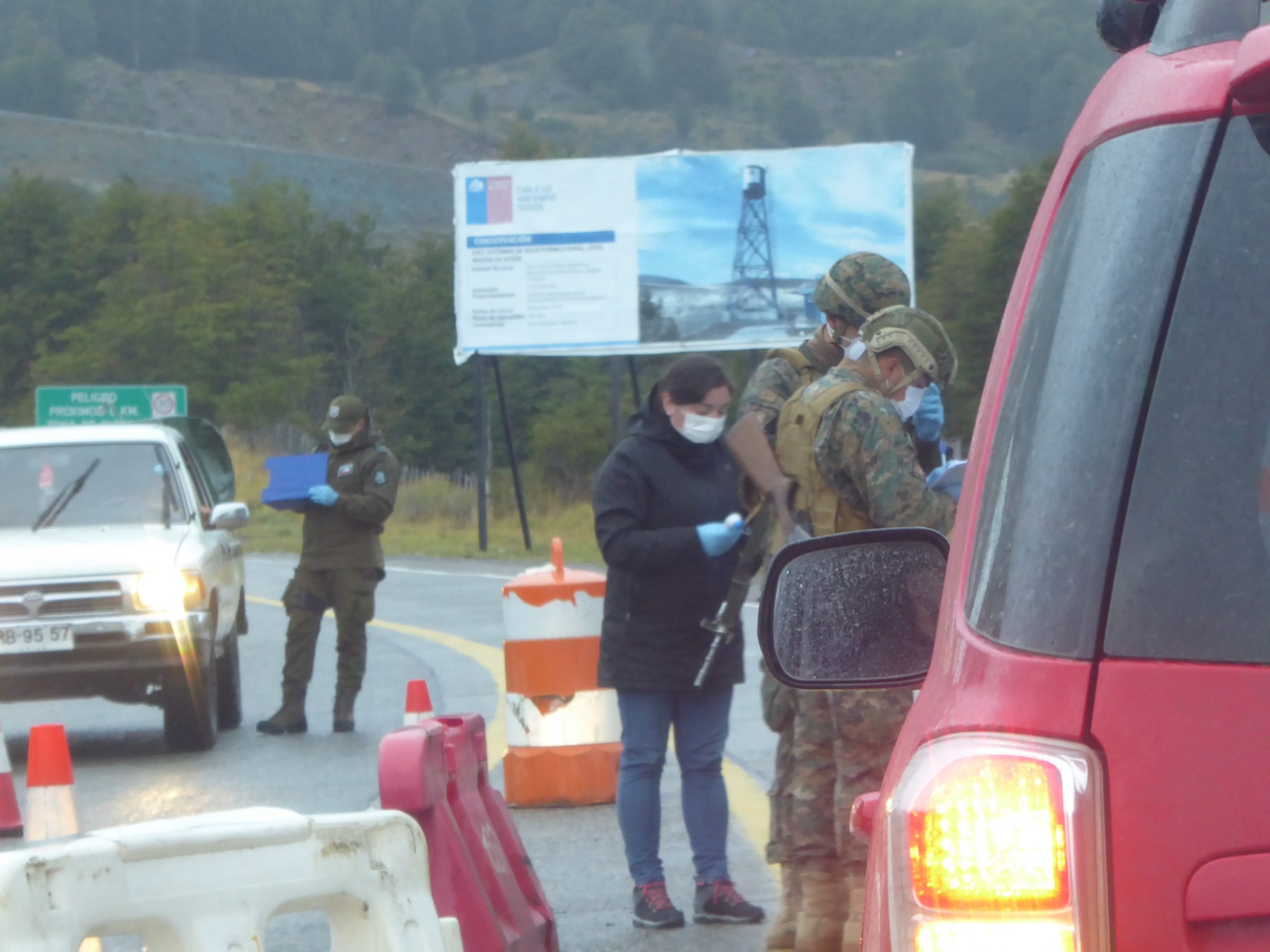
My friends waited ahead for me to get through, then our two car caravan proceeded north to Coyhaique.
The winding road was beautiful, despite some rough patches, and fallen rocks. With all the stress of the last few days, it was a great comfort having them lead the way, literally at every turn.
We stopped en route to say our goodbyes, elbow bumping replaced the huge hugs I´d hope to give them.
I gave a honk as I pulled up toward Carpe Diem.
Cesar’s and Roxana’s warm smiles were hugely welcoming. I felt as if I was returning to dear and trusted friends.
It was exactly what I needed.
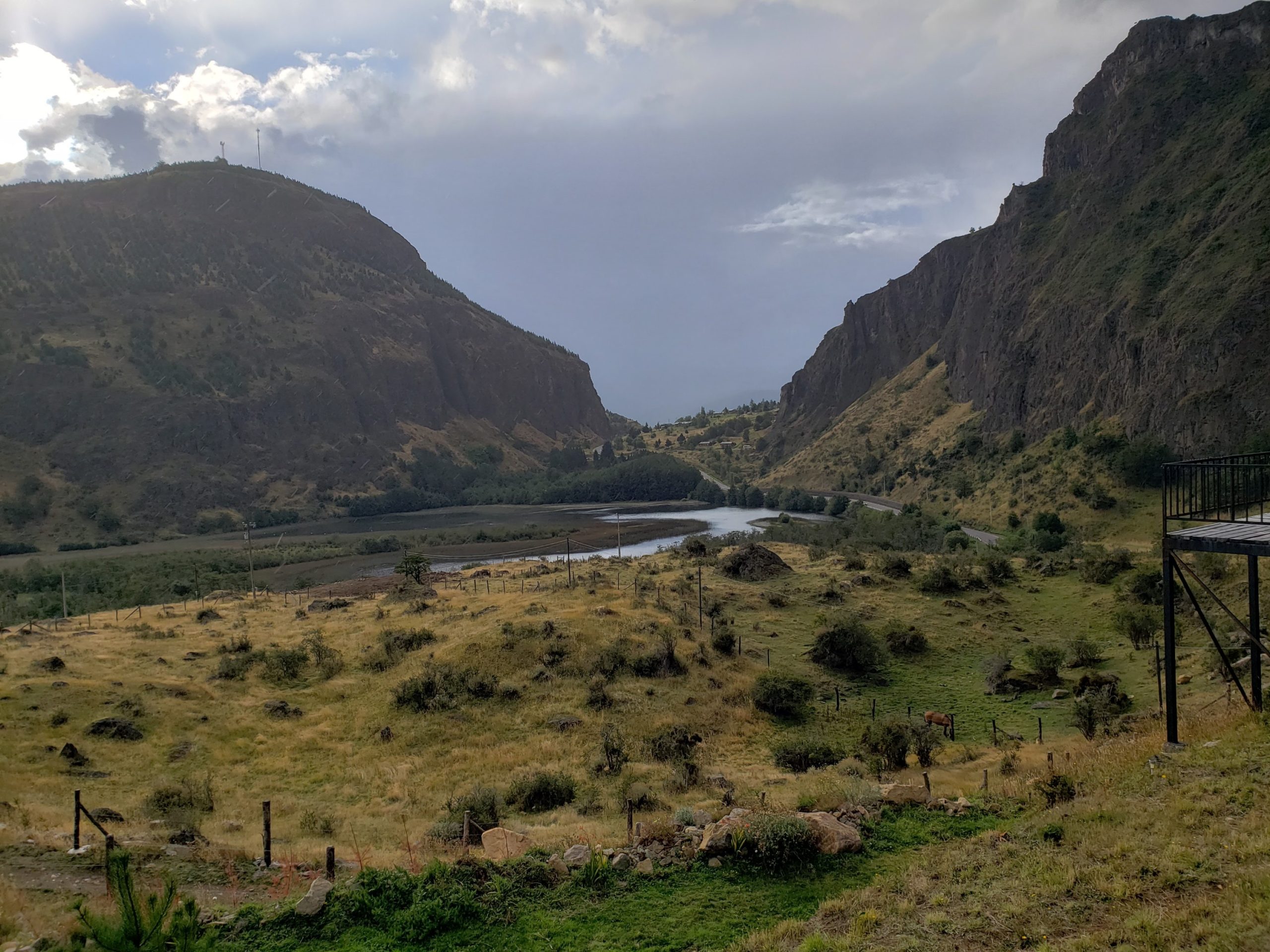
to be continued…
